Garden agl
with autumn,s rich colours





MINI FOREST
A woodland glade in a small city plot
COMEBACK KING

It’s time to reconsider pampas grass
Brilliant bark
Acers with seasonal interest
SURREAL SUCCULENTS
New cultivars and artistic displays at a cutting-edge nursery

PLANTING IDEAS • BEAUTIFUL
• EXPERT ADVICE
GARDENS
aglow
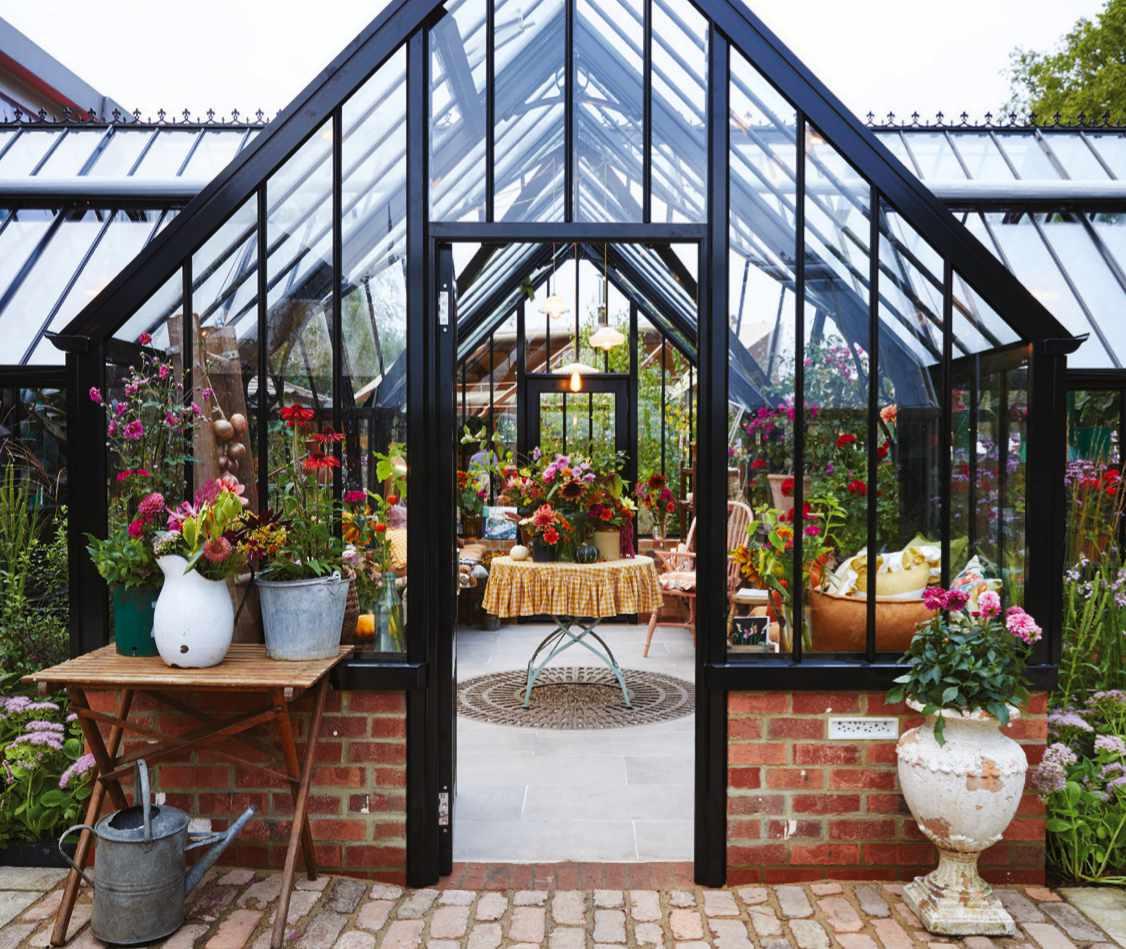
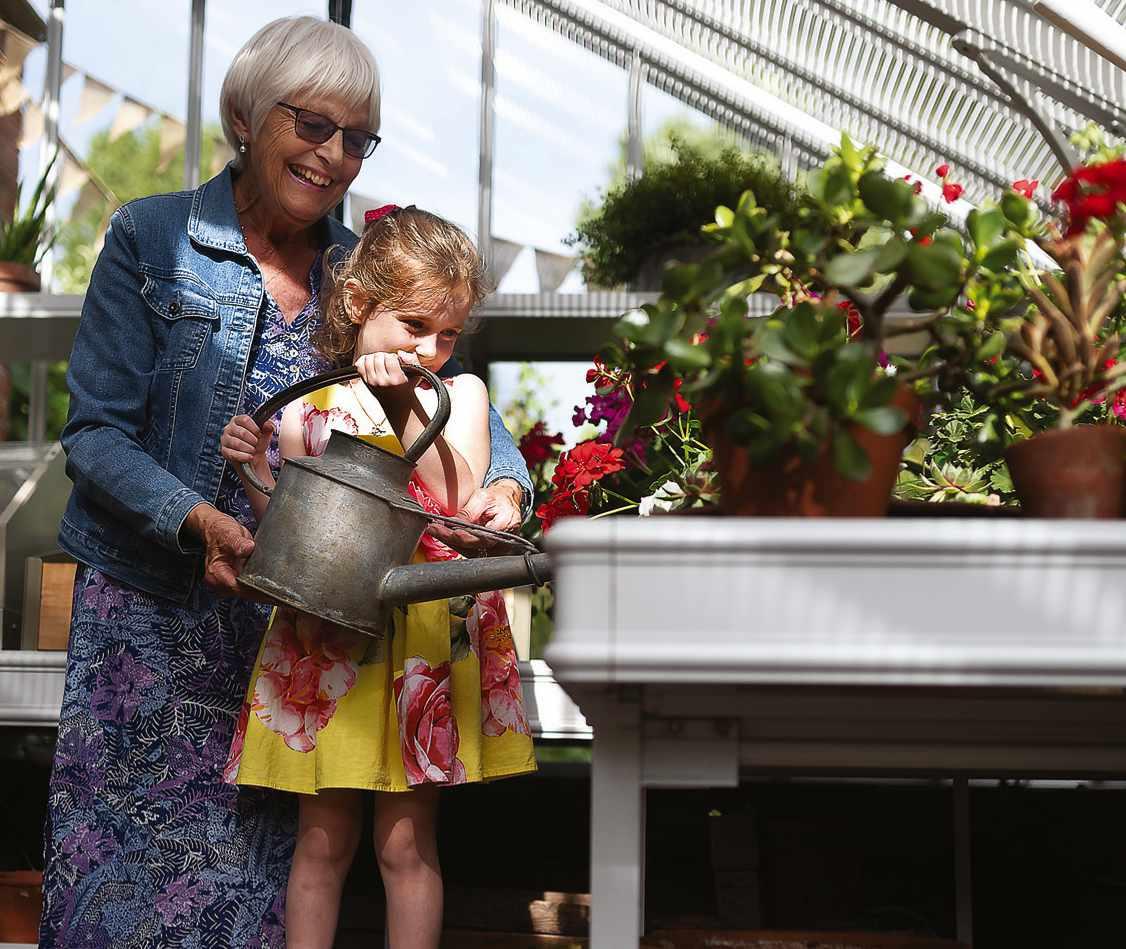

GREENHOUSES AND CONSERVATORIES Passionate about all that grows www.alitex.co.uk 01730 826900
It isn’t all that long ago that a garden magazine would fill its autumn issue with advice on tidying up the garden for winter, but we now embrace the highlights of the season, appreciating the beauty in the senescence of plants and the lasting interest from many perennials and grasses. This issue, we are indulging fully in autumn with several seasonal gardens, including our cover star, a small city plot that has been transformed into a mini woodland glade, bright with fiery foliage (page 82); and a roof garden in Utrecht (page 46) where designer Erik Funneman has used organically shaped beds and prairie-style planting to act as a foil against the starkness of the city skyline, giving the garden an immersive appeal lasting well into winter.
Other elements come to the fore now too, such as the textures and colours of tree trunks. Our feature on acer bark (page 52) offers some exciting examples that will draw you out into the garden long after the autumn leaves have fallen.
Controversially, this month we also reconsider the oft-mocked, much-maligned 1970s favourite, pampas grass (page 70). The current must-have plant for dried-flower enthusiasts, as well as trending on social media, it is once again growing in popularity with gardeners too, with its fluffy plumes bringing real drama in the lower light of autumn and winter. Plantsman Adrian Bloom explains why it’s time to look beyond its seedy reputation and suggests the best cultivars to grow. Plus there’s plenty more inspiration in these pages, with a visit to a specialist succulents nursery in Cornwall (page 86) and Jenny Barnes’s final container ideas feature (page 40).
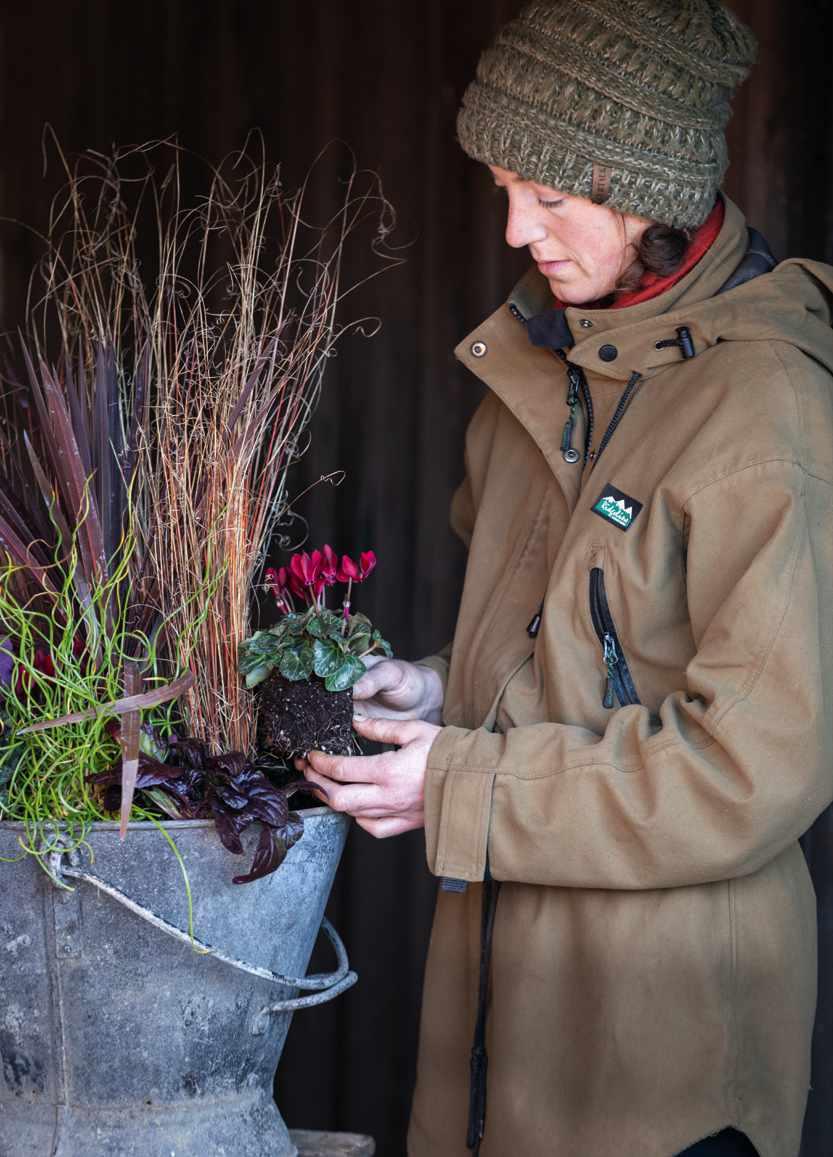
SCAN HERE



You’ll

Welcome
RICHARD BLOOM
Jenny Barnes completes her container series this issue with a final autumnal flourish, page 40.
STEPHANIE MAHON, EDITOR
JOHN CAMPBELL
NOVEMBER 2022 GARDENSILLUSTRATED.COM 3
see
gardensillustrated.com
@gardens_illustrated
@GdnsIllustrated
@gardensillustrated
QR codes in this issue. Use the camera on your smart phone to be taken straight to more inspiration on our website. Website
Instagram
Twitter
Facebook
Places
32 A heady brew Created over 50 years by plantsman Bernard Tickner, Fullers Mill in Suffolk is an exhilarating garden to visit at any time of the year but especially impressive in late autumn
46 Up on the roof Dutch designer
Erik Funneman has created a natural oasis for an urban roof terrace using an abundance of grasses planted in organically shaped beds
60 Set in stone Rock maestro
Peter Berg has crafted a garden mountainside using carefully placed rugged boulders
82 Golden glow Clever landscaping and a few key plants combine to create a restful woodland refuge in this small garden
86 Out of this world Discover Surreal Succulents, the Cornish nursery developing a range of exciting new hybrids
Plants
22 Plantsperson’s favourites Gravetye Manor’s head gardener Tom Coward chooses his top ten plants for November
40 Winter warmers Jenny Barnes suggests ideas for three autumnal containers that bring warm foliage, jewel-like flowers and bright berries to the fore
52 Plant profile: acers for bark Director of the Yorkshire Arboretum John Grimshaw, selects the best acers to plant for their brilliant bark
70 Back in style Nurseryman
Adrian Bloom grows several pampas grasses at The Bressingham Gardens and believes that it’s time to give them a second look
People
31 Gardening talent Meet Joshua Tranter, gardener at nursery owner John Massey’s private garden
68 Who’s who Ozichi Brewster, the gardener who is helping people to better health
76 Ornamental plants Textile and embroidery artist Lora Avedian takes her inspiration from the plants growing in her garden 130 Black magic Mulching and composting are at the very heart of successful growing, argues columnist Alice Vincent
Design
Regulars

NOVEMBER
2022 Contents
MARIANNE MAJERUS
of a new
resort 98 Change of space How to create distinct garden areas while maintaining a sense of cohesion 105 Sourcebook Nine of the best sheds for stylish storage
95 Design update Including news
plant-filled
3 Welcome 6 Contributors 11 Dig in This month: news of a new plum fit for a queen 17 Kitted out For getting organised in the garden 20 Subscription offer Save when you subscribe to the digital edition of Gardens Illustrated 28 The constant gardener Benjamin Pope is making plans for the year ahead 107 Books New books, from the gardens of Venice to the making of the RHS’s newest garden 125 Crossword and back issues 129 Next issue What’s coming up in our December issue 4 GARDENSILLUSTRATED.COM NOVEMBER 2022
SEE PAGE 20
COV E R I M AGE COVER IMAGE
Small west London garden by
Clive Nichols
ON T H E COV E R THE COVER
Gardens aglow, pages 32, 46, 60 and 82
Brilliant bark, page 52
Comeback king, page 70
Mini forest, page 82
Surreal succulents, page 86
EV E EVE N T S A N D NTS AND OFFE R S OFFERS
• Join us on a four-day cultural and horticultural tour of artists’ gardens in Sussex – page 15
• Save money when you subscribe to the digital edition of Gardens Illustrated – page 20

• Save 15% on fruit trees from Pomona Fruits† – page 121
†Offer is available only to UK readers (excluding Northern Ireland and certain other post codes).
Our packaging
Subscriber copies of Gardens Illustrated are now delivered in paper wrapping instead of recyclable plastic polywrap. This paper wrap is 100% recyclable and made from sustainably sourced paper. Please recycle in your kerbside recycling bin. We would love to hear your feedback, please contact us at paperwrap@immediate.co.uk
& save
Subscribe
take out a digital subscription to Gardens Illustrated
By using a simple planting palette confined by rugged rocks, Peter Berg has created a spectacular garden on a steep slope overlooking Germany’s Moselle Valley, page 60.
Contributors
Adrian Bloom
Adrian argues it’s time to think again about Cortaderia selloana, page 70. “Is pampas grass coming back into fashion? Probably not, but it sounds terribly controversial doesn’t it?”
Mat Reese
Mat visits Surreal Succulents in Cornwall, page 86. “Succulents make wonderful exotic additions to any garden. They’re particularly suitable for pot culture, and perfectly hardy given good drainage.”
Jason Ingram
Jason photographs therapeutic gardener Ozichi Brewster, page 68. “Meeting Ozichi was such an enjoyable experience. She was so full of energy and enthusiasm. It really was therapeutic.”

CONTRIBUTING EDITORS

James Basson
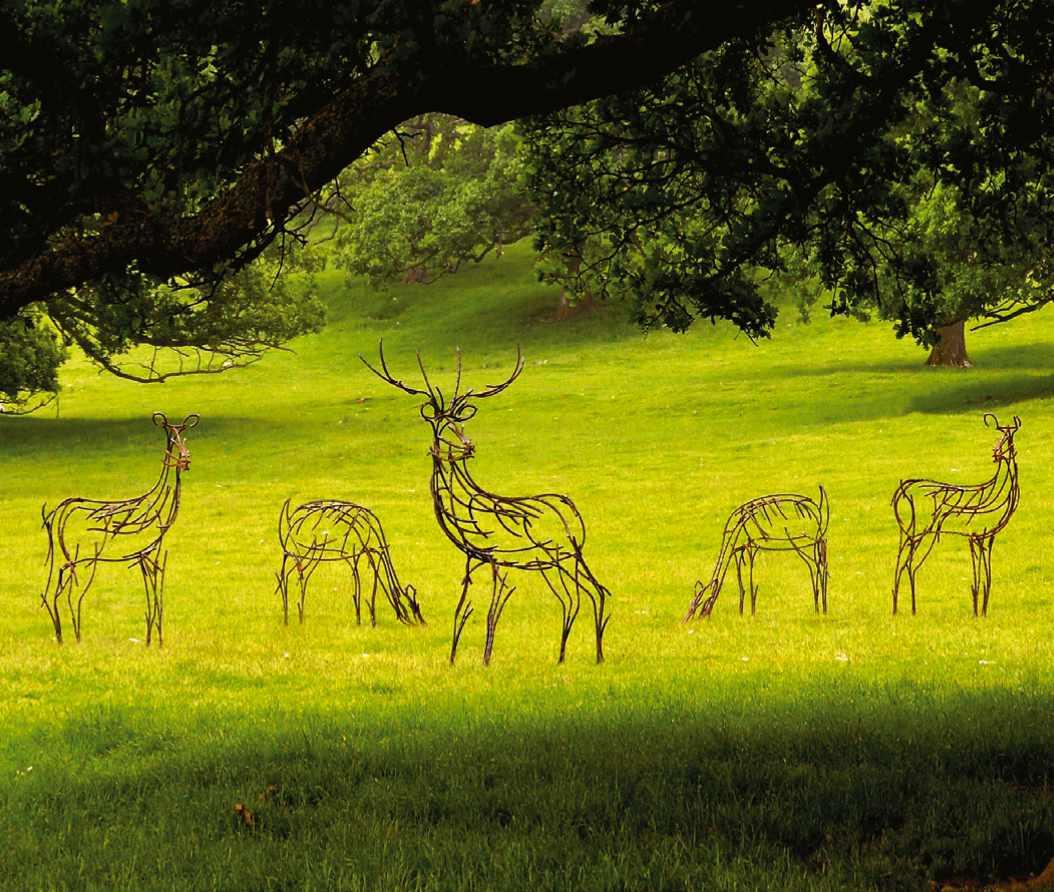
James lives in the South of France where he runs Scape Design, a practice specialising in low-maintenance and dry gardens. He is a fervent advocate for creating sustainable landscapes. The winner of four Chelsea Gold medals, he was awarded Best in Show in 2017.




Fergus Garrett
Fergus was appointed head gardener at Great Dixter by Christopher Lloyd in 1993. He is passionate about passing on his knowledge through student programmes at Dixter and worldwide lectures. He was awarded an RHS Associate of Honour in 2008 and an RHS Victoria Medal of Honour in 2019.

Anna Pavord
Anna’s books include her bestseller The Tulip and most recently Landskipping. For 30 years she was The Independent’s gardening correspondent. In 2000 the RHS awarded her the Veitch Memorial Medal. She lives and gardens in Dorset.

Dan Pearson
Dan is one of the UK’s best-known garden designers, familiar to many through his gardening columns in the Observer magazine. Eight of his gardens, including the Tokachi Millennium Forest in Japan, have won awards and he was awarded Best in Show for his garden at Chelsea in 2015.

Sarah Price
Sarah is one of the UK’s most sought-after garden designers who gained worldwide recognition for her designs for the 2012 London Olympic Park. She won Gold at Chelsea in 2012 and 2018, and was GMG Garden Columnist of the Year in 2016 for her design series in Gardens Illustrated

ANDREW MONTGOMERY ANDREW MONTGOMERY Gardening trousers with integrated kneepads w w w.genus.gs © The Royal Horticultural Society. Endorsed by the Royal Horticultural Society. Registered Charity No 222879/SC038262. rhs.org.uk No more wet knees www.andrewkaysculpture.co.uk 07740 306412 Free UK delivery LIFE SIZE ANIMAL SCULPTURE
ANDREW MONTGOMERY
GA R DENS
HOW TO GET IN TOUCH WITH US TOUCH
Subscription enquiries and back issues
UK 03330 162114
USA/CANADA 1 866 464 8103 (TOLL-FREE)
REST OF THE WORLD +44 1604 973722
UK buysubscriptions.com/contact buysubscriptions.com/gardensillustrated
USA/CANADA GILcustserv@cdsfulfillment.com, britsubs.com/garden
UK/REST OF THE WORLD Gardens Illustrated, PO Box 3320, 3 Queensbridge, Northampton NN4 7BF.
USA/CANADA Gardens Illustrated, PO BOX 37495, Boone, IA 50037-0495 USA.
Advertising enquiries
+44 (0)117 300 8805 heather.golden@ourmedia.co.uk
Editorial enquiries
+44 (0)117 300 8622 gardens@gardensillustrated.com
Gardens Illustrated, Our Media Ltd (an Immediate Group Company), Eagle House, Bristol BS1 4ST.

Syndication & Licensing
Gardens Illustrated is available for licensing and syndication. +44 (0)117 300 8787 emma.brunt@ourmedia.co.uk

App support

For App support please visit apps.immediate.co.uk/support
We abide by IPSO’s rules and regulations. To give feedback about our magazines, please visit ourmedia.co.uk, email editorialcomplaints@immediate.co.uk or write to Katherine Conlon, Our Media Ltd (an Immediate Group Company), Eagle House, Bristol BS1 4ST.

MAGAZINE CONTACTS
Deputy editor Sorrel Everton
Art director David Grenham
Deputy art editor Niki Goss
Production editor Juliet Giles
Digital editor Daisy Bowie-Sell
Commissioning content editor Veronica Peerless
Editorial and digital assistant Molly Blair
Botanical adviser Dr James Compton
Thanks this issue Jodie Jones, Rosanna Morris, Abigail Whyte
ADVERTISING
Group advertising manager Laura Jones 0117 300 8509 laura.jones@ourmedia.co.uk

Portfolio advertising manager Heather Golden 0117 300 8805 heather.golden@ourmedia.co.uk
Senior brand sales executive Mia Dorrington 0117 300 8266 mia.dorrington@ourmedia.co.uk
Brand sales executive Mica Enwright 0117 300 8756 mica.enwright@ourmedia.co.uk
Advertising designer Parvin Sepehr
INSERTS
Laurence Robertson +353 (0)876 902208
CIRCULATION, MARKETING, PROMOTIONS, PRESS & PR
Newstrade manager John Lawton
Subscriptions director Jacky Perales-Morris
Direct marketing manager Aimee Rhymer
Buyer Karen Flannigan
PR & Outreach Manager for Comms Emma Cooney emma.cooney@ourmedia.co.uk
MANAGEMENT
Chief executive officer Tom Bureau
Group managing director Our Media Andy Marshall
Managing director Our Media Marie Davies
Head of brand marketing Rosa Sherwood
SYNDICATION & LICENSING
Director of licensing & syndication Tim Hudson
PRODUCTION
Production director Sarah Powell
Group production manager Louisa Molter
Senior production co-ordinator Katty Skardon
THIS MAGAZ NE IS OWNED MAGAZINE AND PUBLISHED BY

Jan-Dec 2021 49,146* *Combined print and digital sales www.clavertoncloches.com +44 7521 467371 | enquiries@clavertoncloches.com CLAVERTON CLOCHES Exquisite Victorian cast-iron garden cloches. Designed and made in England for a lifetime of use. 1DWXUDO 5XEEHU *DUGHQ 6KRHV ) � www.poddyandblack.com EU Customers please use www.golden-rabbit.de
Standard subscription rates: UK £64.87 per annum; Eire and Europe �79 for 13 issues; rest of the world US$112 for 13 issues. Distribution Frontline, Peterborough. US distribution Source IPD/Speedimpex. Email intlquery@seymour.co.uk. Printed in the UK by William Gibbons Ltd. Gardens Illustrated (ISSN 0968-8920) (USPS 015-608) is published 13 times a year (monthly with a Summer issue in June) by Our Media Ltd (an Immediate Group Company), Eagle House, Bristol BS1 4ST, UK. Distributed in the USA by NPS Media Group, 2 Corporate Drive, Ste. 945, Shelton, CT 06484. Periodical postage paid at Shelton, CT and additional mailing offices. POSTMASTER: Send address changes to Gardens Illustrated PO Box 37495, Boone, IA 50037-0495. Unsolicited manuscripts or artwork are accepted on the understanding that the publishers incur no liability for their storage or return. The contents of this magazine are fully protected by copyright and may not be reproduced without permission. The Gardens Illustrated cover is printed on 250gsm FSC Amadeus produced in Belgium by Burgo. The Immediate Media Company Limited is working to ensure that all of its paper is sourced from well-managed forests. This magazine can be recycled for use in newspapers and packaging. Please remove any gifts, samples or wrapping and dispose of it at your local collection point. All prices are correct at time of going to press. © Our Media Ltd (an Immediate Group Company) 2022. Member of the Audit Bureau of Circulation. ISSN 0968-8920. EDITORIAL Editor
Stephanie Mahon
The patient gardener
Much like gardening, a successful investment strategy needn't be complex. It just requires time and patience. Here’s how to tend to your investments with global equity investment trust, Alliance Trust.
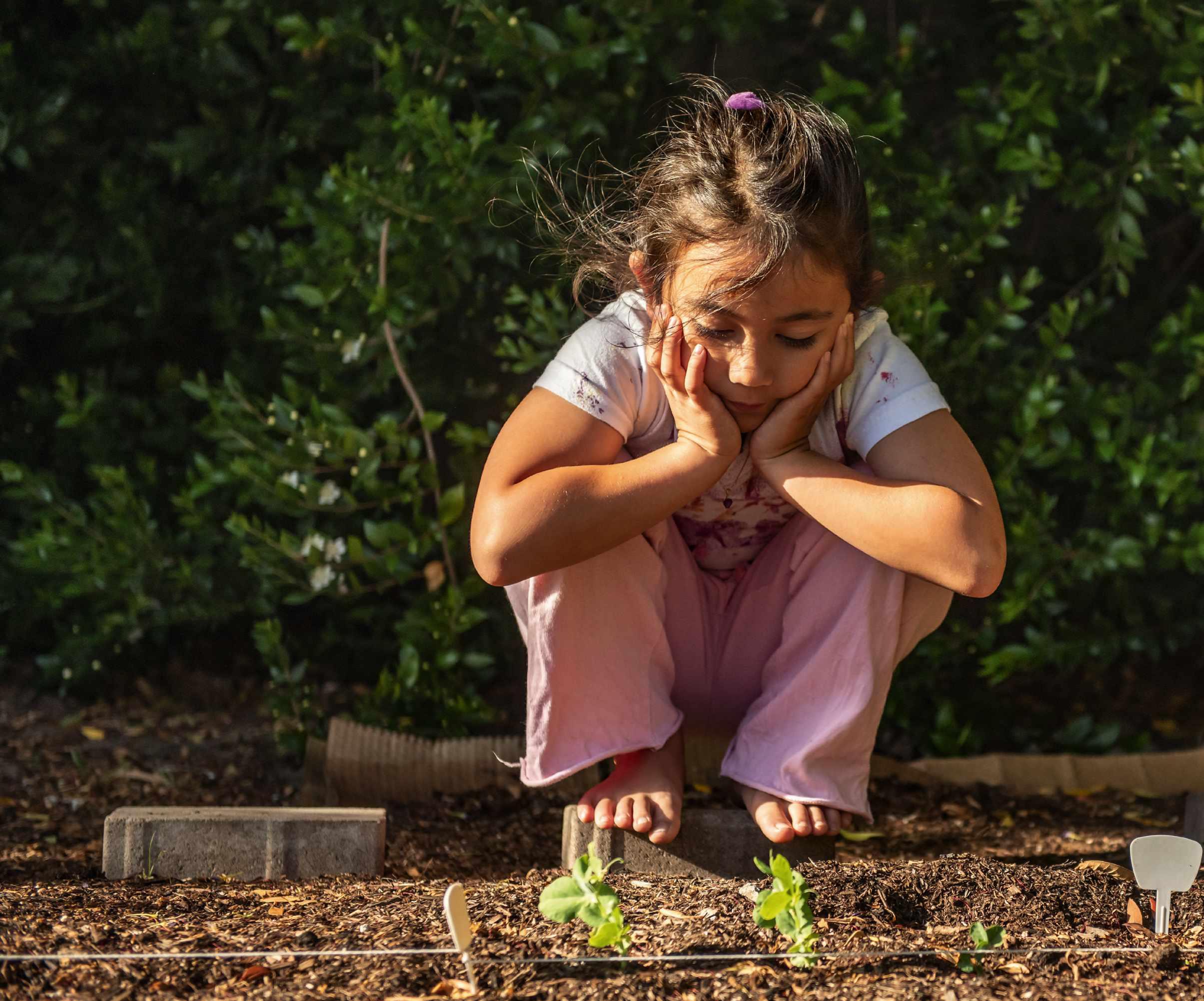
Could you profit from patience?
You may not realise it, but gardening can teach you a great deal about investing.
Both are gentle processes that involve careful selection, whether it’s stocks or seeds. And both benefit from letting things grow in their own time – patience is often the key to better yields, whether it’s in your plot or your portfolio.
In fact, Alliance Trust research shows that investing with patience (instead of moving your investments to avoid ups-and-downs) increased potential growth by a significant amount – as much as 141% over the course of 30 years.*
But even the most patient gardener can feel daunted by the prospect of investment, so here are a few tips for more methodical investing.
Select your plot
Start by finding the right place to invest for the long term. Think of it this way: an apple tree can take up to ten years to start producing fruit, and investing takes time to pay off too.
Find somewhere that you feel comfortable investing for a longer period – remember, your Patience Pot could have been worth over 192,000 over three decades* if you left your investment alone instead of moving it often, so it pays to find the right plot.
Sow the seed
Before you plant the seeds of an investment, think about your short-term and long-term financial goals and how much capital you have available. Based on this information, you’ll be able to select an investment approach that’s right for you.
Again, timeframes are key – you’ll want to think about what’s going to keep getting you the results you want a few years down the road, not just what’s likely to perform well in the immediate future. Investing is more like growing trees than flowers – results are far from instant, measured in years rather than seasons.
Companion planting
The best gardens brim with variety. In investment terms, this is referred to as ‘diversification’ – a portfolio that includes lots of different kinds of asset. But when it comes to your holdings, diversification is about more than appearances; it’s one of the main ways you could protect against unforeseen ups and downs in the markets.
The Alliance Trust portfolio includes the very best companies from different countries, sectors and styles – just as you might spread your resources throughout a mix of crops with different seed-to-harvest cycles in the aim to lower risk.
Reap what you sow
Frequent care is essential for any healthy garden, and the simple act of watering and weeding plants cannot be underestimated. These small acts allow plants to thrive and grow to their full potential. Of course, pesky
Advertisement
wildlife and insects can cause a few hiccups along the way, but with enough patience, you’ll be duly rewarded with a beautiful, blossoming garden.


With investing, you need to be careful that you’re giving your investments the right type of care. Regular check-ins are necessary to make sure you hit your goals, but remember to think long-term. There will always be ups and downs, just as there will always be ‘bumper crops’ as well as occasions when your harvest might not be quite as bountiful.
According to Alliance Trust research, the ‘impatient investor’ could pay an Impatience Tax of more than £192,000 so it pays to let things take their course.*
Patience
If there is one lesson that gardening teaches, it’s patience. When you plant a seed, you won’t see immediate signs of growth. Nevertheless, a gardener will continue to nurture and care
for the seed; without so, it would not be able to germinate. Investments are much the same; without patience, you’ll give your seeds less chance of flowering.
This is vital when it comes to investing and impatience is something that could cost you a lot more than you realise. Impatient investing costs UK investors a staggering £1.3 billion in just one year.**That’s why global equity investment trust, Alliance Trust, has been practising the long-term approach for almost 135 years, supporting shareholders and their families for generations to make the most of practising patience. Discover the value of staying power at alliancetrust.co.uk/patience
*The Profit from Patience Report, Alliance Trust, September 2022. About the research: The data model compares two hypothetical investors each making an initial investment of £10,000 in Alliance Trust in 1992 and then adding 10% of the average national salary every month for the next 30 years. The patient investor remains in the market throughout while the impatient investor sells 25% of their holdings whenever the market dips 5% in a single day and buys back in when the market recovers 10% in a single day using cash accumulated from monthly contributions, previous redemptions, and accrued interest. By September 2022, the impatient
investor has accumulated £217,884, while the patient investor is sat on £410,757; in other words, the impatient investor has lost out on over £192k. NB: The model uses the Alliance Trust share price as a proxy for the market. Source: Alliance Trust.
**A national estimate based on 93 investors that indicated they would sell their investments if their portfolio fell by 5% over the course of a week. Total representative sample of 2,000 respondents adjusted for the UK adult population from ONS data (www.ons. gov.uk/peoplepopulationandcommunity/ populationandmigration/populationestimates/ datasets/populationestimatesforukengland andwalesscotlandandnorthernireland). Investment returns based on historic returns of FTSE100 (www.ig.com/uk/trading-strategies/ what-are-the-average-returns-of-theftse-100--200529). Cash return based on a simple average of the Bank of England interest rates from the last 12 months. 1.3bn figure = investment sold x difference between the average FTSE100 return and the average cash interest rate return.
When investing, your capital is at risk. The value of your investment may rise or fall as a result of market fluctuations and you might get back less than you invested. TWIM is the authorised Alternative Investment Fund Manager of Alliance Trust PLC. TWIM is authorised and regulated by the Financial Conduct Authority. Alliance Trust PLC is listed on the London Stock Exchange and is registered in Scotland No SC1731. Registered office: River Court, 5 West Victoria Dock Road, Dundee DD1 3JT. Alliance Trust PLC is not authorised and regulated by the Financial Conduct Authority and gives no financial or investment advice.
Advertisement
“An apple tree can take up to ten years to start producing fruit, and investing takes time to pay off too.”
of
Inspired by the beauty of the natural world, each piece in the Sherwood Forest collection has been carefully crafted by hand, giving an individuality that reflects the unique qualities of the leaf.
Real leaves from Sherwood Forest, Britain’s iconic ancient oak forest, are at the heart of the highly skilled technique used to create these distinct pieces. Each leaf is placed on the silver, which is then hand sawn following the detail of the leaf. As the leaf can only be used once, each piece of jewellery is one of a kind. The leaves are hand cut and then textured with different silversmithing hammers or engravers.
Every piece of jewellery has the tree species written on the back and can be coated in 18ct yellow or rose gold.
Other leaves available –Beech, Hawthorn, Hazel, Rowan, Silver Birch Wild Apple and Willow

S������ S�������
Hello@secretsofsherwood.com 01623 706400 :MWMX SYV [IFWMXI XS WII SYV IRXMVI VERKI SJ TVSHYGXW
www.secretsofsherwood.com
BY DENIS BRIHAT

DIG IN
What’s new, what’s growing and what’s going on this month
Caught on camera
Over the past 30 years, Domaine de Chaumont-sur-Loire has become well known among garden lovers thanks to its annual International Garden Festival. In winter, the estate’s Centre for Arts and Nature also hosts an annual photography exhibition, Chaumont-Photo-sur-Loire, which brings together some of the world’s best nature photographers. This year’s exhibition includes striking black-and-white photographs of trees by English photographer Michael Kenna, set alongside works by French photographers Éric Bourret, Flore and Denis Brihat, whose close-up observations of flowers and vegetables, such as the sliced artichoke heart above, have an almost abstract quality. Until 26 February 2023, admission �14. domaine-chaumont.fr
NOVEMBER 2022 GARDENSILLUSTRATED.COM 11
ARTICHAUT COUPE 1963
News
COMPILED BY MOLLY BLAIR
PLANT NOW
November is the perfect month to plant a fruit tree, and this new plum, Prunus domestica ‘Malling Elizabeth’, would make a sweet tribute to the late Queen. Released in the summer to mark The Queen’s Platinum Jubilee, ‘Malling Elizabeth’ is a heavy cropping plum that produces fruits with a juicy yellow flesh in July. Bareroot plants cost £31 from frankpmatthews.com

Seeing the light
As Christmas creeps closer, it’s time once again to head out into some of the UK’s best gardens and gaze at glowing lights. From the chance to explore illuminated exotic plants among the famous biomes of the Eden Project in Cornwall (above) to a frostier trail in Edinburgh, where the Royal Botanic Garden will be illuminated with more than a million lights, there are fabulous trails to discover across the UK. Now in its tenth year, the famous light trail at the Royal Botanic Gardens, Kew, has several new installations, including 16 floating UV feathers that will sway in the breeze, while a new trail at RHS Garden Bridgewater will weave its way through yew domes covered in fairy lights. Find your nearest light trail at gardensillustrated.com/lighttrails

A year of wise words
As we become increasingly aware of our need to live more in tune with the seasons, an increasing number of almanacs seem to on hand to help us. In time for the new year, gardening legend Alan Titchmarsh publishes The Gardener’s Almanac (Hodder & Stoughton, £14.99), a month-by-month guide packed with gardening advice, inspiration and his years of gardening knowledge. Along with what to sow and grow each month, the book features seasonal recommendations of gardens to visit, wildlife to spot and poems, music and books to seek out. You can find out more in our interview with Alan at gardensillustrated.com/alantitchmarsh

12 GARDENSILLUSTRATED.COM NOVEMBER 2022
EDEN PROJECT
FRANK P MATTHEWS LTD
Find more plants named for Elizabeth II at gardensillustrated.com/elizabethplants
Finding the plot
After a four-year restoration project, the cherry-laurel maze at Grade II-listed Glendurgan Garden in Cornwall has now been restored by the National Trust and is ready to welcome back visitors. Originally planted in 1833, by Quakers Alfred and Sarah Fox to entertain their 12 children, the maze had been starting to show signs of wear and tear from the footfall of numerous visitors and the wet Cornish climate. As part of the restoration, plants have now been pruned to remove older woody sections and allow more vigorous material to grow through. The team hopes the improved maze, complete with a new octagonal oak summer house with thatched roof, will continue to delight visitors for the next 200 years. nationaltrust.org.uk

Twists and turns
Christophe Guinet, the French botanical artist better known as Monsieur Plant, who creates garden-like sculptures out of everyday objects such as shoes, has created a new series of nature-inspired artworks called TWIST. The contorted sculptures are made out of plaster and then covered with pine bark to create remarkably life-like tree trunks twisted into impossible knots that question nature’s ability to transform and adapt. Discover more at monsieurplant.com

Masters of art
At the turn of the 17th century, Dutch artists were among the first to produce paintings that exclusively depicted flowers. These early works are now the subject of a National Gallery exhibition hosted by Compton Verney in Warwickshire, a Georgian manor house set in a Grade II-listed ‘Capability’ Brown landscape. Focusing on ten masterpieces, the exhibition charts the development of the genre, from early symmetrical paintings to the more relaxed and overlapping compositions that characterised later works. Paintings from leading artists including Ambrosius Bosschaert the Elder, Rachel Ruysch and Paulus Theodorus van Brussel will be on display. Until 15 January 2023, admission £18.70. comptonverney.org.uk

3 FOR THE GARDEN… LANTERNS


HANGING
SCAN HERE

You can find more lantern options to bring a glow to your garden at gardensillustrated.com/ lanterns
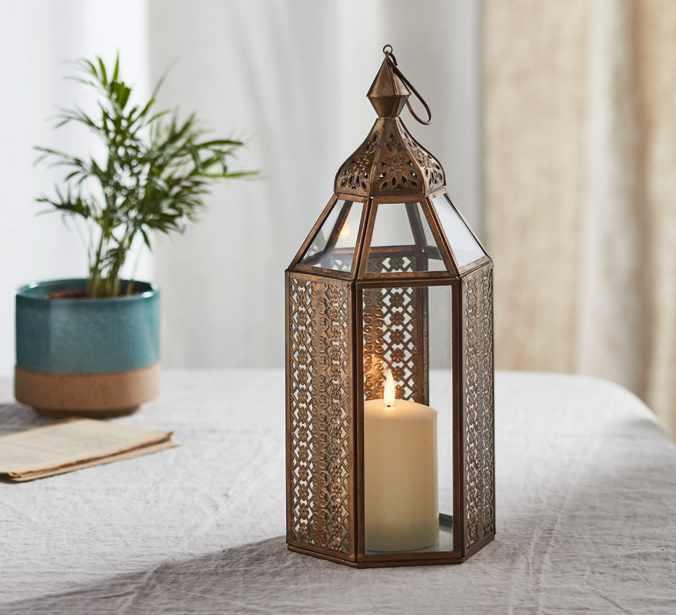 NATIONAL TRUST IMAGES / JOHN MILLER
Hanging Tulip Lantern, Brushed Brass, £37.99, Waitrose & Partners, waitrosegarden.com
SLEEK Ablington Lantern, large, £52, Garden Trading, gardentrading.co.uk
CLASSIC
Asilah Artisan Moroccan Lantern Duo with TruGlow Candles, £80.99, Lights4fun, lights4fun.co.uk
NATIONAL TRUST IMAGES / JOHN MILLER
Hanging Tulip Lantern, Brushed Brass, £37.99, Waitrose & Partners, waitrosegarden.com
SLEEK Ablington Lantern, large, £52, Garden Trading, gardentrading.co.uk
CLASSIC
Asilah Artisan Moroccan Lantern Duo with TruGlow Candles, £80.99, Lights4fun, lights4fun.co.uk
© THE
CHRISTOPHE
GUINET PAULUS THEODORUS VAN BRUSSEL, FFRUIT AND FLOWERS
1789
NATIONAL GALLERY, LONDON
DIARY: NOVEMBER
COMPILED BY MOLLY BLAIR AND ANNIE GATTI
1 Into the Woods
Head to Kudhva, the off-grid hideout in Cornwall, for a Bonfire Night party with SSAW Collective, a community of chefs, florists and growers. The afternoon and evening event will include talks and dinner cooked over an open fire. 5 November, 4.30pm-12am. From £15. Kudhva, Sanding Road, Trebarwith Strand, Tintagel, Cornwall PL34 0HH. ssawcollective.com

2 Wilding Rural Enfield
Find out more about rewilding from this online talk by Ian Russell, principal engineer at Enfield Council’s Watercourse Team, which will explain how a combination of natural flood management and rewilding measures is helping to improve wildlife habitats in the former royal forest of Enfield Chase. 7 November, 6pm-7pm. £5. londongardenstrust.org
3 Handmade in Britain
Browse more than 100 UK-based designers and artists, including Alison Stockmarr’s book prints (right), as the Handmade in Britain craft fair returns to Chelsea Old Town Hall this month. 11-13 November, 11am-6pm (Friday to Saturday), 11am-5pm (Sunday). From £7. Chelsea Old Town Hall, King’s Road, Chelsea, London SW3 5EE. handmadeinbritain.co.uk
4 Heritage Networking Opportunity
Engage with other volunteers and professionals involved in the heritage sector at this free event organised by the Heritage Trust Network. 15 November, 9am-5pm. Queen Elizabeth II Conference Centre, London SW1P 3EE. hbpge.hall-mccartney.co.uk
5 Gardens In My Life with Arabella Lennox-Boyd
Learn more about the gardens created by designer Arabella Lennox-Boyd – from her own garden at Gresgarth Hall in Lancashire to recent projects, such as Bonnington House near Edinburgh (right) – at the National Garden Scheme’s annual lecture. Also available to stream online. 17 November, 7pm. £18. Royal Geographical Society, 1 Kensington Gore, London SW7 2AR. ngs.org.uk

6 A Taste of West Wales Winter Festival
Sample the food and drink of Wales and the Borders, and discover more about Welsh arts and crafts at this weekend celebration of Welsh culture at the National Botanic Garden of Wales. 19-20 November, 10am-4pm. National Botanic Garden of Wales, Middleton Hall, Llanarthe, Carmarthenshire SA32 8HN. Tel 01558 667149, botanicgarden.wales
7 Natural Networks
Discover more about the many intersections between plants, places, people and the planet at this year’s Society of Garden Designers’ Autumn Conference. Speakers include Chelsea Best in Show designers Lulu Urquhart and Adam Hunt, Ula Maria, Tom Hoblyn and Professor Helen Woolley. The event will be live streamed. 26 November, 9.45am-5.15pm.

From £70. Royal Geographical Society, 1 Kensington Gore, London SW7 2AR. sgd.org.uk
8 Apple Tree Winter Pruning Course
Learn how to prune overgrown apple trees at Harvey’s Garden Plants. The trees at the nursery were planted in 1972 and attendees will be welcome to participate in pruning with guidance from Roger Harvey. 2-3 December, 10am-1pm. £40. Harvey’s Garden Plants, Great Green, Thurston, Bury St Edmunds, Suffolk IP31 3SH. harveysgardenplants.co.uk
9 Christmas Wreath Workshop
Get the Christmas season off to a floral start with this luxury wreath workshop at the Judith Blacklock Flower School, in aid of the gardening charity Perennial. The workshop will be followed by a three-course lunch. 5 December, 10.30am-3pm. £195. 4-5 Kinnerton Place South, Knightsbridge, London SW1X 8EH. Tel 0800 093 8510, perennial.org.uk
10 Block Printing Course with Hares Tail Printing
Book now for this one-day introduction to block printing with Speronella Marsh, the founder of Hare’s Tail Printing. The course will explore the fundamentals of block printing and you’ll practise on paper and fabric. 7 February 2023. £130. Leighton Lodge, Leighton, Shrewsbury, Shropshire SY5 6RN. Tel 07769 707717, mastertheart.uk
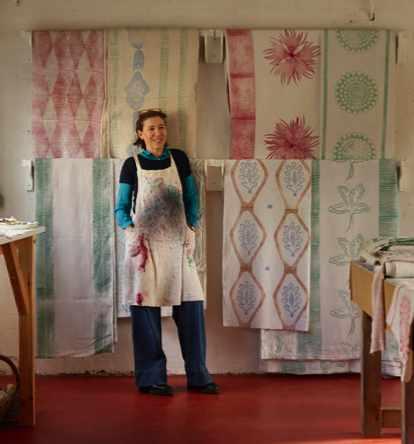
All information is correct at time of going to press, but may be subject to change. Tickets for events may be limited and may have to be booked in advance.
In our October issue we featured the Young Botanical Artist of the Year competition. The closing date for entries has been extended to 30 April 2023 and digital media will now be accepted.
14 GARDENSILLUSTRATED.COM NOVEMBER 2022
DIG IN EVENTS
RACHEL SMITH
3 5 11 7 6 1 JASON INGRAM
ALISON STOCKMARR
TOUR GI Reader
Artists’ Gardens of Sussex
A four-day cultural and horticultural garden tour that will explore some of the most evocative gardens of Sussex and some over the border in Kent
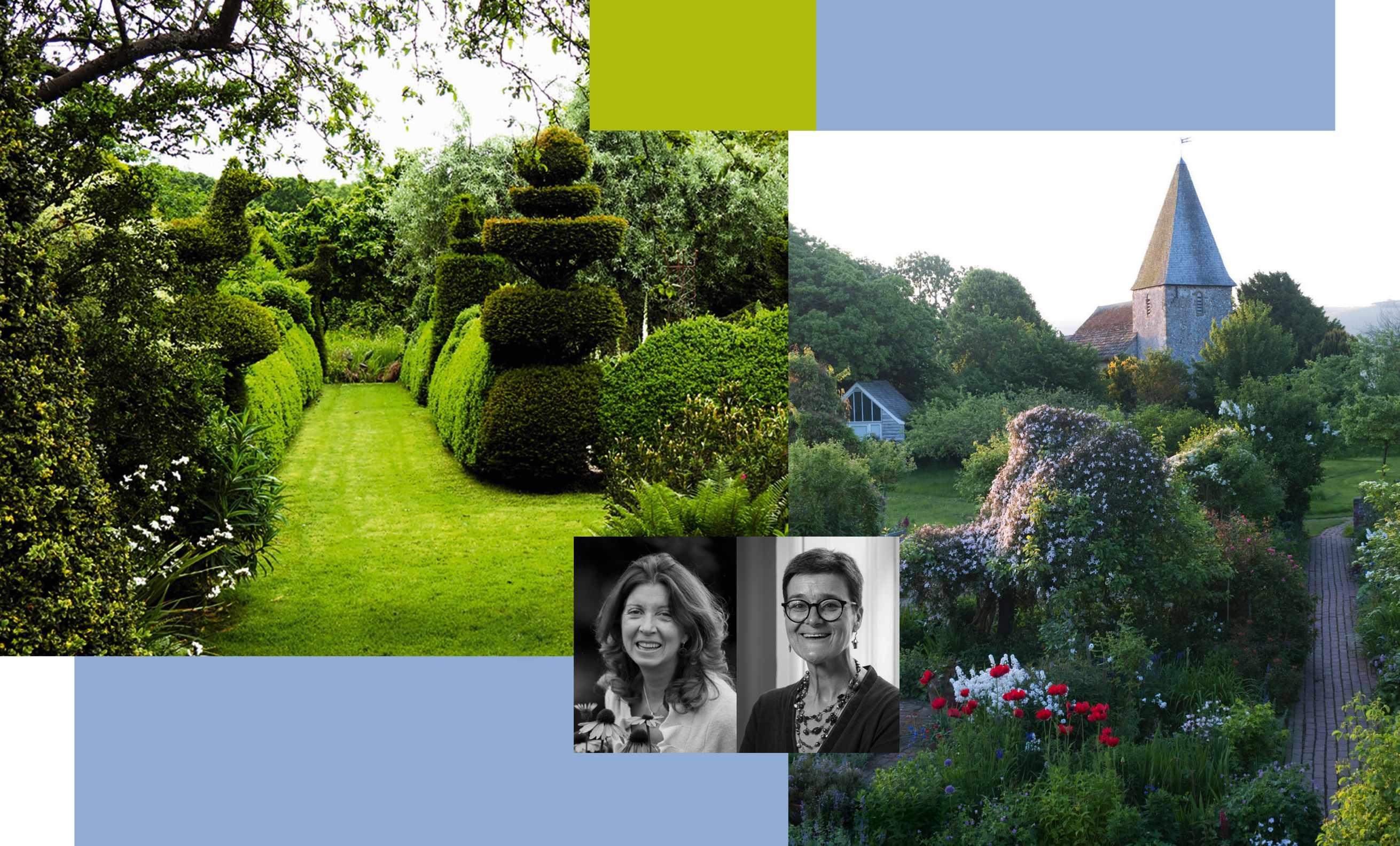
The concept of artists’ gardens can be interpreted in many ways, especially as the creation of all gardens can be considered an art form. For this tour, we’re homing in on gardens that have been owned or created by many different artists, examining how these gardens play a role in the artist’s work. We’ll visit Monk’s House, where Virginia Woolf penned many of her novels in the garden writing lodge, and nearby Charleston, the country home of her painter sister Vanessa Bell and Duncan Grant, where the Bloomsbury Group gathered and found inspiration in its beautiful gardens. We also visit the gardens of contemporary artists, including Balmoral Cottage, where we’ll discover how Charlotte Molesworth’s topiary work has influenced her paintings; Fairlight End with its wildflower meadows that provide Robin Hutt with the plant material for her extraordinary photographs; and Sussex Prairie Garden where boldly planted swathes of perennials are interspersed with modern sculptures. Our base throughout the tour will be Ockenden Manor Hotel, a charming and tranquil Elizabethan Manor House that offers good food and warm hospitality, as well as a new spa and swimming pool.
30 MAY 2 JUNE 2023
EVENT DETAILS
Price per person, based on two people sharing, is £3,250 (a single supplement of £190 is levied by the hotel).
The price includes three nights’ dinner (with wine), bed and breakfast accommodation at Ockenden Manor, plus four lunches as stated in the itinerary and transport from Haywards Heath railway station. Please note that Boxwood Tours uses hotels of character featuring a variety of rooms and styles. The price does not include extras at the hotel, or travel insurance. For more details and for an in-depth itinerary with details of day-to-day visits, meals, etc, please contact Boxwood Tours.
FOR INFORMATION AND BOOKING, PLEASE CONTACT
Boxwood Tours, 1 West Street, Buckingham HK18 1HL, UK. Tel +44 (0)1341 241717. Email mail@boxwoodtours.co.uk
Website boxwoodtours.co.uk
The tour has been arranged exclusively for readers of Gardens
Illustrated by Boxwood Tours Quality Garden Holidays, a specialist garden tour company set up in 1990. Please note that itineraries may be subject to change for reasons beyond Gardens Illustrated’s control. The tour is financially protected by the ATOL scheme. Please see booking conditions for further information or for more information about financial protection and the ATOL Certificate go to: arenatravel.com/why-arena/financial-protection
PETER M CLARKE; THE NATIONAL TRUST PHOTOLIBRARY / ALAMY STOCK PHOTO.
Balmoral Cottage.
Monk’s House.
NOVEMBER 2022 GARDENSILLUSTRATED.COM 15
The tour will be hosted and led by garden historian and garden designer Marion Mako (left) along with horticulturist and specialist in historic gardens Sophie Piebenga

KITTED OUT

Everything you need to organise your garden this autumn






COMPILED BY MOLLY BLAIR AND NIKI GOSS


NOVEMBER 2022 GARDENSILLUSTRATED.COM 17 MAIN IMAGES @THESHED_PHOTOSTUDIO
DIG IN SHOPPING
2 4 3 5 6 7 1 9 8
1. Potting Shed Brush and Pan, W 19cm x H 22cm, £55, littlegardenshop.com 2. Spruce Wild Bee House, W 20cm x H 17cm x D 9cm, £34.99, crocus.co.uk 3. Bird Table 2 in 1 Cleaning Tool, £4.95, 0800 085 4865, arkwildlife.co.uk 4. Canvas Leaf Bag, £20, gardentrading.co.uk 5. Compost Silo Steel and Wood, 470L, W 75cm x H 95cm x D 75cm, £344.99, wayfair.co.uk 6. Niwaki Hori Hori Japanese Trowel, with canvas sheath, £32, woodandmeadow.com 7. Pot Feet Piedino Liscio Terracotta, pack of 3, £3.49, crocus.co.uk 8. Peat-Free Natural Mulch, 50L, £9.99, rocketgro.co.uk 9. Oase Algae Net, triangular, £27.59, pond-planet.co.uk

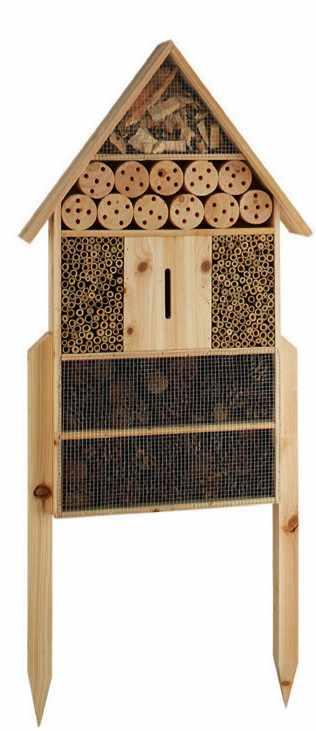





18 GARDENSILLUSTRATED.COM NOVEMBER 2022 DIG IN SHOPPING 2 3 4 5 6 7 8 9 1
1. Rural Kind Garden Kneeler, dark olive, £65, toa.st 2. 100 Seed Sachets, brown craft paper, £15.65, amazon.co.uk 3. Garden Compost Bin, 120L, W 45.5cm x H 64cm x D 53cm, £150, gardentrading.co.uk 4. Bird Feeder Hygiene Brush, £5.95, 0800 085 4865, arkwildlife.co.uk 5. Pot Cleaning Brush, £12, littlegardenshop.com 6. Burgon & Ball Dead Header, carbon steel blades, £10.99, highwaygardencentre.co.uk 7. Leaf Collecting Sacks, biodegradable jute hessian, one pair, £5.20, nutscene.com 8. Selections Long Handled Leaf Collecting Grabber, £15.99, amazon.co.uk 9. Varya Insect Hotel, W 49cm x H 79cm x D 12cm, £142.99, wayfair.co.uk


GA R DENS

when you subscribe
Save
to the digital edition




A must-have read for passionate gardeners, Gardens Illustrated magazine provides a unique insight into the world’s most beautiful gardens, expert advice and planting ideas. ENJOY OUR PREMIUM APP EXPERIENCE NOW buysubscriptions.com/ gardensillustrated
ACER PALMATUM ‘AUREUM’
Japanese maples are some of the most charming small trees to grow. At Gravetye we are lucky to have some beautiful specimens that thrive on our deep, slightly acidic clay and offer breathtaking displays throughout autumn. One of my biggest regrets is not planting more ten years ago, but now is as good a time as any to find space for a new plant. There are many different cultivars to select from, each with its own merits, but at Gravetye we have a spectacular ‘Aureum’, which is said to be one of the largest in England.
Height and spread 4m x 3m after ten years.
Origin Garden (species Japan).
Conditions Moist but well-drained, acid to neutral soil; full sun or dappled shade.
Hardiness RHS H6, USDA 5a-8b†
Season of interest October – November for autumn colour.
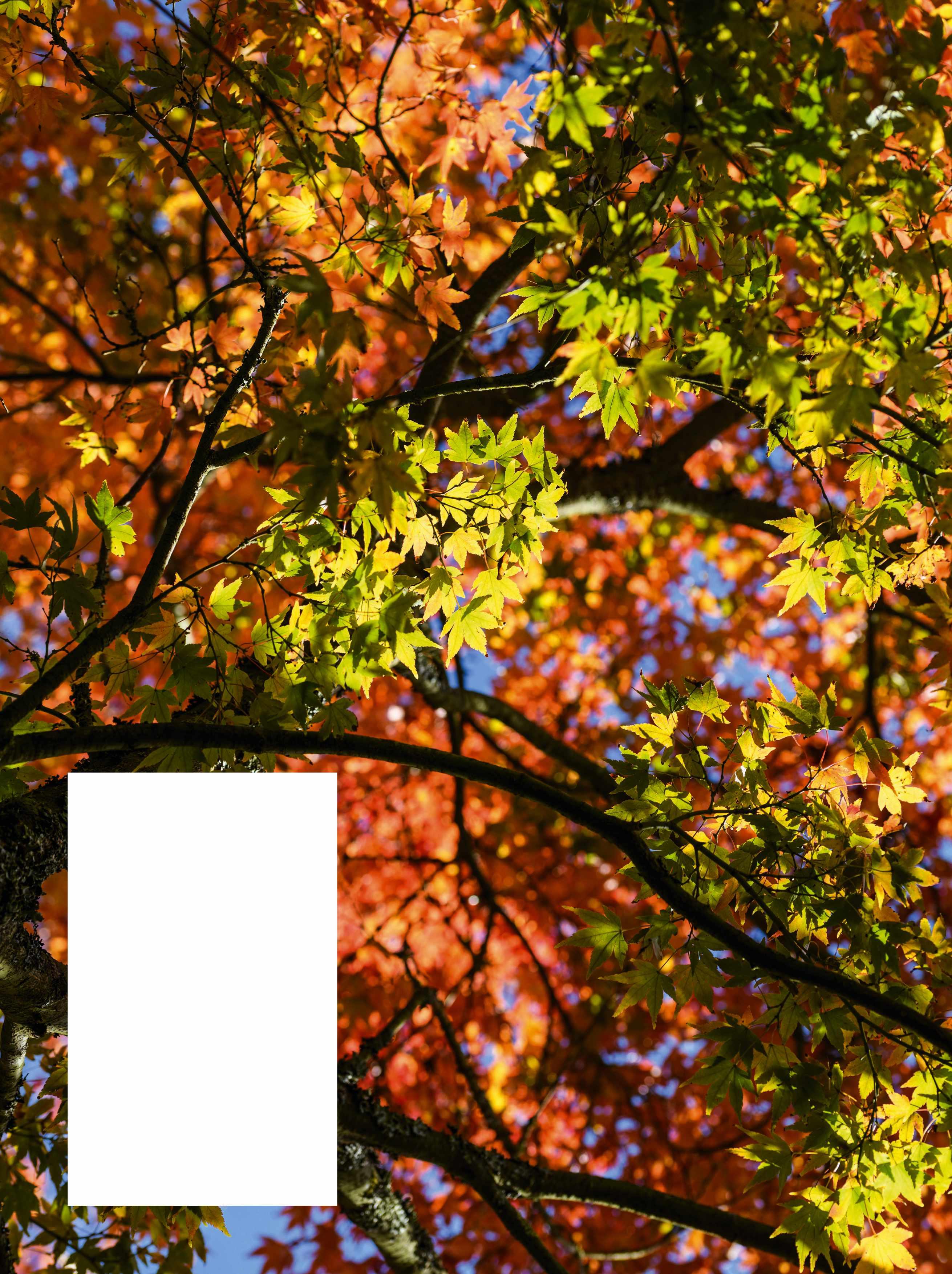
November plants
From tactile grasses and fabulous foliage to fragrant flowers and shrubs with fascinating late autumn fruits, there is much to enjoy as the garden starts to settle into winter
WORDS TOM COWARD PHOTOGRAPHS JASON INGRAM

POLYSTICHUM SETIFERUM ‘CRISTATOPINNULUM’

Ferns are such wonderful characters; their fascinating and varied forms give such pleasure throughout the year. I picked up this wonderful Polystichum cultivar at Hans Kramer’s nursery De Hessenhof in the Netherlands, and it is one of my favourites. It’s an old cultivar that dates back to the Victorian fern craze. Each fiddlehead is a joy to watch unfurl, opening into fresh-green, finely dissected fronds that look beautiful throughout the year. It’s sterile so difficult to propagate, although it occasionally produces bulbils.
Height and spread 50cm x 50cm.
Origin Garden (species Eurasia, north Africa).
Conditions Moist but well-drained soil; full to part shade.
Hardiness RHS H7, USDA 6a-8b.
Season of interest Year round.
This wonderful, clump-forming perennial grass has an upright habit with broad linear, mid-green leaves and a creamywhite mid vein. In autumn the plant turns a magnificent purple, making a striking feature with its pale-pink flower spikes that turn silver in the winter. It works especially well against the autumn colour of Euonymus europaeus ‘Red Cascade’ and the cerise-red of Symphyotrichum novi-belgii ‘Winston S. Churchill’. This grass will hold its structure, looking good throughout the winter until early spring when it should be cut back.

Height and spread 2m x 1m. Origin Japan and China. Conditions Moist but well-drained soil; full sun.
Hardiness RHS H5, USDA 5a-9b. Season of interest August – March.
BEGONIA ‘LITTLE BROTHER MONTGOMERY’
This is a tough, reliable and showy begonia that was hybridised by Martin Johnson in California in the late 1970s. A rhizomatous plant with erect stems, the foliage is stunning, covered in silver spots that merge in the leaf margins, and pretty, pink flowers at the end of summer and into autumn. Can be hardy in mild parts of the UK in well-drained soil, but we lift ours when the first frosts start, and store in the glasshouse. It also makes a nice houseplant through winter. AGM*.

Height and spread 1m x 50cm.
Origin Garden (species South and Central America).
Conditions Moist but well-drained soil; full sun to part shade. Best in a shady, sheltered spot or grown as a pot plant.
Hardiness RHS H6, USDA 10a-11. Season of interest Year round.
DIG IN PLANTSPERSON’S FAVOURITES
*Holds
an Award of Garden Merit from the Royal Horticultural Society. † Hardiness ratings given where available.
Tom Coward is head gardener at Gravetye Manor in West Sussex gravetyemanor.co.uk NOVEMBER 2022 GARDENSILLUSTRATED.COM 23
CHARLIE HOPKINSON
MISCANTHUS SINENSIS ‘PURPLE FALL’
SALVIA ‘PHYLLIS’ FANCY’
Over the past few years it has seemed as though summers have been getting ever longer and autumns much milder, so extending the season of a number of perennials. One such plant is this salvia, which is often still flowering in December for us. It is a hybrid of S. leucantha but with an elegance of its own; its fuzzy cream and lavender flowers are perfect against its grey-blue calyx. It will overwinter outside in very mild spots but we lift ours or propagate from cuttings in July. These are overwintered in a frost-free greenhouse to produce flowering plants by May the following year.
Height and spread 1.5m x 1.5m. Origin Garden (species Mexico).
Conditions Moist but free-draining soil; full sun but a sheltered spot.
Hardiness RHS H3, USDA 8a-10b. Season of interest May – December.
Places to visit
Tom’s recommendations for places to see seasonal plants at their best
Be sure to check opening times. Some garden visits may need to be pre-booked.
PERSICARIA MICROCEPHALA ‘DRAGONS BLOOD’

This is a tough and vigorous perennial, that more than pays its rent throughout the growing season with its striking foliage. Each lance-shaped leaf is a thing of fascination, purplish-green with a rich, central splash of purple bordered by a silver chevron marking. At the end of summer into autumn, it has tiny, white flowers that are the cherry on the cake. Although it is vigorous, it doesn’t spread and can be kept in proportion with its neighbours with a Chelsea chop in May. AGM.
Height and spread 1m x 1.5m. Origin Garden (species Himalaya through to central and eastern China).
Conditions Moist but well-drained soil; full sun or part shade in a sheltered spot.
Hardiness RHS H4, USDA 6a-8b. Season of interest April – December.
HELIOTROPIUM ARBORESCENS ‘WHITE LADY’

An old cultivar, said to have one of the best perfumes of any heliotrope, and worth growing for that alone. It reminds me of marzipan and vanilla and I can’t help but smile at the slightest whiff. My original plant came from Derry Watkins at Special Plants and we have kept it going, regularly propagating by cuttings ever since. We display it in pots by the door where its scent can be best enjoyed, and in the greenhouse, where on a warm autumn day the fragrance is almost intoxicating.
Height and spread 50cm x 50cm. Origin Garden (species Bolivia, Colombia, Peru).
Conditions Fertile soil, with good drainage; full sun or part shade.
Hardiness RHS H1C, USDA 10a-11. Season of interest June – December (under glass).
One of the highlights of the year for me is an autumn trip to Sheffield Park and Garden to see its trees at their most magnificent. This is a wonderful collection of woody plants, and worth a visit any time of year, but autumn is the season for which this landscape is best known and when its bold plantings of mature Nyssa Acer and Taxodium are in their full splendour. When
seen reflected in the lake they create an image of pure magic. Sheffield Park, Uckfield, East Sussex TN22 3QX. Tel 01825 790231, nationaltrust.org.uk
The best time to plant a tree is 50 years ago, but the second best time is now, and one of the best nurseries to buy it from is Bluebell Arboretum & Nursery in Derbyshire. The catalogue is mouth-

watering, the quality is always exceptional and the mail-order service excellent. But if you do have time to visit and pick your own plant it’s well worth it, particularly at this time of year, when the autumn colour is spectacular. The attached garden, which now covers nine acres, was started by owner Robert Vernon in 1992 and is the result of a lifetime’s passion
for plants. Rare plant treasures are found at every turn and it is impossible to leave without the urge to plant a new tree the moment you get home.
Annwell Lane, Smisby, Ashby-de-la-Zouch, Derbyshire LE65 2TA. Tel 01530 413700, bluebellnursery.com
The planting around the Hauser & Wirth art gallery in Somerset, is one of
DIG IN PLANTSPERSON’S FAVOURITES
24 GARDENSILLUSTRATED.COM NOVEMBER 2022

@torc pots www.torcpots.com
ERICA VAGANS ‘FIDDLESTONE’

Cornish heath is a dwarf, spreading shrub that produces long sprays of flowers from late summer to late autumn. Even after flowering, its ginger-coloured seedheads continue to look good throughout winter. This cultivar was a seedling found at Fiddlestone Lodge in Cheshire, and is one of the best to plant as it has such a long flowering season and is suitable for most gardens as it doesn’t require a low pH. It’s generally low-growing, although we have ancient mounds over 1m high, but is best trimmed back in early spring to keep the plant as a compact mound. After this spring trim is a good time to spread some mulch around the base of the plant.
Height and spread 10-50cm x 10-50cm.
Origin Garden (species western Europe).
Conditions Ericaceous soil; full sun.
Hardiness RHS H5.
Season of interest August – November.
CLERODENDRUM TRICHOTOMUM

This is a strong-growing, large shrub that flowers in August and September with extremely fragrant, white flowers that are enclosed in maroon calyces. These flowers are followed by brightblue berries that look especially stunning against the persisting maroon calyces, which darken with age. The foliage, when crushed, has a mild scent of peanut butter and has good yellow colouring in autumn. But the plant is probably most attractive after leaf fall when the stems are naked other than these fascinating fruits.
Height and spread 4m x 4m.
Origin Japan and China.
Conditions Moist but well-drained soil; full sun to part shade.
Hardiness RHS H5.
Season of interest August – December.
BIDENS AUREA ‘HANNAY’S LEMON DROP’

A tough hardy perennial with lemonyellow, delicate flowers with white tips on tall stems. It makes a steadily spreading clump, which is excellent inter-mingled with blue Symphyotrichum laeve ‘Calliope’, ornamental grasses and spring-flowering shrubs to create a simple wild garden planting with year-round interest. Occasionally, these clumps will need to be lifted and divided to reinvigorate the plants and the soil, control perennial weeds and to keep the clumps in proportion with the planting.
Height and spread 1m x 1m.
Origin Garden (species southeast USA and Mexico).
Conditions Free-draining soil; full sun. Hardiness RHS H3, USDA 5a-8b. Season of interest September –November.
best examples of the work of the Dutch designer Piet Oudolf. First opened in 2014, when more than 26,000 hardy perennials were planted to create an intricate and beautiful matrix, it has matured well and is now in its prime. Autumn is a wonderful time to visit; much of summer’s colour may have faded but it’s when the architecture
and composition of the planting come to the fore. This style of planting is a fascinating study of how plants relate to each other and perform in different situations. Durslade Farm, Dropping Lane, Bruton, Somerset BA10 0NL. Tel 01749 814060, hauserwirth.com
RHS Garden Wisley is one of the world’s great gardens and a plant
collection to be enjoyed at any opportunity. First given to the RHS in 1903, the garden has the richest horticultural heritage imaginable yet has always been a forward-looking garden. I was lucky enough to be a student there in the late 1990s when the RHS was planning a development for the new greenhouse, which is now a spectacle, especially on a cold
November day. More recently the new World Food Garden is one of the many developments that keeps this garden so dynamic. But what makes Wisley so special is the quality of plantsmanship and detail of care that has gone on for generations. The continuity is quite remarkable.
As well as being a marvel to visit, Wisley is probably one of the best gardens in
the country at which to train, with vast resources and a extremely well-run student scheme. The beauty of this kind of training is that the theory and practical elements are always linked, and this produces some of the best-educated gardeners entering the industry today. Wisley Lane, Wisley, Woking, Surrey GU23 6QB. Tel 01483 224234, rhs.org.uk
DIG IN PLANTSPERSON’S FAVOURITES
26 GARDENSILLUSTRATED.COM NOVEMBER 2022






ARE YOU READY TO START YOUR FACADE PROJECT? Our click and connect plan provides support when you’re ready to turn your project into a reality. Simply use our online tool to get a price estimate and connect with your PSGEP GIVXM � IH 'IHVEP 7IPIGX 4VSJIWWMSREP MRWXEPPIV�� )EW] � 0IX SYV TVSJIWWMSREPW MRWXEPP ]SYV 'IHVEP JEGEHI � Are you ready to begin? Find out more at cedral.world 01283 501555 infouk@etexgroup.com
THE CONSTANT GARDENER
As the garden slides slowly into winter and reaches its resting point, Benjamin has more time to take stock and prepare for the coming year, and enjoy those crops that benefit from a frost or two
 WORDS BENJAMIN POPE ILLUSTRATION CLAIRE HARRUP
WORDS BENJAMIN POPE ILLUSTRATION CLAIRE HARRUP
November’s cooler temperatures slow growth in the garden to a resting pace. Squally showers tug at the deciduous foliage of trees and shrubs, leaving all but the giant oaks leafless. Conspicuous crab apples burn bright with the intense yellow of Malus ‘Comtesse de Paris’ and glowing scarlet fruits of M. x robusta ‘Red Sentinel’ counteracting dull cloudy days.
Roses join this uplifting display with their vibrant hips. Rosa rugosa and more modern R. ‘Herbstfeuer’ offer large, colourful fruits, though my favourites include the brick-red flagons of R moyesii and delicate sprays of R filipes ‘Kiftsgate’.
Despite this slower pace, November can be a busy month for the gardener, tidying and taking stock of the previous growing season while preparing for winter and the following year. Traditionally, the garden would be ‘put to bed’, a phrase I find hard to reconcile with being someone who gardens throughout the year. But, there is a different camp that prefers to wait until spring before cutting back borders, offering invertebrates and other wildlife a place to shelter during
winter. I tend not to choose a side, but instead go through the borders periodically removing anything that has deteriorated into a soggy mess. I leave the standing stems of herbaceous perennials, such as monardas, vernonias and veronicastrums, along with most of the ornamental grasses, until spring, offering some height, interest and winter protection.
Wilder parts of the garden hold angelicas, poppies and teasels, their seeds offering sustenance to birds while their hollow stems house invertebrates. This approach easily works in a large garden, though smaller plots can be equally hospitable if you include a bug hotel, habitat or log pile, all of which can become a garden feature. Also, select plants that ‘die well’ and offer interest over multiple seasons.
For shady spots, I would champion Hakonechloa macra , Heuchera villosa and Polystichum setiferum ‘Pulcherrimum Bevis’, while in sunnier areas I would suggest Ceratostigma willmottianum, Hylotelephium ‘Red Cauli’ and Phlomis russeliana . Whether you leave or tidy, cut or wait, the trick is to enjoy the senescence of the garden, embracing the details and rhythm of every season.
What to sow and plant

Low light levels and short days make this month less suitable for sowing many seeds. However, trees, shrubs and umbel seed often germinate better following a period of cold weather and can be sown now, covered with grit and left somewhere outside, safe from mice and other pests.
I like to use open cold frames, where I can protect plants from excessive rainfall and offer night protection – but planting in a sheltered spot near to the house or a shed will work just as well. In mild parts of the country, you can direct sow broad beans and plant out autumn garlic and onion sets.
Indoors I like to sow micro greens and cut-and-come-again salad leaves that can easily be grown on a windowsill or greenhouse shelf. Mixed seed packets are available and include various beets, brassicas, mustards and herbs, all of which are packed with flavour and nutrients.
Sowing several peas into a two- or three-litre pot will also provide pea shoots for winter cropping. Where sowing is sparse this month, planting is not and now is the perfect time to plant trees, shrubs, roses and hedging.
What to harvest and pick
The kale and winter cabbage season is about to begin and I wouldn’t be without black ‘Nero di Toscana’ both for its looks and its distinctive flavour. Below the soil, the root vegetables continue to crop well. A tray of roasted beetroot, carrot, celeriac, potato and Jerusalem artichoke is a perfect way to embrace the season.
Like these vegetables, medlars (Mespilus germanica) also benefit from November’s weather. This oft-forgotten tree produces hard fruits that resemble large rose hips, that when picked and bletted can be used to make the most delicious amber jelly, tasting somewhere between toffee apple and rosewater. It is a firm favourite at home and I like to add different flavourings of black pepper, chillies or pelargoniums.
As with fruit, cut flowers are limited, though Hesperantha cultivars and hardy chrysanthemums, such as ‘Bienchen’, ‘Dixter Orange’ and ‘Granatapfel’, are still producing, and their warm colours can be embellished with rosehips and seedheads for a late autumn display. n
• Benjamin’s Gardens Illustrated Masterclass: Grow a year-round, productive garden is available at gardensillustrated.com
GARDEN JOBS for November
Plant tulips As herbaceous perennials die back and soil temperatures lower, it is a good time to plant tulip bulbs. Avoid excessively wet conditions and plant at least 10cm deep to promote strong healthy growth.
Check gutters and drains To prevent possible damp and flooding issues during the wet winter weather, ensure gutters, drains and gullies are free of debris and detritus.
Keep paths clean It is important to rake and tidy gravel paths, removing fallen leaves, to prevent the build-up of organic matter, which would assist in future weed growth. Stone and wooden surfaces should also be cleaned to reduce slippery conditions.
Tidy dahlias Cut back dying stems of dahlias and either lift tubers and dry to store somewhere sheltered over winter or alternatively leave in the ground and cover with a thick protective layer of compost or well-rotted manure. Prepare for frosts Drain unused irrigation pipes and wrap outdoor taps and standpipes with burlap to prevent damage from freezing temperatures. Pots and containers can also be wrapped up and should be raised off the ground using pot feet to avoid frost
DIG IN: IN THE GARDEN
NOVEMBER 2022 GARDENSILLUSTRATED.COM 29
Become a budding garden designer in just 10 weeks
The UK’s most established NHYKLU KLZPNU ZJOVVS PZ UV^ V�� LYPUN a 10 week course starting in January.
Inchbald is the most established garden design school in the UK. For over 50 years we have been creating successful garden design careers.
So many of the world’s leading designers are 0UJOIHSK NYHK\H[LZ ;OL`»]L HSS ILUPÄ[LK MYVT [OL high standard of tutoring on which the school’s reputation is built.
5V^ ^L HYL V�� LYPUN H����^LLR JV\YZL ^P[O [OL same level of tutoring for enthusiastic amateur and professional gardeners.

-PUK V\[ TVYL ]PZP[ PUJOIHSK JV \R

CREATING CAREERS YEARS
60 ESTABLISHED 1960 020 7730 5508 | gardens@inchbald.co.uk | inchbald.co.uk On campus and online full time and part time courses
JOSHUA TRANTER
PORTRAIT JASON INGRAM

My earliest gardening memories are from spending weekends at my Nan’s house. I would help her with jobs, such as growing vegetables and general garden maintenance. The highlight was always picking the veg, which Nan would then add to a delicious Sunday lunch. I’m lucky to work for one of my horticultural heroes –John has taught me a huge amount in the four years I have worked for him. His attention to detail is at the highest level, nothing escapes his eagle eye. He’s a master of pruning trees and raising tree canopies to create more planting opportunities. He’s also a skilled alpine grower and a worldrenowned hepatica grower. I hope one day to be able to pass on my knowledge to other up-and-coming horticulturists.
I love visiting gardens and find it difficult to pick out a favourite, but one that really stands out is Wildside in Devon. Keith Wiley has created an outstanding garden from a totally blank canvas. His planting combinations are clever and his vision is ambitious, always with wildlife and sustainability in mind. I go home filled with ideas and inspiration after each visit. After studying horticulture at college, I completed an apprenticeship at Birmingham Botanical Gardens. This taught me important practical skills, while working in a large garden helped me to gain experience with lots of different plant types. This is where I discovered my passion for alpines. Apprenticeships offer a vital source of practical skills training, which is just as important as theory work. My favourite planting style is a mixed border. I love to see the structures of trees and shrubs mixed into a herbaceous border. It’s nice to see evergreens used to retain some interest in the border through winter.
Two books I use on a regular basis for sourcing information are the Alpine Garden Society’s Encyclopedia of Alpines and The Hillier Manual of Trees & Shrubs
My passion for alpines means I would like to spend more time studying them and travelling to see plants in their natural habitats. I’m also particularly keen on growing cyclamen (as you’ll see from my Instagram posts). What really got me hooked on them is the endless leaf variations… then you have the added bonus of the lovely flowers. What’s not to like about them? I have showed at a few cyclamen shows and hope to show more in future, as well as try some cyclamen breeding.
Instagram joshtrant_ Twitter joshuatranter99
For details on how to visit John Massey’s private garden go to ashwoodnurseries.com/visit-us/johns-garden
GARDENING TALENT
As gardener for John Massey of Ashwood Nurseries, Joshua values attention to detail and has developed his passion for alpines
NOVEMBER 2022 GARDENSILLUSTRATED.COM 31
I’m lucky to work for one of my horticultural heroes – John has taught me a huge amount
A heady brew
For more than half a century, Bernard Tickner worked on creating an exhilarating garden at Fullers Mill, which is a glory to visit in autumn
WORDS MATTHEW BIGGS PHOTOGRAPHS RICHARD BLOOM

32 GARDENSILLUSTRATED.COM NOVEMBER 2022
IN BRIEF
What A plantsman’s garden filled with rare and unusual plants. Where Suffolk. Soil Predominantly sandy, with random pockets of silt. Size Seven acres. Climate Temperate with dry summers and occasional rain.
Hardiness zone USDA 9.
As autumn gradually weaves its cloak over the garden, the view over the mill pond to the house is filled with form and texture, including dark evergreens and the yellow foliage of compact Physocarpus opulifolius ‘Dart’s Gold’ and Darmera peltata, which later turns red.
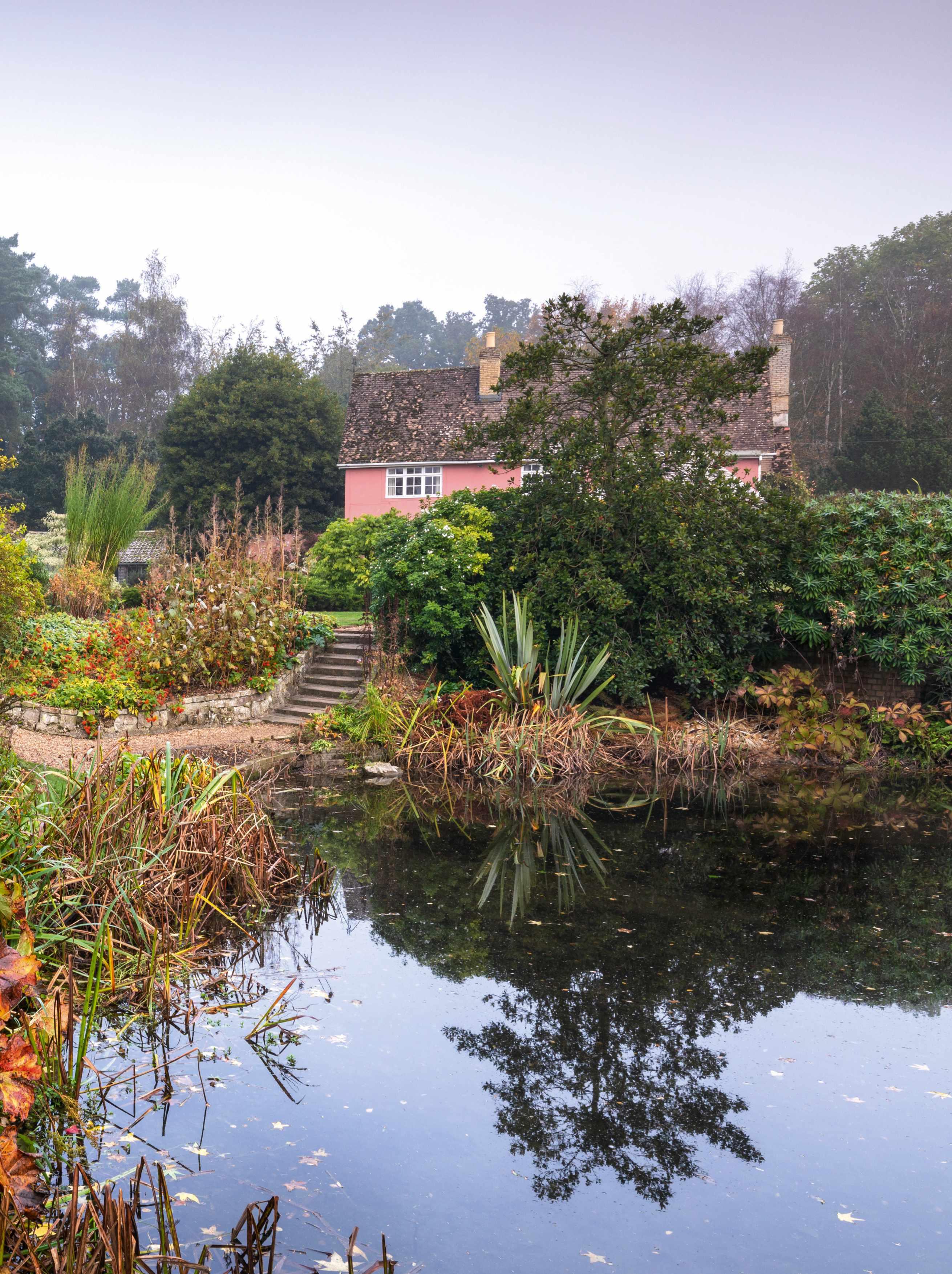
Bernard Tickner was the highly respected head brewer who created the recipe for the popular Abbot Ale. He was also an expert plantsman, who for more than half a century created an elegant, tranquil garden around the cottage he bought in 1958. Over the next 59 years, until his death aged 93, he added more land and a host of choice plants, but towards the end of his life in 2013 he gifted his creation to Perennial, the charity that helps support those working in horticulture and now manages three gardens. Under Perennial’s care the garden has continued to flourish and last year it was a regional winner in the RHS Partner Garden of the Year.
Bernard began gardening as a child alongside his mother. As his passion progressed, he studied Latin, Greek and botany to increase his academic understanding and made connections at botanic gardens including Cambridge and Kew. He also learned much about plants and gardening from a coterie of friends that included eminent gardeners Alan Bloom, Cedric Morris, Beth Chatto and Christopher
Lloyd, who often visited each other’s gardens. Many of the special plants still growing at Fullers Mill were as a result of exchanges or were first seen in the gardens of his friends. The more Bernard learned, the more he collected, then planted them in a specific style. “Bernard was red-green colour blind, so he planted for other features such as texture, seedheads and architecture,” explains the current head gardener Annie Dellbridge. “He also wanted to see the natural shape and detail of each plant, so each one has its own space, like paintings in a gallery.”
The garden, on a gentle, natural slope, is sculpted the River Lark and Culford stream, both of which run through the garden.
“Bernard felt that curved paths topped with gravel, bark or grass, following the organic shapes of the beds, complemented the topography, creating a naturalistic sense of place. There are no statues or straight lines, though since the garden has been open to the public, we have added more seats,” says Annie.
In autumn the garden is embellished with splashes of colour from flowers, fruit and foliage. For many plants it is a final fanfare. Cercis canadensis ‘Forest Pansy’ is a highlight over several seasons; it has elegant, heart-
Above The golden foliage of Aesculus parviflora helps to illuminate the dull grey of an autumn day. The leaves of this rounded, suckering shrub open bronze, before turning dark green and finally golden yellow to create a striking contrast to the dark-purple foliage of Sambucus nigra f. porphyrophylla ‘Gerda’ and the white bark of the silver birch.
Right above With the seasons at a crossroads, the bright-green foliage of a trimmed, lozenge-shaped Buxus sempervirens ‘Elegantissima’ in the Top Garden complements the green of Cotinus coggygria ‘Notcutt’s Variety’, and Zelkova serrata, soon to be resplendent in red and orange, and golden yellow respectively.
Right below The Low Garden with its bold structural contrasts boasts a rich splash of colour from the decaying, arched, gold and bronze plumes of Matteuccia struthiopteris combining with orange-red Acer palmatum ‘Dissectum’ and purple and green Liquidambar styraciflua awaiting its moment of glory in the background.

34 GARDENSILLUSTRATED.COM NOVEMBER 2022
Bernard felt that curved paths complemented the topography, creating a naturalistic sense of place

PLANTS FOR AUTUMN
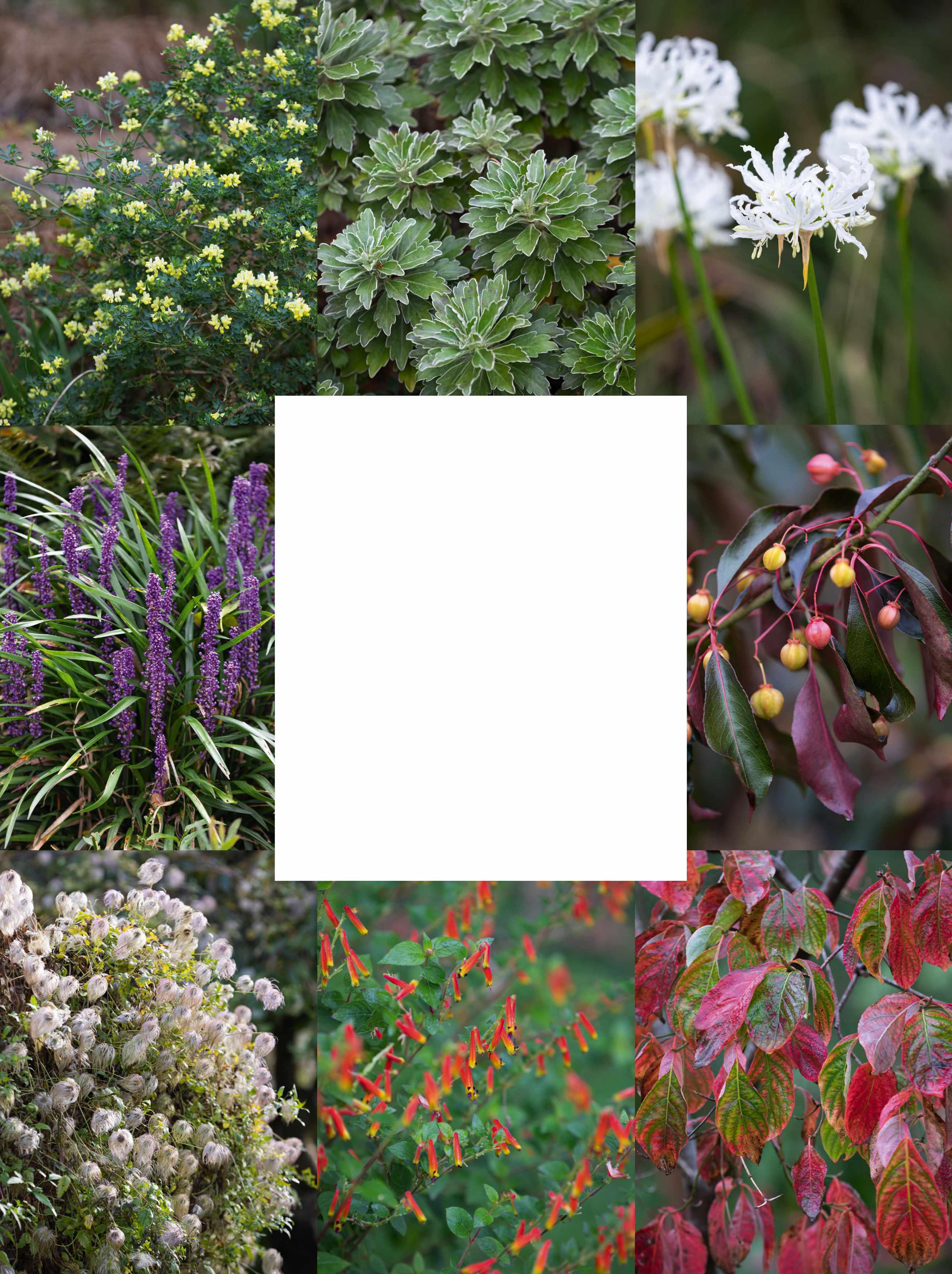
1 Coronilla valentina subsp. glauca ‘Citrina’ Needing shelter in cooler climates, this evergreen shrub flowers profusely in mid spring then produces its deep-yellow, fragrant flowers intermittently through the rest of the year. 1m x 1m. AGM*. RHS H4, USDA 8b-10a†
2 Chrysanthemum pacificum An attractive mound of delicate, silver-edged leaves offsets the tight clusters of tufted, yellow flowers. Ideal for clay or sandy soil in full sun. 50cm x 30cm. RHS H7, USDA 5a-9b.
3 Nerine bowdenii ‘Alba’ Pure-white blooms appear from late summer onwards. Ideal for a hot sunny spot, given time it forms large clumps. It is a long-lasting cut flower. 50cm x 10cm. RHS H5, USDA 7a-10b.
4 Liriope muscari An attractive plant that forms dense clumps of narrow, arching, dark-green evergreen leaves. Spikes of small, violet-purple flowers in autumn are followed by black berries. Tolerant of drought and shade. 50cm x 50cm. AGM. RHS H5, USDA 5a-10b.
5 Euonymus carnosus ‘Red Wine’ A semi-evergreen shrub with unusual white flowers from mid to late summer, followed by persistent, claret, autumn foliage and pink fruits with cream seeds. 2m x 2m. RHS H6, USDA 4a-7b.
6 Clematis tangutica A vigorous deciduous climber with nodding, lanternshaped single blooms in early summer and autumn, followed by long-lasting, attractive silky seedheads. 8m x 4m. RHS H6, USDA 5a-9b.
7 Cuphea cyanea An exotic, half-hardy perennial with deep-green foliage. Narrow, tubular, coral-red flowers, tipped with greenish yellow, appear from June to October. Sun or part shade. 60cm x 90cm. USDA 9a-11.
8 Cornus ‘Eddie’s White Wonder’ A large, rounded deciduous shrub renowned for its display of flowers with overlapping, broad, white bracts in late spring. Autumn foliage is red and purple. 8m x 4m. AGM. RHS H5, USDA 6a-9b. 16 key plants continues on page 39.
1 2 4 5 6 7 8 3
shaped, dark-purple leaves in spring, which fade slightly but glow when the summer sun shines through the leaves. Then in autumn the leaves turn rich red and purple.
Crataegus persimilis ‘Prunifolia’ is another highlight. A small, robust, thorny tree it boasts glorious autumn colour in rich shades of orange and red, and has masses of orange fruit. Other plants include the feathertop Pennisetum villosum, Chrysanthemum ‘Spartan Display’ with its semi-double, deep-pink flowers and Symphyotrichum lateriflorum ‘Chloe’, an aster with white flowers that turn deep pink when pollinated. Perhaps one of the best, however, is Salvia ‘Amistad’, a plant discovered at a plant fair by Argentinian sage expert Ronaldo Uria. He decided it was so beautiful and long flowering that he should share it with friends, hence its name, amistad the Spanish for friendship. “The sumptuous flowers on this large salvia appear from mid to late spring and remain until the first frost; it is an excellent focal point for a hot sunny border,” says Annie.
Several of the garden’s plants are named for or by Bernard. Among these is the winterflowering, white Iris unguicularis subsp. cretensis ‘Bess Tickner’, which is named for Bernard’s wife, who found it growing on a trip to Crete
Perennial’s other gardens
• Mona Abboud Mona has bequeathed her long, narrow north London garden to Perennial as a future hub for the charity. Notable for its eclectic selection of Mediterranean and Antipodean trees and shrubs, her garden is home to the National Collection of Corokia, and is skilfully planted with an emphasis on texture, form and contrasting foliage colour. Its style is influenced by Mona’s Lebanese heritage and the time she spent living in Italy and the South of France. She has also capitalised on her city garden’s microclimate with aplomb.
• The Laskett Set in the rolling countryside of Herefordshire, this garden was created by art historian, Sir Roy Strong, and his late wife, the eminent stage set designer, Julia Trevelyan Oman. Over time, their combined brilliance transformed a bare, four-acre field in their own, often idiosyncratic style into one of Britain’s great gardens, inspired by historic gardens such as Hidcote, those in Baroque Italy and of Tudor and Stuart England. It also reflects their friendships with fellow artists, and was gifted to Perennial by Sir Roy on the occasion of his 85th birthday.
SCAN HERE

You can read more about Perennial’s garden York Gate in Leeds at gardensillustrated.com/ york-gate
• York Gate This one-acre garden, created by Frederick and Sybil Spencer and their son Robin, is one of the finest small gardens in the country. It is based on ‘rooms’ interlinked through a succession of vistas with the meticulous attention to detail associated with the Arts and Crafts movement, complemented by Sybil’s skills as a plantswoman. It is a ‘must-visit’ garden for anyone interested in garden design for its imaginative use of space, perspectives and plants.

NOVEMBER 2022 GARDENSILLUSTRATED.COM 37
Bernard wanted to see the detail of each plant, so each one has its own space, like paintings in a gallery
In The Quandary, at the base of a woven hurdle fence turned silver grey with the patina of age, the large leaves of Hosta ‘Sum and Substance’ create a bold splash of gold and green, with the bright-red stems of Cornus alba ‘Westonbirt’ beyond.
(at a time when Bernard had a licence to collect plants from the wild). Bernard himself is commemorated in several plants including yellow Fritillaria pyrenaica ‘Bernard Tickner’, which he discovered in the Pyrenees some 30 years ago. He also selected several other plants. “He found a betula near the lake. It was grafted by his friend Ivan Dickings who was propagation manager at Notcutts at the time and named Betula pendula ‘Silver Grace’. It’s tall and elegant with light, airy cascading foliage and silvery-white bark. We have a group of 12 trees planted in the glade,” says Annie.
Special collections include Salix, Lilium and more than 120 different kinds of snowdrops, flowering from October to March, including Galanthus reginae-olgae, mostly dotted in small clumps along the edge of borders so that visitors can easily read the labels. “Our collection has increased annually in recent years due to a generous donation from a Galanthus enthusiast,” says Annie. “We now have enough for several special snowdrop days. Last year we received 12 different cultivars including ‘Richard Ayres’, ‘Benton Magnet’ and ‘Lady Beatrix Stanley’, and members of the Fullers Mill gardens committee often bring plants. It is very exciting; we never know what is going
to arrive. When I look across the garden from the top of the millpond at the changing colours of autumn, especially when the hues of Cercis canadensis ‘Forest Pansy’ and Darmera peltata are reflected in the water, it is a reminder that autumn at Fullers Mill is one of the most serene and beautiful seasons of the year.”
Since Bernard and his wife Bess transferred ownership of the garden to Perennial in 2013, the work of Annie and members of the gardens committee remains faithful to the couple’s overall vision of ‘a woodland and water garden, full of choice plants that is a haven for wildlife and is constantly evolving’. They would be delighted that their garden, which was a lifelong passion shared with friends, can now be enjoyed by a wider, still appreciative audience. n

USEFUL INFORMATION
Address Fullers Mill Garden, West Stow, Bury St Edmunds, Suffolk IP28 6HD. Tel 01284 72888. Web perennial.org.uk Open November –17 December 2022, Saturdays 11am-4pm; April – October, Friday – Sunday, 11am-5pm, Wednesdays, 2-5pm.
•Perennial can offer assistance to anyone in need working in horticulture. See website for details.
Above In the Top Garden is a small grove of silver birch, Betula pendula ‘Silver Grace’, a form selected by Bernard Tickner from a tree found growing at Fullers Mill. The vertical silvery lines of the birch are accentuated by a gravel mulch, with a feathery mound of Ferula communis, the giant fennel, the spiky architecture of blue-green Yucca rostrata ‘Sapphire Skies’ and the upright, bare branches of Ptelea trifoliata below.
38 GARDENSILLUSTRATED.COM NOVEMBER 2022
PLANTS FOR AUTUMN

9 Darmera peltata Clusters of pale-pink flowers topping tall, bristly stems in spring are followed by rounded leaves to 45cm across, which turn rich red in autumn. 1.5m x 1m. AGM. RHS H6, USDA 5a-7b.
10 Acacia pravissima An evergreen shrub decked with masses of leaf-like, triangular, winged leaf-stalks, or phyllodes, and small, yellow flowerheads in late winter and early spring. Needs shelter. 4m x 2.5m. AGM. RHS H3, USDA 8a-10b.
11 Pennisetum villosum A mound of narrow, light green leaves is topped in summer with masses of feathery, whitish-green panicles ageing to purple. Requires sunshine and good drainage. 50cm x 50cm. AGM. RHS H3.
12 Salvia ‘Amistad’ A bushy, upright perennial bearing striking, deep-purple, tubular flowers with black calyces from July to the first frosts. Needs moderately fertile, well-drained soil and shelter. 1.2m x 20cm. AGM. RHS H3, USDA 8a-11.
13 Hylotelephium ‘Red Cauli’ A drought-tolerant, clump-forming perennial, with dark- red stems, dark-green leaves and flat heads of bright pink flowers in late summer and early autumn. 1m x 50cm. AGM. RHS H7, USDA 5a-9b.
14 Metasequoia glyptostroboides A fast-growing deciduous conifer with orange-brown bark. The feathery leaflets are fresh green in spring, fading to mid-green then tawny brown before falling. 12m+ x 4m. RHS H7, USDA 4a-8b.
15 Clerodendrum trichotomum var. fargesii A deciduous shrub bearing fragrant, white flowers in autumn, the green calyces then turn purple-pink as the turquoise berries mature. Needs shelter, sun or part shade. 8m x 8m. AGM. RHS H5, USDA 7a-10b.
16 Crocus speciosus Has delicate, lilac-blue autumn flowers marked with a tracery of dark mauve veins and a white throat. Plant en masse in poor to moderately fertile soil. 10cm x 10cm. AGM. RHS H6, USDA 3a-10b.
*Holds an Award of Garden Merit from the Royal Horticultural Society. †Hardiness ratings given where available.
9 10 12 13 14 15 16 11
Winter warmers
With colour in the garden now at a premium, Jenny Barnes creates three containers that bring warm foliage, jewel-like flowers and bright berries to the fore
 WORDS
JENNY BARNES PHOTOGRAPHS RICHARD BLOOM
WORDS
JENNY BARNES PHOTOGRAPHS RICHARD BLOOM
BUCKETS OF COLOUR
As we move steadily from autumn into winter, perennials die back and colour drains from the garden, leaving the overwhelming hue a muddy brown. Containers become more important than ever as a way of introducing colour to otherwise bland areas and are a key tool in extending the garden’s season of interest. To counteract the cold and grey, I’ve chosen plants with warm, tactile foliage and jewel-like flowers.

How to achieve the look
Container and composition
I wanted to use a container that wouldn’t detract from the planting within. This simple, vintage galvanised bucket is perfect and with its built-in handle, is ideal to move around the garden to provide interest wherever it is needed. I’ve used Cordyline australis to provide strong structure to the display, and then softened the effect by surrounding it with Carex buchananii. The rich, sumptuous foliage of the heuchera and ajuga, arranged around the edges of the container, soften the harsh rim. The juncus adds another structural element in a contrasting fresh green. I fell in love with these little burgundy cyclamen and have threaded them through the pot to add a cheerful pop of colour.
Cultivation and care
This old, galvanised bucket has conveniently rusted through at the base, providing suitable drainage, but you may need to drill some holes using a metal drill bit. I also added a good layer of broken crocks to the bottom as it’s important the plants don’t sit in cold, wet soil throughout winter. To further ensure good drainage, I mixed a good handful of horticultural grit to the multi-purpose compost. Neither the cordyline nor the cyclamen that I’ve chosen are hardy, so I’ve placed this pot in a sheltered position near to the house and will move undercover if frost is forecast. Keep the container on the dry side throughout winter and remove any dead leaves as they appear.
Plants
1 Cordyline ‘Red Star’ Evergreen, lanceshaped, bronze leaves. Good structure.
2.5m x 1.5m. RHS H3, USDA 9a-11†
2 Juncus effusus f. spiralis Evergreen perennial with unusual corkscrew-curled stems. 10cm x 50cm. RHS H7, USDA 4a-9b.
3 Heuchera ‘Wild Rose’ (Primo Series) Clump-forming perennial with large, purple leaves. Pink flowers in summer. 10cm x 50cm. RHS H5, USDA 4a-9b.
4 Ajuga reptans ‘Atropurpurea’ Bronzecrinkled leaves. Deep-blue flowers in spring. 20cm x 30cm. RHS H7, USDA 3a-9b.
5 Cyclamen persicum Dreamscape series – deep burgundy Heart-shaped leaves with silver veining. Fragrant burgundy flowers. 20cm x 20cm. RHS H1C, USDA 9a-11.
6 Carex buchananii ‘Red Rooster’ Mound-forming, evergreen sedge. 50cm x 50m. RHS H5, USDA 6a-9b.
NOVEMBER 2022 GARDENSILLUSTRATED.COM 41
1 2 4 5 6 3
*Holds an Award of Garden Merit from the Royal Horticultural Society. Hardiness ratings given where available.
SOME LIKE IT HOT
I grow an array of peppers and chillies in my garden, which happily stand outside on a bench throughout summer. Towards the end of the season, the fruits would traditionally be picked and dried to use throughout the winter and the plants discarded, but I like to eat the chillies fresh for as long as possible and so bring the plants inside as soon as the nights start to get colder. I love to grow fruits in a range of colours and shapes, and this means my display is both practical and ornamental.
How to achieve the look Container and composition

This wonderfully kitsch display was originally purely a practical decision to bring my chilli plants into the house, but it seemed such a shame not to make the most of them while they look so healthy. I scoured our plant nursery at work for further additions and added cultivars of Gaultheria mucronata Callicarpa bodinieri and Solanum pseudoccapsicum, all of which are smothered in vibrant berries and fruits. Cotoneasters or hippophaes would also look great. To tie the arrangement together, I popped each plant into a separate galvanised bucket, all different sizes, but the same design, and stood these randomly on the steps of an old ladder, so my chillies are at the perfect picking height.
Cultivation and care
All these plants have been previously potted up into plastic pots using a growing medium to suit, so to save disturbing the roots of the established plants, I simply dropped the plastic pots into slightly larger galvanised buckets. If your buckets don’t have holes in the base, drop a few pebbles into the bottom of each one before adding the pot so that the plant is not sat in a pool of water should you accidentally overwater. Feed weekly with a specific chilli and pepper fertiliser to ensure optimum yield and harvest the chillies as you need. When the capsicums begin to look tatty, remove any remaining fruits, hang them to dry and compost the plant. You can refresh the display by dropping another plant into the empty bucket.
Plants
1 Capsicum annuum ‘Explosive Embers’ Hot chilli pepper with small, black fruits ripening to red. 20cm x 20cm. USDA 9a-11.
2 Capsicum annuum ‘Acapulco Orange’ Ornamental chilli with bright-orange fruits. 15cm x 20cm. USDA 9a-11.
3 Capsicum annuum ‘Salsa Yellow’ Small yellow fruits. 30cm x 20cm. USDA 9a-11.
4 Callicarpa bodinieri var. giraldii
‘Profusion’ Clusters of purple berries.
2.5m x 1.5m. AGM. RHS H6, USDA 6a-8b.
5 Gaultheria mucronata ‘Rosy Pink’ Compact, evergreen shrub with showy pink berries in autumn. 1m x 1m. RHS H6.
6 Solanum pseudocapsicum ‘Megaball’ Bushy shrub with spherical orange fruits. 50cm x 50cm. RHS H1C.
7 Capsicum annuum ‘Numex Cinco de Mayo’ Slim fruits ripening to red. 60cm x 20cm. USDA 9a-11.
42 GARDENSILLUSTRATED.COM NOVEMBER 2022
1 3 4 5 6 7 2

Plant suppliers
• Avondale Nursery Tel 07367 590620, avondalenursery.co.uk
• Homebase Tel 0333 003 7084, homebase.co.uk
• Real Seeds Tel 01239 821107, realseeds.co.uk
• Richards Plants Tel 01536 764255, richardsplants.com

LOW MAINTENANCE EVERGREENS

Conifers have rather fallen out of fashion over the past few years, but they make up a hugely diverse group of plants. I have chosen a selection of conifers that showcase a range of colours, textures and habits. All are evergreen and so will look good with little maintenance year round, including through the difficult winter months. I love that the shrubs and trees can all be planted into the garden after you’ve enjoyed the container display, making this arrangement truly sustainable.
How to achieve the look
Container and composition
I found this rusty, cast-iron trough at my parents’ house while I was rummaging for a suitable container; it’s perfect for this display of conifers. You could find similar at local reclamation yards and the planting display can easily be scaled up or down to suit the size of your container. This trough is very deep, allowing lots of room for the rootballs of the bigger plants. I’ve tried to choose cultivars with different characteristics; Juniperus procumbens ‘Nana’ will form a mat, filling any gaps within the trough, whereas J. x pfitzeriana ‘Old Gold’ provides a vertical element. I especially like how the rusty red colour of the trough accentuates the burnished tones of the foliage and stems of the Thuja occidentalis ‘Golden Tuffet’.
Cultivation and care
This particular trough doesn’t have any drainage holes in the base and so I’ve added a thick layer of crocks and then pebbles to the bottom. Conifers prefer a slightly acidic soil, so I’ve incorporated an ericaceous compost along with a mature plant compost to provide maximum nutrition for the established plants. You could add acidic organic matter such as well-rotted pine needles instead. Once planted, conifers require little to no maintenance. Keep the trough damp, but not wet. Being containerised will restrict growth, but these plants are all too big to live in a pot forever and will need planting out once they become too big for your chosen container.
Plants
1 Thuja occidentalis ‘Golden Tuffet’ Golden yellow foliage turning bronze in winter. 60cm x 80cm. AGM. RHS H7, USDA 2a-7b.
2 Juniperus procumbens ‘Nana’, Needlelike foliage. 30cm x 75cm. AGM. RHS H7.
3 Juniperus chinensis ‘Blue Point’ Densely branched evergreen with blue-green foliage. 3.5m x 2.5m. RHS H4, USDA 4a-9b.
4 Juniperus x pfitzeriana ‘Old Gold’ Golden-yellow foliage. 50cm x 1.5m. AGM. RHS H6, USDA 4a-9b.
5 Juniperus horizontalis ‘Golden Carpet’ Mat-forming conifer with acid-green foliage. 10cm x 1.5m. AGM. RHS H7, USDA 3a-9b.
6 Chamaecyparis lawsoniana ‘Wisselii’ Evergreen with upright conical habit.
12m x 2.5m. AGM. RHS H6, USDA 5a-10b.
7 Juniperus squamata ‘Blue Star’ Forms neat mound of blue-grey foliage.
10cm x 50cm. AGM. RHS H7, USDA 4a-8b.
NOVEMBER 2022 GARDENSILLUSTRATED.COM 45
1 2 3 4 5 6 7
Up on the roof
Using a predominance of grasses in organically shaped beds, Erik Funneman has created a natural oasis for an urban roof terrace
 WORDS RAE SPENCER-JONES PHOTOGRAPHS SIETSKE DE VRIES
WORDS RAE SPENCER-JONES PHOTOGRAPHS SIETSKE DE VRIES
IN BRIEF
What Urban roof garden with natural-style planting.
Where Utrecht, the Netherlands.
Soil Roof-garden substrate: 95 per cent 5mm lava stone and 5 per cent soil.
Size 80 square metres.
Climate Temperate, south-facing city garden.
Hardiness zone USDA 8.
The faded blooms of Verbena bonariensis on wiry stems combine with Agastache ‘Blackadder’ to extend seasonal interest into autumn.
Facing page Built on the roof of a concrete garage, this urban garden can directly borrow from the Utrecht skyline. It is framed by a neighbouring contemporary building clad in blue tiles, making a connection between landscape and sky.
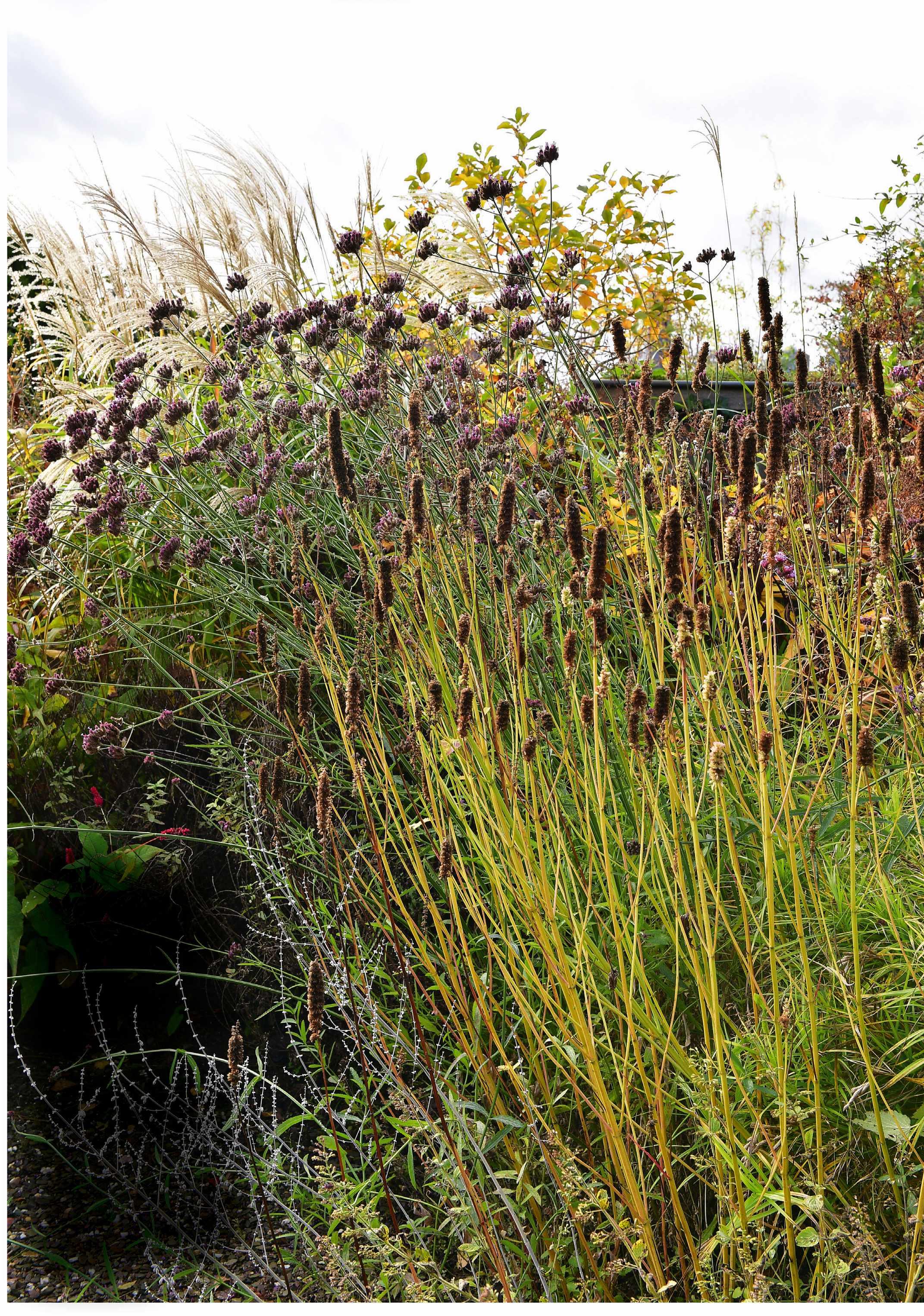
NOVEMBER 2022 GARDENSILLUSTRATED.COM 47
It was about establishing a so�er environment against the urban backdrop
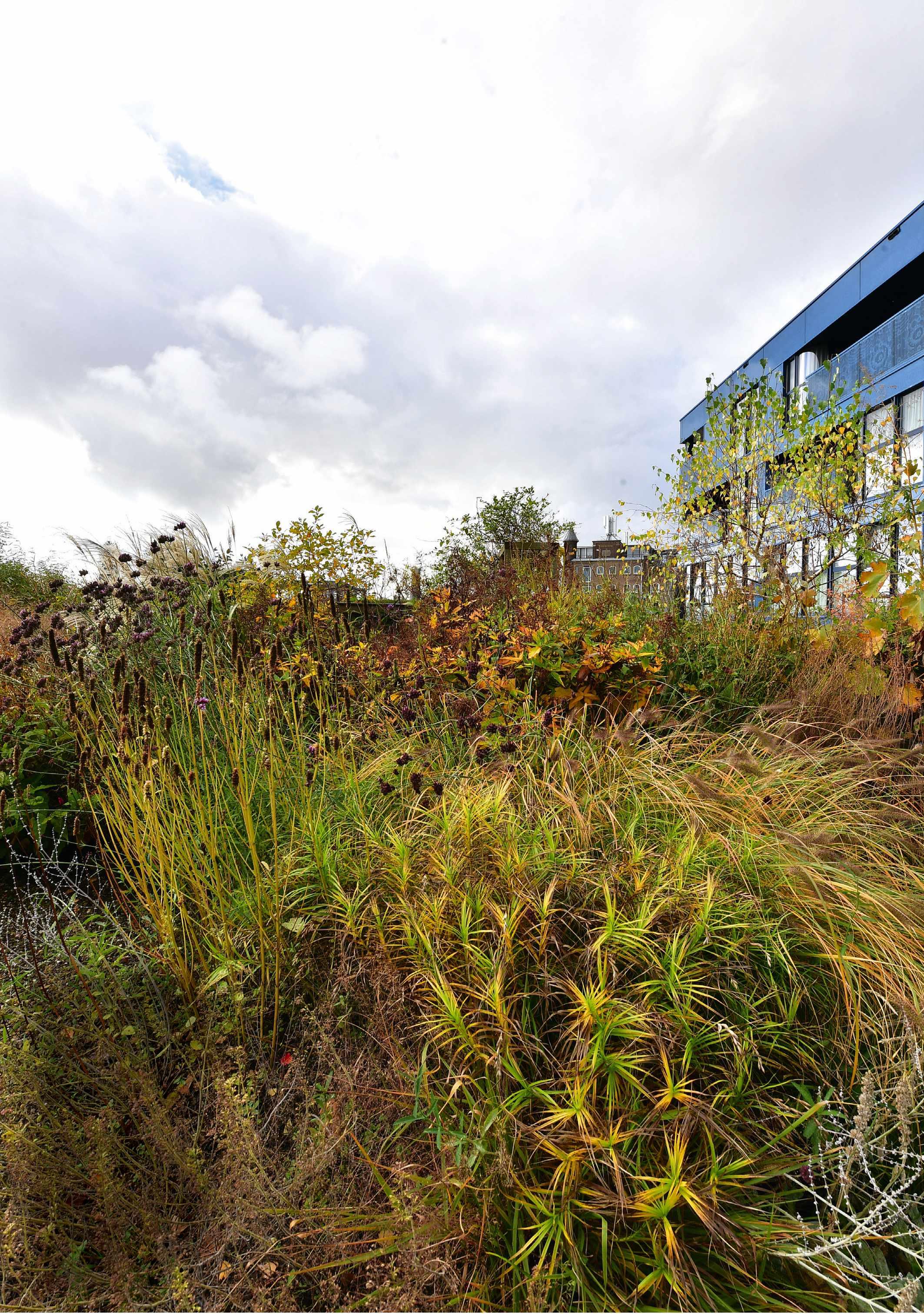
In mid-autumn the planting matures to accentuate a tapestry of textures and colours of ageing foliage and faded flowers. Carex muskingumensis ‘Oehme’, Verbena bonariensis and Agastache ‘Blackadder’ create a jungly effect for year-round interest.
Facing page Deschampsia cespitosa ‘Goldschleier’ forms an ethereal misty veil in front of the cityscape beyond, while scarlet Bistorta amplexicaulis ‘Blackfield’ makes a bright spot of colour among the golden and bronze seedheads and bare stems of neighbouring plants.
hen Dutch garden designer Erik Funneman was commissioned to design a rooftop garden for an apartment home in the centre of Utrecht, he was determined that it would be neither the archetypal extra ‘room’, nor a typical roof terrace.
Instead, to reflect his clients’ passion for plants, he set out to create what he describes as a ‘proper’ garden. “When I started designing the garden, I began with the soil and the planting, rather than the paths and the seating areas,” he says. “The existing concrete walls and floor meant that we already had a ready-made giant planting container.”
The outdoor space, on top of a sturdy concrete garage, ready-made to take the weight of soil and plants, originally consisted of nothing but a few concrete tiles and some windswept pots. The apartment is arranged on two levels with the ground floor set at 1.5m below the garden. “This was integral to the design,” says Erik. “It meant that I could
Wposition plants right outside the living room window and treat the view of the garden as if it were an aquarium.”
Being nature lovers, the clients wanted to attract insects to the garden and to experience the seasons from inside the apartment as much as outside. “It was about creating a different ambience,” Erik recalls, “and establishing a softer environment against the urban backdrop.” Then there was the small matter of the neighbouring building clad in bright blue tiles. “I didn’t particularly like the building, but it does reflect the sky and it’s become an important part of the view from the garden,” says Erik.
First though came the challenge of transporting a significant quantity of planting substrate on to the roof without damaging glass windows and concrete walls. The solution was to blow a mixture of lava stone and soil under high pressure through a tube and manoeuvre it into place. Gravel paths were laid on top of the substrate using the same process. The whole, nerve-racking operation was completed in just one day.
Erik’s inspiration for the garden was drawn from diverse landscapes. Forests, dunes, meadows and the views of
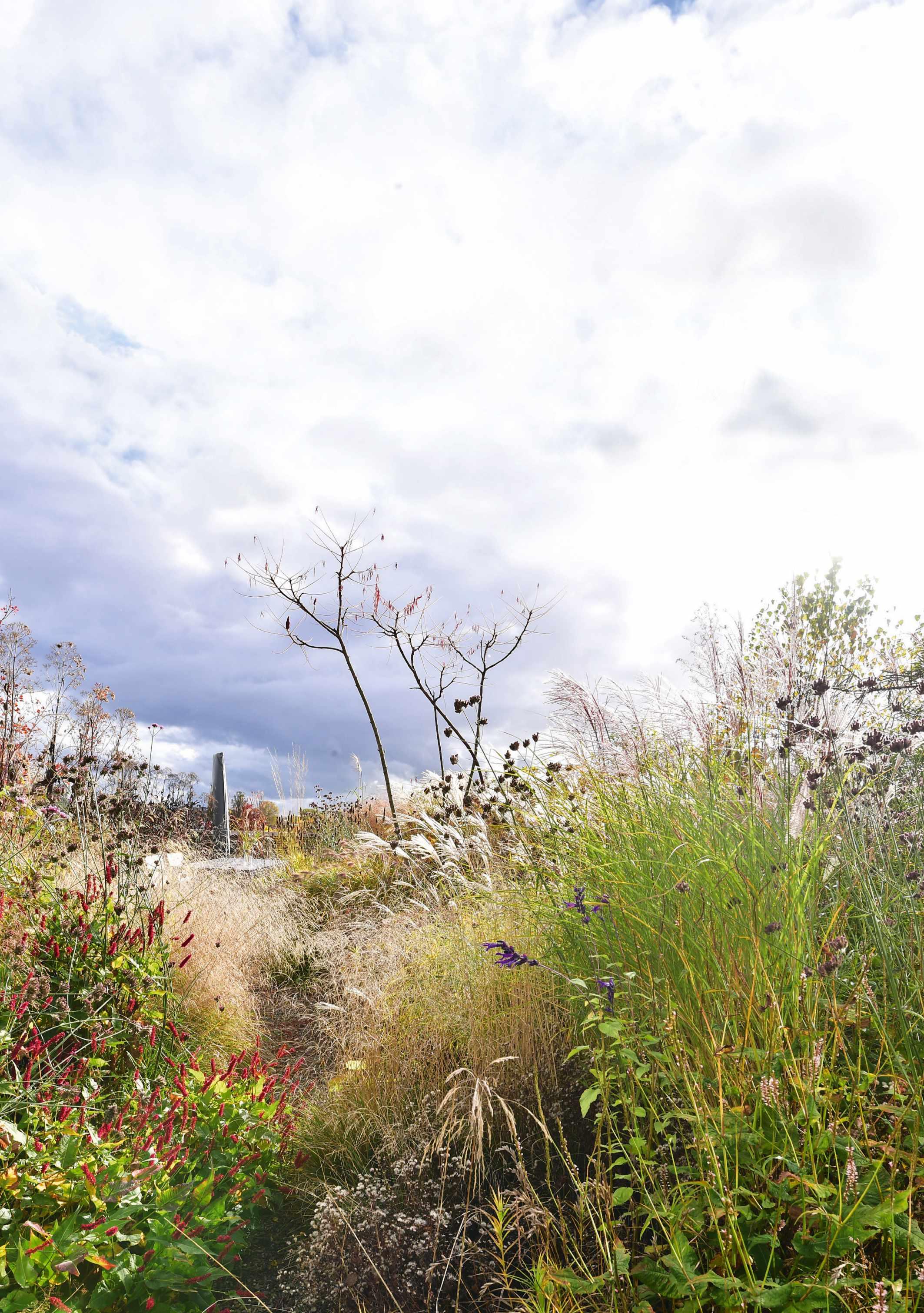
NOVEMBER 2022 GARDENSILLUSTRATED.COM 49
8 KEY PLANTS
1 Carex muskingumensis Semi-evergreen and clump-forming architectural grass. 1m x 1m. RHS H4, USDA 4a-9b†
2 Verbena bonariensis Tall, wiry stems carry clusters of purple flowers. 2m x 45cm. AGM*. RHS H4, USDA 7a-11.
3 Cotinus coggygria ‘Royal Purple’ Deciduous shrub with burgundy leaves that turn shades of yellow, orange and red in autumn. 5m x 5m. AGM. RHS H5, USDA 4a-8b.
4 Deschampsia cespitosa ‘Goldschleier’ Evergreen grass with dark-green leaves, golden-yellow flowers and seedheads to extend interest. 1.2m x 90cm. AGM. RHS H6, USDA 4a-9b.

5 Bistorta amplexicaulis A clump-forming perennial with salmon-pink flowers from summer to autumn. Useful for the middle of the border. 1.2m x 1.2m. RHS H7, USDA 4a-7b.
6 Eryngium planum ‘Blaukappe’ A clump-forming perennial with small blue flowers in late summer fading to interesting seedheads. 1m x 50cm. RHS H5, USDA 5a-8b.
7 Pennisetum alopecuroides ‘Hameln’ This ornamental grass with its fluffy flowerheads on long stems creates movement and texture. 1.2m x 1m. AGM. RHS H3, USDA 5a-9b.
8 Acaena microphylla ‘Kupferteppich’ Creates mats of bronze-green leaves and round red-brown flowers that fade well into autumn. 10cm x 15cm. RHS H4, USDA 6a-8b.
*Holds an Award of Garden Merit from the Royal Horticultural Society. †Hardiness ratings given where available.
1 2 4 5 6 7 8 3
his Dutch homeland with its intricate systems of dykes and canals often inform his designs. “I like to bring nature back into the garden,” he explains. Undulations in the substrate and organically shaped planting beds create a foil against the angular geometry of the concrete walls and neighbouring buildings. The garden overlooks a park, and echoes of the planting there, consisting mostly of grasses, found their way into the planting scheme.
Plants are valued for how they change through the seasons, and movement was a priority over colour. There is a predominance of grasses planted in groups of six or eight. Deschampsia cespitosa ‘Goldschleier’, Miscanthus nepalensis and Stipa gigantea are year-round stalwarts along with Pennisetum alopecuroides ‘Cassian’s Choice’ and Carex muskingumensis ‘Oehme’. The seedheads provide food for birds in winter, by which time the orange-red colours of stems and leaves make a pleasing contrast with the blue building. In summer, the palette is soft: white, purple, blue and some pink among green grasses in their summer livery.
“I planted tall and medium perennials, such as the pure-white Anemone x hybrida ‘Géante des Blanches’ and pale-pink Lythrum salicaria ‘Blush’, to draw the eye towards the views of the city, and to screen the garden
from the neighbours,” says Erik. Lower-growing perennials Podophyllum versipelle ‘Spotty Dotty’ and Epimedium grandiflorum ‘White Queen’ are among the groundcover plants outside the living room window from where the garden is viewed through Deschampsia flexuosa ‘Tatra Gold’.
Chosen for their ability to tolerate extremes of weather, the plants have proven themselves to be extremely robust in their relatively harsh environment. “This was a surprise to me,” says Erik. “I really didn’t expect that. In fact, many of the plants in this garden grow far better than they do in other gardens I’ve designed. They function like a complete eco-system here, and it’s made me rethink how I use these plants in other gardens and whether I should use them at all.” That was the first of two learning curves.
“Originally the design for this garden was much more complicated with wooden decking and so forth,” says Erik. “It became too expensive, and we had to cut the budget. Although we were disappointed not to fulfil the original design, I realised that less is more, and the outcome has been far more successful than I could ever imagine.” n
USEFUL INFORMATION
Find out more about Erik’s work at erikfunneman.nl
Graceful fountain grass, Pennisetum alopecuroides
‘Cassian’s Choice’, with its fluffy flowerheads partners with perennials and a variety of grasses to screen the garden from neighbours, providing privacy for the rooftop outdoor seating area.

NOVEMBER 2022 GARDENSILLUSTRATED.COM 51
PLANT PROFILE
What Trees from the genus Acer (mainly from the Acer section Macrantha, a group of about 20 species) that are grown primarily for their bark.

Commonly known as snakebarks.
Origins North temperate woodlands of eastern Russia, China, Japan, North Korea and North America.
Season of interest Year-round, but especially winter when the bark comes to the fore.
Size Small to medium-sized trees. Depending on species they can range from around 5m to 15m, but eventual height and spread will be governed by growing conditions and space available. The heights and spreads given here are averages after ten years. Some, especially those of relatively new cultivars are given as estimates (Est).
Conditions Well-drained but moistureretentive soil, lime tolerant.
Hardiness Generally hardy throughout northern Europe, with hardiness ratings of between RHS H5 and H6, and depending on species, suitable for gardens in USDA zones 2a to 10b.
*Holds an Award of Garden Merit from the Royal Horticultural Society. †Hardiness ratings given where available.
Acer tegmentosum
From the forest understorey of northeastern China and adjacent Russia and North Korea, this species is notable for its white-waxy new shoots and white striations on the trunk. The American cultivar, ‘Joe Witt’, has particularly good bark. 10m x 8m. AGM*.

ACERS FOR BARK
Many acers offer beautiful autumn foliage, but some species also have colourful, striped or peeling bark, offering interest throughout winter
NOVEMBER 2022 GARDENSILLUSTRATED.COM 53
WORDS JOHN GRIMSHAW PHOTOGRAPHS CLIVE NICHOLS
RHS H5, USDA 5a-8b†
Acer griseum
There are very many more plants of this popular species in cultivation than in its native China, but almost all derive from Ernest Wilson’s collections in the 1900s so the gene pool is small. One of the best small garden trees. 10m x 7m. AGM.
 RHS H5, USDA 4a-8b.
RHS H5, USDA 4a-8b.
Acer Viper (=
A recent introduction. Developing arching branches with age, this snakebark hybrid has reddish young stems that become greener with age. Broad, lobed leaves develop good autumn colours. 4m x 3m (Est). RHS H5.
Afew weeks ago I was in a forest on the banks of the Mississippi in Minnesota, where the dominant tree was the sugar maple Acer saccharum. Unscarred by syrup-tapping, the trunks were obvious by their shaggy, pale bark; obvious but not really ornamental. In their shade, however, grows another maple, the moosewood Acer pensylvanicum. Its bark is smooth and strokeable, deep green with a wriggle of grey lines through it.
Moosewood is the only North American representative of Acer sect. Macrantha, a group of about 20 species (taxonomists argue about delimitations) otherwise found in eastern Asia. All share the waxy striping of the stems, and are aptly known as snakebark maples, greatly valued in gardens for their beautiful bark. The pattern is most conspicuous on younger growth, slowly fading as the tree ages and the trunk thickens, though the bark usually remains distinctly green throughout the tree’s life. Most also develop excellent autumn colours, so it’s no wonder that they’ve become a much-loved feature of woodland gardens, with a diversity of species and selections available. Hybrids occur rather freely, so not everything sold may be true to name.
The most widespread Asian species, with a huge distribution throughout China, is Acer davidii, with largely green bark and elongated, heart-shaped leaves. Ultimately forming a broad-topped tree
This hybrid cultivar has Acer davidii in its background. It is a small, weeping tree that has pendulous branches with striking reddish bark. It is still relatively new to cultivation. 5m x 2.5m (Est). RHS H6, USDA 5a-7b.
up to 15m, it is a good choice where there is space. Numerous selections are available, with ‘Ernest Wilson’ and ‘George Forrest’ having stood the test of time. The subspecies A. davidii subsp. grosseri (formerly A grosseri) differs only in its three-lobed leaves, while A. davidii ‘Karmen’ has purple-tinged bark and narrow leaves that emerge a rich brown. For a slender tree, better suited to small spaces, try ‘Madeleine Spitta’, with typical striped green bark.
Often placed under A. davidii, but in fact a hybrid, is A. Viper (= ‘Mindavi’): it has really good white striations on green bark, with a vigorous upright habit when young. When A. davidii meets A pensylvanicum the hybrid is called A. x conspicuum – though the name is often used rather loosely for other snakebark hybrids – with good selections including A. x conspicuum ‘Silver Vein’ with wellsilvered green stems, and ‘Phoenix’ with orange-red bark. This is very effective in the winter garden, but perhaps the brightest of all the snakebarks is A. ‘Esk Flamingo’ (usually sold as ‘Red Flamingo’), whose new shoots are sealing-wax red, ultimately fading to apricot then yellowish-green. It is bright in summer too, with variegated foliage flushing pink – for the bold, the fullest effect is achieved by regular pollarding.
Bright sunlight enhances a snakebark’s stem markings, though in an exposed position spring frosts can nip the new shoots. My first choice would be ‘White Tigress’, an American cultivar probably involving A. tegmentosum. Its green bark is
To continue turn to page 59
 Acer ‘Cascade’
‘Mindavi’)
Acer ‘Cascade’
‘Mindavi’)
�e pattern is most conspicuous on younger growth, slowly fading as the tree ages and the trunk thickens
NOVEMBER 2022 GARDENSILLUSTRATED.COM 55
Acer negundo
‘Winter Lightning’
An exceptional cultivar of an often scruffy American species. Bright-yellow young shoots, at their best when regularly coppiced. May reach 1.5m in its first year. If grown as a tree, the yellow bark will be confined to short sections of new growth. 8m x 4m (Est).
AGM. RHS H6, USDA 2a-10b.

How to grow Acer
• Snakebarks are ideally grown in light, moisture-retentive soil; they are tolerant of lime. Drought is challenging, with many trees being defoliated. They are now probably not long-term plants for southeastern England, except in reliably damp places – part of the reassessment of our garden flora that climate change is forcing upon us.
• Avoid very exposed positions where they will be subject to strong winds or hard frosts, but stem colours are best where there is bright light.
• Plant the tree carefully, breaking up the rootball to ensure vigorous root growth and firm establishment, and ensure that the root flare (where the stem meets the roots) is at the surface. Never plant more deeply than this; be careful as sometimes trees are potted too deeply by the nurseries.
Acer ‘White Tigress’
One of the best snakebarks, the white striations are so abundant that they give the whole tree a ghostly pallor – plant it with a dark background. Introduced from the USA in 1995, its ultimate height remains unknown. 10m x 5m (Est).
RHS H5.
Acer rufinerve ‘Yellow Ribbon’
Offers pale-yellow stems with pinkish new shoots. In general this Japanese species has lobed leaves and diamondshaped lenticels alongside the rather faint bark striations. 10m x 5m (Est). RHS H5.
• Staking a young tree is recommended, and it is worth getting advice from the nursery where you buy your tree.
• Mulch the planting area and protect from pests (grey squirrels will strip bark). Water well for the first year or two until the tree is established, and keep the base clear of competing vegetation.
• Maple species are usually grown from seed, though hybrids are frequent among the snakebarks. To try growing your own, collect seed in early autumn and sow it promptly, keeping pots cool in winter before bringing under cover in early spring for germination. Prick out seedlings young and grow on in air pots. Semi-ripe cuttings of maples taken in early summer are often successful when placed in a propagator.
• Most cultivars from nurseries will be grafted on to a related rootstock; if
coppicing ensure the cut is made above the graft. If shoots appear from the rootstock below the graft union, remove by hand rather than cutting off.
• If a multi-stemmed specimen is required, coppice when young and select the required number of shoots to grow up, rubbing out others. To keep it low and bushy with the brightest stems, the tree can be coppiced every few years.
• To achieve a long clean stem remove side shoots early so they don’t form large scars, but ensure the tree always has a good canopy of growth to keep it vigorous.
• Among the hardiest species are A negundo, which is extremely tolerant, though waterlogged soil should be avoided. Coppice every two years. A griseum is also very hardy. It needs a well-drained soil, but it seems to be quite drought tolerant.

NOVEMBER 2022 GARDENSILLUSTRATED.COM 57
Acer davidii subsp. grosseri Hersii Group Green in all its parts, and lacking red pigment, the leaves of trees in this Group have long lobes. Autumn colours are good, on a frequently coppiced multi-stem tree. 10-15m x 10m (Est). AGM. RHS H5.
Acer ‘Mozart’
Grown in the Netherlands from wild-collected Chinese seed, this cannot be A. x conspicuum as sometimes stated, but though probably allied to A davidii, its true affinity remains uncertain. Striped red growth when young. 10m x 6m (Est).
Acer x conspicuum

‘Phoenix’
Bright orange-red, new shoots fade to coral over time. Sparse branching but one of the brightest for the winter garden. Large lobed leaves turn a good autumn yellow. 8-10m x 6-8m (Est). RHS H5, USDA 6a-9b.
Acer capillipes
This Japanese species tolerates heat better than most, with excellent markings when young ultimately developing corky ‘snakes’ over green bark. Provides clusters of fruit among reddening foliage. 15m x 10m. RHS H6.
Best considered a hybrid rather than a clone of A davidii, the sinuous branches bear unusual narrow leaves, giving it a lighter canopy than most snakebarks. The bark is purplish-green, with good striations. 10m x 4m (Est). RHS H5, USDA 5a-7b.
Found in New Zealand as a chance seedling, it is better known as ‘Red Flamingo’ in Europe. Rather pendulous crimson shoots bear brightly variegated leaves that emerge flushed pink. Keep it pollarded to maintain its brilliance. 5m x 3m (Est). RHS H5.
heavily snaked in white, visibly pallid in winter, and the canopy reliably turns yellow in autumn.
Good bark also occurs in other sections of the genus, and can be quite unexpected. Beautiful patterns are revealed as the bark of a mature sycamore A. pseudoplatanus flakes off, and the American A negundo has produced a few selections notable for their winter stem effect. Coppicing stimulates long, brightly coloured new growth, making them easy to associate with dogwood or willow. Most dramatic is A negundo ‘Winter Lightning’ with bright-yellow bark on young growth, but others such as A negundo var. violaceum have white wax over reddish-purple stems, giving a beautiful bright effect.
In any survey of favourite small garden trees, Acer griseum would come out very near the top. Slowly growing to develop an irregular cloud shape seldom more than 5-6m tall, its trifoliate leaves can be brilliantly orange and red in autumn, and would alone earn its place. But its real glory is the orange-red bark that exfoliates in sheets and curls, earning it the common name paperbark maple. The ideal placement would be somewhere where the trunk is struck by low winter sun, turning the bark on the west to brilliant red, while from the other side the peeling bits flame like stained glass. Strangely there are no named cultivars of A. griseum, the seedlings all being reliably good. Hybrids include A. ‘Gingerbread’, with the related
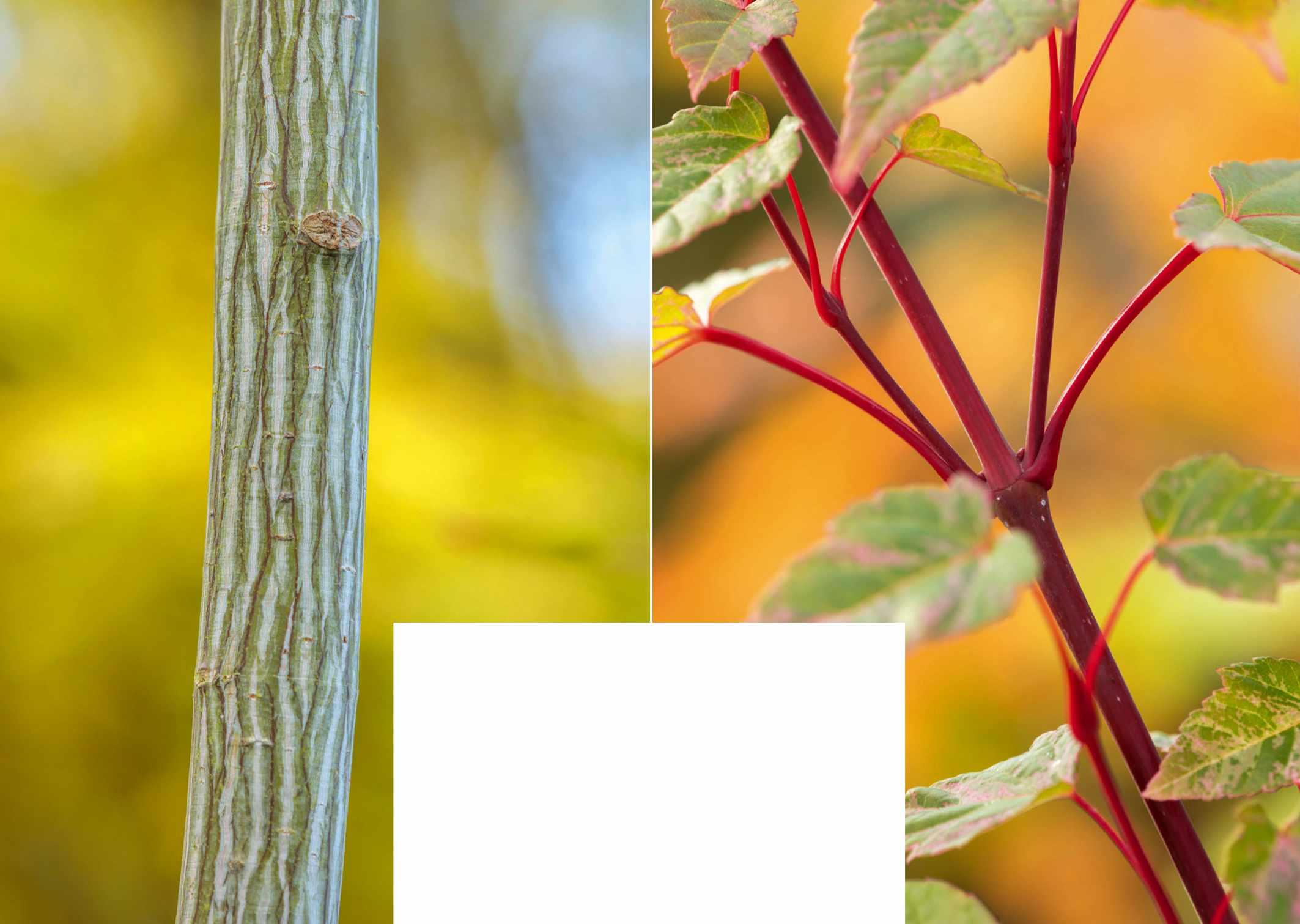
A maximowiczianum as the other parent, which has the russet bark and good foliage of A griseum on a straighter, more vigorous tree, though there is less exfoliation from the trunk.
I sometimes fantasise about creating the ultimate garden tree – Japanese maple foliage with snakebark patterns, or griseum flares, perhaps. Alas the genetics of the genus don’t seem to permit such fancies, and we must be content with the beauties we have. n
John Grimshaw is director of the Yorkshire Arboretum.
Where to see and buy
• Ashwood Nurseries Ashwood Lower Lane, Kingswinford, West Midlands DY6 0AE. Tel 01384 401996, ashwoodnurseries.com
• Bluebell Arboretum & Nursery, Annwell Lane, Smisby, Ashby-de-la-Zouch, Derbyshire LE65 2TA. Tel 01530 413700, bluebellnursery.com
• Frank P Matthews Berrington Court, Tenbury Wells, Worcestershire WR15 8TH. Tel 01584 812800, frankpmatthews.com
• Junker’s Nursery Milverton, Taunton, Somerset TA4 1NJ. Tel 01823 480774, junker.co.uk
• Larch Cottage Nurseries Melkinthorpe, Penrith, Cumbria CA10 2DR. Tel 01931 712404, larchcottage.co.uk
Acer ‘Serpentine’
Acer ‘Esk Flamingo’
NOVEMBER 2022 GARDENSILLUSTRATED.COM 59 MANY THANKS TO BLUEBELL ARBORETUM & NURSERY, DERBYSHIRE, BODNANT GARDEN, CONWY, LOWER BOWDEN MANOR, BERKSHIRE, OLD COURT NURSERIES & PICTON GARDEN, WORCESTERSHIRE, RAGLEY HALL, WARWICKSHIRE, RHS GARDEN WISLEY, SURREY, AND WILD THYME COTTAGE, STAFFORDSHIRE WHERE THESE IMAGES WERE TAKEN
In any survey of favourite small garden trees, Acer griseum would come out very near the top
IN BRIEF
What Private garden on a steep slope overlooking the Moselle valley. Where Germany.
Size 500 square metres.
Soil Thin, stony.
Climate Cool temperate, can be windy. Hardiness zone USDA 7.
Peter Berg’s trademark large rocks sit in stark contrast to the clean lines of his steel-andglass skywalk, which juts out from the modern house to offer spectacular views over the Moselle Valley. By using a limited planting palette of native shrubs, such as Corylus avellana, and grasses and perennials including Sesleria autumnalis, and Salvia nemorosa ‘Adrian’ Peter creates the illusion his rock walls are part of the mountainous terrain.

60 GARDENSILLUSTRATED.COM NOVEMBER 2022
Set in stone
In a sloping garden overlooking a river valley, Peter Berg has recreated a mountainside using carefully placed rugged boulders
 WORDS NOEL KINGSBURY PHOTOGRAPHS MARIANNE MAJERUS
WORDS NOEL KINGSBURY PHOTOGRAPHS MARIANNE MAJERUS
Garden designer Peter Berg loves rocks. He grew up in Eifel in western Germany, a mountainous region that borders Belgium. His grandfather was a quarryman, so geology is firmly in his genes – his surname even means ‘mountain’ in German.

It’s possibly then of little surprise to discover that rocks feature predominately in many of Peter’s gardens. Not just a few small stones but huge basalt boulders that Peter picks out from a quarry and then assembles on site, to create remarkably harmonious gardens that don’t imitate nature, as such, but offer a gently stylised version of it. “Rocks are like instruments playing their own song,” he says. “Our role is to bring them together as an orchestra.”
For Peter, the key to bringing the rocks together is learning to recognise the ‘head’ and ‘face’ of each one. Only once you understand rocks as individuals, he argues, can you assemble them effectively. It’s a creative process, more art than craft, and one that can’t be planned in advance.“It has to be
done in situ,” he explains. So, although Peter will draw up a basic concept of his gardens and carefully plan out the engineering considerations, such as how to support the soil, he deliberately doesn’t draw up detailed plans of where to site the rocks. For this, he needs the freedom to take decisions as and when necessary.
Peter’s artistry is clear from this private garden he has created high on a sloping site overlooking the Moselle River, near Piesport in western Germany. While some might have seen the steep slope as a problem, Peter has confidently embraced the possibilities it offers. Rather than use the more usual concrete, Peter has created retaining walls using carefully placed, rugged basalt rocks to build up what is essentially an enormous dry-stone wall. The effect is that of a rocky mountainside, from which rises the modern house with its sharp, clean lines. Leading out from the house Peter has added a dramatic, gravity-defying, steel-and-glass skywalk that juts out over the valley providing the clients with a bird’s eye view of the countryside.
Closer to the house, Peter has used smoothcut basalt stone for the steps and terraces to
To continue turn to page 66
Above Rather than rely on the more usual concrete for his retaining walls, Peter builds up layer upon layer of interlocking rocks to form what it is essentially an enormous dry-stone wall. The top of this wall holds plants, including Sesleria autumnalis and Salvia nemorosa ‘Adrian’, divided by basalt paving to create a natural look.
Right above In front of the house, rugged basalt boulders contrast with the sharp geometric lines of the smooth basalt lava Peter has used for the steps and terraces. Here again he has kept the planting simple and natural-looking using a limited colour palette of green and white.
Right below Slate dry-stone walls cover the outside of the basement level, linking this modern house to wilder parts of the garden. The clean lines of the steps are softened by the unusual aster cultivar, Symphyotrichum ericoides var. prostratum ‘Snow Flurry’, which hugs the ground and smothers itself in small white flowers, along with the fern Dryopteris affinis and foliage of Helleborus x hybridus both of which flourish in the shade of the slate walls.
62 GARDENSILLUSTRATED.COM NOVEMBER 2022
Only once you understand rocks as individuals, argues Peter, can you assemble them e�ectively

Gardening on slopes
Slopes allow garden makers di�erent perspectives – the opportunity to look down or up at plants –but they can be di�cult to construct and maintain, unless covered in shrubby groundcover plants. Concrete retaining walls are an ugly, and not very sustainable, solution although you can hide them with plants. Replacing these with rocks, as Peter does, requires skill not only to ensure you can support the soil behind it, but also to make it work aesthetically. Gabions are an attractive alternative, and as they can move slightly have the advantage of flexibility. Planting slopes needs plants that can move sideways, not just up – trees can lean outwards if the soil shifts, or becomes unstable; tall perennials can lean towards the light and fall over. Alternatively, suckering shrubs, such as Rosa rugosa and some species of Spiraea or Mahonia, are good options as they help stabilise the slope, and new shoots can pop up between rocks. Rhizomatous perennials, including Alchemilla mollis and Geranium endressii, are good for similar reasons. A tight mesh of robust naturalistic planting may be the best solution.

A variety of deciduous shrubs and small trees add to the feel that Peter’s carefully placed rocks are part of a natural landscape. In the wilder areas he has used European natives, such as Cornus mas, Acer campestre and Carpinus betulus, that take on predominantly yellow foliage shades in autumn. American and Asian species, such as Crataegus persimilis and Rosa rugosa, which often have red or purple autumn foliage, are kept for the more obviously gardened areas near the house.

NOVEMBER 2022 GARDENSILLUSTRATED.COM 65
echo the sharp lines of house. As a contrast, he’s also constructed more traditional dry-stone walls from slate that offer space for planting and help divide usable areas, including walkways, a car port and an outdoor kitchen.
Peter’s methodology owes far more to the ways in which Japanese and Chinese garden builders have used rock for centuries than it does to the European tradition of rock gardens. Not only has he travelled widely in Japan, but he has also worked alongside leading Japanese designer Kazuo Makioka at Europe’s largest Japanese garden, in Kaiserslautern in southwestern Germany, and has also collaborated with the experienced Japanese garden builder Hugo Torii.
In Japanese gardens, stones contribute much more than just structure to a garden; they are seen as dynamic elements in their own right, bringing energy to the garden. In Peter’s gardens, the more rugged rocks are combined with smooth-cut stone, metal, and, of course, plants, favouring woody plants for their permanent structure and the way their shapes can hold their own against stone, and yet be of a completely different visual quality.
Making gardens on slopes inevitably means working with thin, or limited, soils. As a result
plant growth can be slow, but for Peter this is a virtue. He makes a very definite point in favouring slower-growing trees and shrubs, which are more likely to develop distinctive shapes, and respond better to pruning.
Shaping plants over time is very much modelled on Japanese methods, aiming to create a feeling of harmony and contrast. They may sometimes be trimmed tightly (as is frequently the case in Japanese gardens), but are more usually allowed to grow loose, and their development guided more subtly. Grasses make a wonderful contrast to shrubs, with their lighter forms and constant motion in the breeze.
Over time the shrubs will grow out of the rocks at all sorts of angles, just as they would naturally grow in mountainous regions, creating the occasional illusion that the garden is more nature than design. Eventually, the elements that make clear this is a garden will begin to blur, adding to the illusion that it has been seamlessly blended into a wild landscape. n
USEFUL INFORMATION
For more information on Peter’s work visit gartenlandschaft.com/en/
Above Nearer the house, planting becomes more formal with a yew hedge softened by the tall grass Miscanthus sinensis ‘Goldglanz’. Colour is also more prominent here with the autumn foliage of Euonymus alatus and Crataegus persimilis adding contrast to the white Aster ageratoides ‘Starshine’, a relatively short cultivar with profuse autumn flowering. At the base of walls, an underplanting of Dryopteris affinis and Polypodium vulgare links back to the more natural planting around the boulders.
Right above Close to the house, retaining dry-stone walls hold a mix of shrubs, including Amelanchier x lamarckii, grasses, such as Molinia caerulea ‘Strahlenquelle’ and perennials including the wonderful trailing aster Symphyotrichum ericoides var. prostratum ‘Snow Flurry’, which helps to soften the edges of the wall.
Right below Near the entrance to the house, fiery foliage of Euonymus alatus creates a focal point. The stone driveway is edged with clumps of Miscanthus sinensis ‘Goldglanz’, yew pyramids, along with the purple aster Aster sedifolius ‘Nanus’ and Parrotia persica adding colour to the mix.

66 GARDENSILLUSTRATED.COM NOVEMBER 2022
Grasses make a wonderful contrast to shrubs, with their lighter forms and constant motion in the breeze

HORTICULTURAL WHO’S WHO OZICHI BREWSTER
The gardener helping people to better health on developing a love of nature at her grandmother’s knee, the pleasure of finding a purpose in life and the importance of putting people first
WORDS ALYS FOWLER PORTRAIT JASON INGRAM
Ozichi Brewster is the Royal Horticultural Society’s first therapeutic gardener, a role that sees her running the Community Well Being Garden at RHS Garden Bridgewater in Manchester. “It’s amazing what a garden can do,” she says. “Once people are truly working together, weeding, clearing, tending, then everyone becomes a team and people unite. Horticulture does this so readily and easily, bringing people together.”
It’s a job she seems made for but she very nearly didn’t apply. “I thought I’d stick out like a sore thumb at the RHS,” she says. Luckily for the RHS, her daughter made her see sense. “She said: ‘It’s a gardening job, it’s made for you.’”And she was right, although Ozichi’s route to this ideal job has been far from straightforward.
She has always loved nature. As a small child she lived with her grandparents in Nigeria. “My parents were having to juggle work, education and childcare in the UK, so they sent us back to live with our grandparents,” she says. “It was the best thing that ever happened to me. My love for the earth and respect for nature comes from living a village life; all my food was dependent on what was around me. My grandmother taught us to forage, grow and produce the food that we needed. We didn’t call it gardening; it was part of living within nature.”
Aged nine, she returned to live with her parents in Streatham. “I was shocked by the different way of living,” she says. But her parents did have a garden. “It was a typical Victorian terrace that had been a bit of junk yard, but my mum and I cleared it and started to grow veg,” she says. “It was not so much part of the natural landscape as it had been in Nigeria, but it was better than nothing.”
their mental health and I became very interested in how people fall through the loopholes,” she says. She became an advocate both as a legal representative for patients and as a panel member of the tribunals overseeing patients. “It was a very good job, but a very draining one,” she says. One day she found she physically couldn’t get out of bed. “My body caved in. I was burnt out.”
So, in 2005, realising something had to change, she returned to her first love, gardening. “I got an allotment, I started growing again,” she says. “I went back to tribunal work, but I’d turn up breathless because I’d come straight from my vegetables.”
Eventually, in 2010, she handed in her notice and looked for a way that she could combine the work that she loved: people and plants. She took some courses with the Centre for Alternative Technology and the Brighton Permaculture Trust, and she saw a way forward, one that embraced community and a better way to live. “I started to relax. The courses gave me permission to do things differently,” she says. “I didn’t have to get back to the countryside to be with nature, I could find it in Croydon.”
MAGIC. AND ONCE THEY GET THE OPPORTUNITY TO STEP FORWARD, THEY CREATE MAGIC
She started to teach gardening and healthy eating and set up a garden at a local school for children with severe special needs. “If you’re truly people centred and meet people where they are, then you can make a difference,” she says. “You have to work with both the people and the space to make somewhere that anyone can be included and involved, which really calls for observing rather than forcing anything, so that you can find something for everyone.
When she left school she took on a range of jobs with supporting people at their heart. One of these was working for the Paddington Farm Trust in Glastonbury, an innovative farm created to introduce Londoners to country life. “It was a 42-acre mixed farm and I was residential centre manager. I organised the programmes for the residents, everything from hedge laying to lambing. I really thought I’d found my place in the countryside with that job.”
Ultimately, the need to balance work with childcare made this ideal job unviable and took her first to Bristol, working as National Helpline co-ordinator for Women’s Aid, and eventually back to London where she worked for a firm of solicitors specialising in mental health work. “At the time there was not good representation for people detained in hospital because of
“We all need a purpose in life, we need to feel useful. If you can get someone to a place where they can feel part of a team and make a beautiful space, whether that’s planting something or just sweeping up the area, then because that change is quite instant, it’s appreciated. And when someone sees they are appreciated, they feel good.”
Ozichi sees her current role as facilitating and supporting rather than leading. “People are magic,” she says. “And once they get the opportunity to step forward, they create magic. We have volunteers here at the RHS from all walks of life making something truly beautiful.” And it really is. Ozichi has created something unexpected and already very cherished, which makes the RHS very lucky indeed. n
PEOPLE ARE
68 GARDENSILLUSTRATED.COM NOVEMBER 2022
USEFUL INFORMATION RHS Garden Bridgewater, Occupation Road, Salford, Greater Manchester M28 2LJ. Tel 0161 503 6100, rhs.org.uk


70 GARDENSILLUSTRATED.COM NOVEMBER 2022
In his garden Foggy Bottom, part of the Bressingham Gardens in Norfolk, author Adrian Bloom has used the pampas grass Cortaderia selloana ‘Pumila’ at intervals along a long border. Their inflorescences are at their freshest and most dramatic against autumn leaf colour.
Back in style
Once hugely popular, pampas grass fell out of fashion, but along with growing numbers of dried-flower enthusiasts, nurseryman Adrian Bloom is keen to show they have much to offer the modern garden
WORDS ADRIAN BLOOM PHOTOGRAPHS ADRIAN AND RICHARD BLOOM
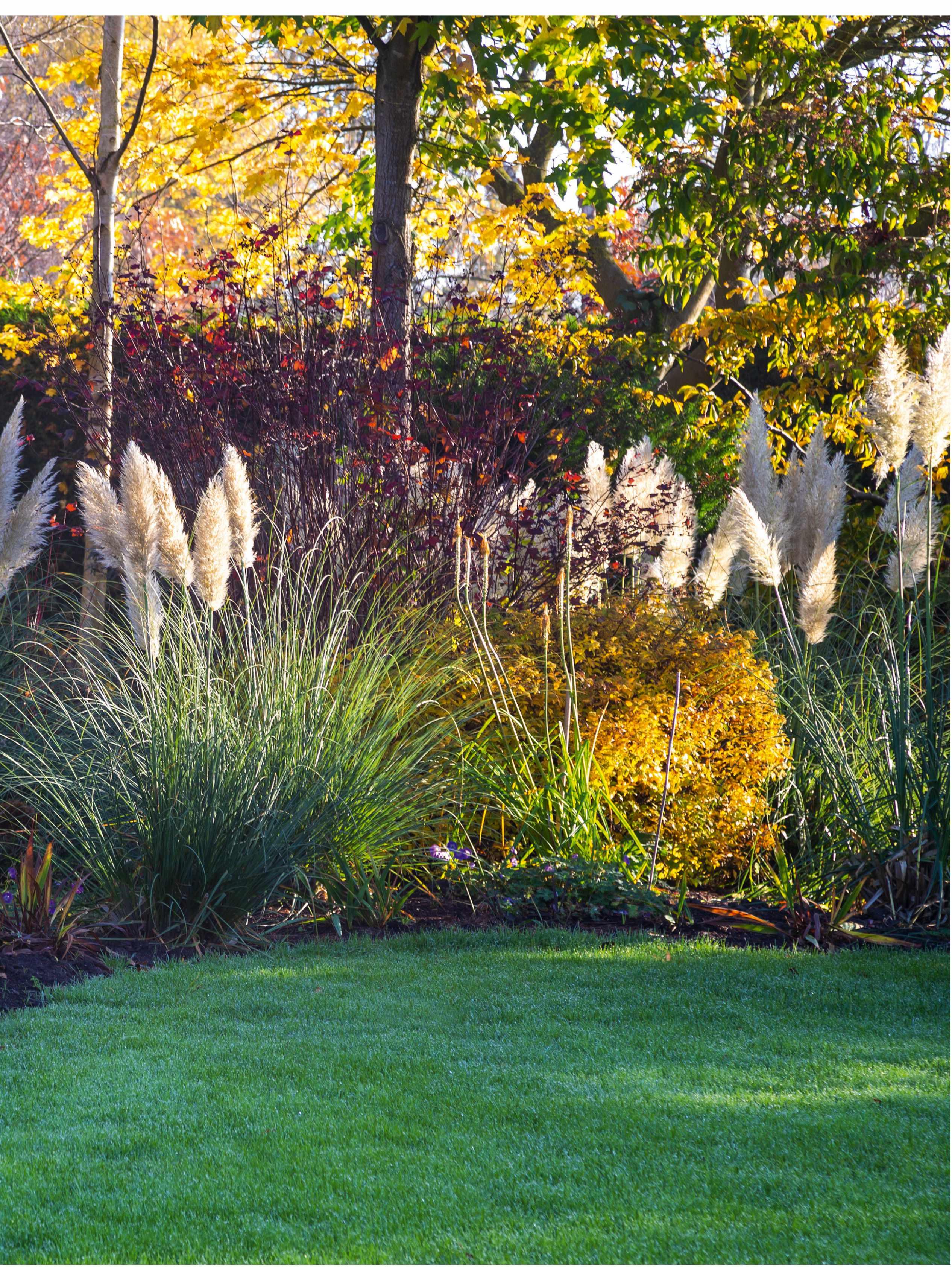
Big, bold and beautiful might describe the range of grasses that are commonly known as pampas grass. Most belong to the genus Cortaderia, originally described from Montevideo in Uruguay in 1827 as a species of Arundo. It was given the name pampas grass from the vast colonies that occur in central Argentina, but it is also native to Chile, Peru, Bolivia, Paraguay, Uruguay and southern Brazil.
While few Cortaderia selloana fit comfortably in a small garden (though there are dwarf forms being developed that may yet prove themselves) that shouldn’t stop a re-appraisal of some plants currently in cultivation and their use in modern gardens.
Cortaderia selloana varies widely in its native habitat as well as from collected seed. The species was first introduced to Britain in 1842 and is still represented by only a few cultivars. Most often seen is the popular cultivar Cortaderia selloana ‘Pumila’. It takes its name from the Latin for dwarf, although once established, this is a cultivar that can end up with spectacular white plumes that reach more than two metres in height.
Given reasonable soil and good drainage in winter, Cortaderia selloana is hardy in most parts of Britain and is long-lived. Climate is important – Cortaderia selloana would seldom get through
the winter in much of New England, while it has become a weed in the balmier climate of California. Forty years ago in my own garden at Foggy Bottom in Norfolk, I planted several cultivars of Cortaderia selloana close to each other with some conifers behind – the tree roots affording the grasses good winter drainage on heavy soil. As the conifers grew in height to ten or more metres, they shaded out the pampas grasses, which held on, but seldom flowered. Moving the pampas elsewhere might have been the obvious option, but I had a bigger plan and cut down two large conifers. This not only opened up the view but gave my pampas a new lease of life. Now every late summer and autumn, these grasses are an arresting feature, creating a spectacular show of silvery plumes, highlighted against a darker background. Foggy Bottom is big enough to use Cortaderia selloana ‘Pumila’ in quantity, and I have planted it at intervals along a long border with an evergreen backdrop. The plants are largely hidden until early September, when emerging spikes open to fluffy silvery white inflorescences that sparkle in the morning and evening sunlight. In one section, I have extended the planting to make an even greater autumn and winter impact. C. selloana ‘Pumila’ stands up to our winter winds, and the plumes, though less fluffy, are still attractive in April. One of the most striking pampas grasses is called C. selloana ‘Sunningdale Silver’. Its giant

4 KEY PAMPAS
1 Cortaderia selloana ‘Aureolineata’ Sometimes sold as C selloana ‘Gold Band’, this pampas grass has evergreen foliage that looks attractive in the garden most of the year and is striking in close-up. 1.8m x 1.2m. AGM*. RHS H6, USDA 8a-10b†
2 Austroderia fulvida A New Zealand grass with more refined inflorescences. The long-lasting heads add a graceful presence close to water and among lower-growing perennials or shrubs. 2m x 1m. RHS H5 .
3 Cortaderia selloana ‘Sunningdale Silver’ Long spikes emerging in early autumn with large terminal inflorescences towering over 2m high. Hardy, but stems are easily broken without shelter from autumn winds. Shown here with Kniphofia tysonii and other perennials. 2.4-3m x 1.5m. RHS H6, USDA 8a-10b.
4 Cortaderia selloana ‘Pink Phantom’ Wispy inflorescences open as a striking pink, but fade to white. Arguably, the silvery white is a better match to the variegated foliage. 1.8m x 1.2m. RHS H6, USDA 8a-10b.
72 GARDENSILLUSTRATED.COM NOVEMBER 2022 *Holds an Award of Garden Merit from the Royal Horticultural Society. † Hardiness ratings given where available. ELKE
/
BORKOWSKI
GAP PHOTOS
Star of the show among the frosted perennials, including Verbena bonariensis and Salvia x jamensis ‘Hot Lips’, are the plumes of an established clump of Cortaderia selloana ‘Pumila’.

1 2 4 3
flowering spikes and terminal plumes reach over 3m. These are held on long stems and unless planted in a very sheltered position, they are likely to be blown over by the first high wind of autumn.
There are some cultivars that are grown as much for their foliage as their inflorescences, notably C. selloana ‘Aureolineata’, also known as C. selloana ‘Gold Band’. Often shy to flower, it is still a useful foliage plant with distinctive golden edges to the leaves. In a similar way, also sparse in flowering, the white and green arching leaves of C selloana ‘Silver Comet’ is a perfect foil for an orange-flowered plant such as Crocosmia x crocosmiiflora ‘Star of the East’. In recent years, large clumps of these pampas cultivars have grown to be strong and hardy specimens among perennials in my father Alan Bloom’s Dell Garden.
Finally, in this selection of variegated foliage cultivars is one that was trialled at Bressingham, called C selloana ‘Pink Phantom’. The leaves are broad and edged white, and the inflorescences are a distinct pink on opening but soon fade to a pale pink, then to white. Perhaps taller in moister climates, here in Norfolk on well-drained soil in sun, the foliage is around 1.2m and spikes 1.8m.
Two somewhat similar species, originating from New Zealand, that are well worth considering have now moved from Cortaderia to Austroderia: Austroderia fulvida and A richardii. These were once considered on the borderline of hardy in
the UK, but recent warmer UK winters mean they now seem reliable and offer a more graceful appearance than the denser pampas grasses. The arching, finely spaced inflorescences of A fulvida reach over two metres and are nicely placed to hang gracefully over lower plants, while A. richardii is taller and more one-sided with larger heads. At Bressingham, this towers above perennials in the first island beds Alan Bloom planted in front of Bressingham Hall. Both are summer flowering.
Finally, for those who might find it useful to have an early flowering pampas grass – one that starts flowering in June rather than September –there is a cultivar of C selloana called ‘Patagonia’ that does exactly that. It was discovered by the American nurseryman Kurt Bluemel in the Argentinian province of Patagonia, and we have used it extensively for more than ten years in the Summer Garden at Bressingham, where its early performance has made an increasingly dramatic show. n
USEFUL INFORMATION
Address The Bressingham Gardens, Low Road, Diss, Norfolk IP22 2AA.Tel 07300 100445. Web thebressinghamgardens.com
See website for details of opening times, and The Bressingham Gardens Nursery shop which offers some of the pampas grasses featured here.

Above This single specimen of the variegated pampas grass in the Dell Garden at Bressingham, Cortaderia selloana ‘Silver Comet’ has been in its present position for about 30 years. Shy to flower, its foliage nonetheless provides an extremely effective background to the fiery orange Crocosmia x crocosmiiflora ‘Star of the East’.
Right Growing up to around 2.4m, the prominent spikes of Cortaderia selloana ‘Patagonia’, rise above the pink heads of Eupatorium cannabinum. This summer-flowering pampas grass was grown from seed collected in Argentina by the plantsman Kurt Bleumel. Still little known in the UK, this cultivar offers opportunities to gardeners wishing to have an early summer flowering pampas.
74 GARDENSILLUSTRATED.COM NOVEMBER 2022
How to grow pampas grass
• Plant in sun or half shade in free-draining soils clear of perennial weeds. Planting from pots or containers can be done at most times of the year Prepare the area, allowing space for a full display of what will become a large clump.
• Cut back old stems and a third of the foliage in spring. Catching the sharp-edged leaves wrongly with bare hands can give you a cut, so it is best to wear sturdy garden gloves.
• Divide large clumps of pampas grass in late spring. Cut back foliage to 45cm. Dig around roots with a spade and lift the clump, removing most of the soil to make the plant easier to split. Lay clump on its side and insert two garden forks into the centre of the clump back-toback. Pull fork handles outward and prise the clump apart.
If split clumps are still large, split again, otherwise splitting can be done by hand, this time with two hand forks. Long roots can be cut and shortened by half. Plant slightly deeper than before as new roots will soon develop near the crown.

In late summer and autumn, these grasses are an arresting feature, creating a spectacular show of silvery plumes
A close-up of a table runner embroidered with a delicate spray of dill. The use of different-sized threads and ribbons allows Lora to create subtle variations of texture, which are enhanced by the plain linen background.
Facing page From the window of her studio Lora can see the plants and flowers that inspire so much of her work. “I echo the garden in my embroideries,” she says.

Ornamental plants
Textile and embroidery artist Lora Avedian’s latest botanical-inspired collection is an ode to the flowers growing in her garden
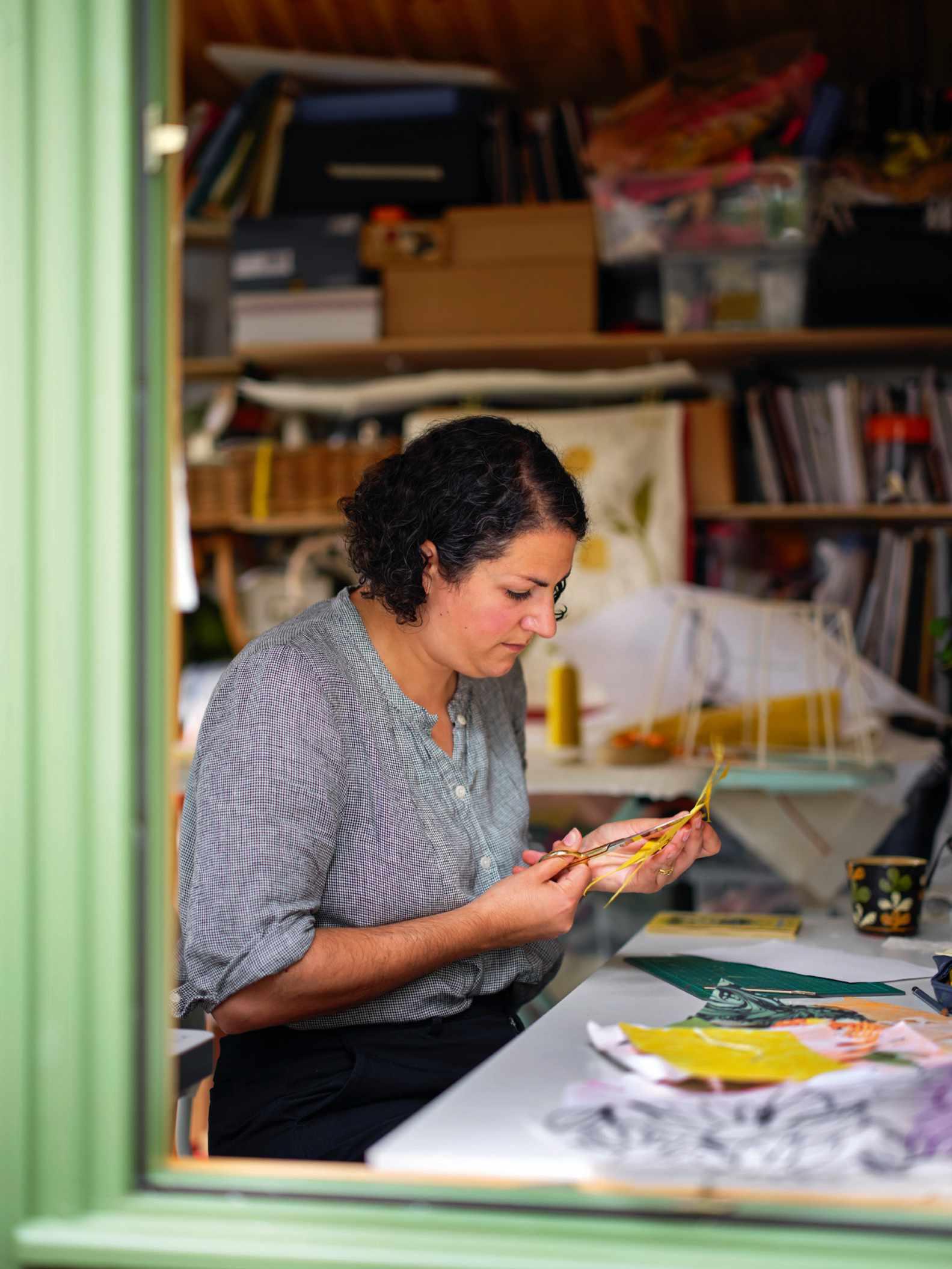
NOVEMBER 2022 GARDENSILLUSTRATED.COM 77
WORDS DIANA WOOLF PHOTOGRAPHS CRISTIAN BARNETT
This page (from left to right)
Lora enjoys making beautiful items for the home that can also be used every day, such as embellished linen aprons.
Lora’s tiny studio at the end of her garden is surrounded by the pot plants she nurtures through the year.

Lora’s design process starts with a simple sketch and then she experiments with different combinations of fabric, texture and colour before she starts work on the final design.
Textile artist Lora Avedian has followed a slightly unusual career path, as she started her professional life as a set designer working on fashion and photography shoots. “I was making a lot of paper props and paper flowers. I really enjoyed making these beautiful, natural objects and trying to replicate nature in a different material,” she says. However, after seven years, she eventually tired of making intricate objects that were thrown away following every shoot. “I wanted to start making things that people could actually use,” she says.
A former tutor suggested she sign up for the MA in Mixed Media Textiles at the Royal College of Art, which allowed her to change direction. She had always been interested in textiles, but it was quite a leap. “It felt a bit of a crazy decision at the time, but I’m glad I did it.” Her gamble paid off and, after graduating in 2017, Lora successfully set up her own business producing a range of soft furnishings, including boldly patterned cushions, wall hangings and
lampshades as well as delicate floral collages. She is primarily interested in texture and works mainly in embroidery, a technique that allows her to add relief to the fabric surface as well as pattern. “It’s all about tactility and colour,” she says. “I love using different textures such as shiny and matt, putting them next to each other and trying to create texture in my work.”
Lora spent the summer working on a new collection of soft furnishings embroidered with large echinacea flowers. The designs start life as rough sketches and then Lora scales the drawings up, transferring them first on to tracing paper and then on to the fabric. Although the designs seem relatively simple, closer inspection reveals how much surface variety Lora is able to introduce by using different techniques and materials. The coneshaped flowerheads are created with grid-like rows of ricrac (zigzag-shaped braid), while the spiky petals are formed using single lengths of carefully folded, ribbed viscose ribbon. Both are held in place by couching, a method of embroidery in which materials laid across the surface of a fabric are held in place by
78 GARDENSILLUSTRATED.COM NOVEMBER 2022
well as the natural world,
is inspired by a variety of antique
 As
Lora
objects she finds, including this Victorian runner embroidered with chenille flowers, which she has pinned to her studio wall.
As
Lora
objects she finds, including this Victorian runner embroidered with chenille flowers, which she has pinned to her studio wall.
Combining different colours is an important element of Lora’s work and one of her favourite parts of the making process is marrying varied shades with varied textures to create a single harmonious design.

This page (from left to right)
Some of Lora’s work is hand stitched, while other sections are machine embroidered using a freehand technique Lora has perfected over the years.
Lora uses an embroidery hoop to help keep the material in position while she is working.
Echinaceas are currently Lora’s flowers of choice as she loves their simplicity. They feature prominently on her latest range of cushions. Other favourites include rudbeckias, dahlias and zinnias.
smaller stitches. Originally Lora did this by hand but has now worked out a way of stitching the ribbon and braid down using her sewing machine. “I stitch a bit, then fold it over, then stitch it down a bit more and then fold it back on itself. It’s a bit like origami.” The stems and leaves are embroidered in rayon using a simple satin stitch. Each thread and braid has a different texture to reflect the light in a different way, and their sheen creates a glowing contrast to the matt linen background. These embroideries are inspired by the flowers Lora grows next door to her tiny garden shed studio and she confesses to being slightly obsessed with echinaceas and rudbeckias. “I’m not sure why, but I’m really interested in them, perhaps because of their simplicity.” Studying flowers in nature is an important part of Lora’s design process and she often photographs or sketches them as a visual aide-memoire. She is also inspired by historic artefacts including antique textiles and ceramics, and is particularly drawn to Poole Pottery pieces from the 1930s, relishing their bold, playful designs. Materials and colour also feed into her designs and sometimes Lora will be inspired by a particular
fabric found in a market or in a forgotten corner of her overflowing studio. Her head is teeming with ideas. “I’m generally quite quick with coming up with designs, but the practicality of how I translate them into stitch is more challenging,” she says.
Lora also creates collages out of painted cut paper. Inspired by flowers, including dahlias, zinnias and heleniums, bought at her local florist, they are a gentle mix of naïve charm and careful naturalism and underline her skill in manipulating shape, colour and texture. Together with her embroideries, they reflect Lora’s interest in using inspiration from the natural world to create eye-catching yet practical objects for the home. “I love the idea of making a world of flowers in your house, and interior design is a nice way of doing that.” n
USEFUL INFORMATION
Stitch in Bloom by Lora Avedian is published by Hardie Grant Books (UK). Lora runs online and in-person workshops and has just launched her new collection, An Ode to Echinacea, at Pentreath & Hall, London, which is now available on her website. Find out more at loraavedian.com

NOVEMBER 2022 GARDENSILLUSTRATED.COM 81
GOLDEN GLOW
With a careful choice of just a few key plants and clever landscaping, this tiny garden transforms into a woodland with a fiery autumn peak

WORDS KATE JACOBS PHOTOGRAPHS CLIVE NICHOLS
IN BRIEF
What Small, residential city garden with woodland-style planting. Where London. Size 74 square metres. Soil London clay soil, improved with organic compost and peat-free soil improver. Climate Temperate. North-facing and shaded by surrounding buildings and trees. Hardiness zone USDA 9.
Urban gardens are becoming ever more squeezed, thanks in part to the rising popularity of rear extensions and garden studios. This means that garden owners and designers have to do more with less, as well as creating a sense of cohesion between extensions, studios and the outdoor space in between. That was just part of the challenge presented to landscape designer Alasdair Cameron by Tom and James, the owners of an attractive Victorian end-of-terrace in west London. Tom and James had recently extended their home, to add on a new kitchen-dining room at the back. Their architects had made the popular move of choosing a floor material – large format grey porcelain tiles – that has been continued outside across the new terrace. When the extension was done, the couple asked garden room specialists Shackadelic to start work on a cedar-clad gym before turning their attention to the garden. Since both the extension and
the gym overlook the garden, Tom and James’s brief was to create a stunning year-round vista from both viewpoints, as well as making the garden a calm and meditative space in which to spend time. Alasdair’s response was “to inject that wonderful element of nature, a feeling of a woodland dell, into this small, square space.”
The couple live a few steps from the buzz of a busy high street yet the garden finds itself nestled among the attractive, mature trees in the surrounding gardens. Alasdair has used these as borrowed landscape that softly envelopes the space. To help the garden merge with these surrounding trees and create a truly green vista, he has planted the garden’s fences with climbers, including evergreen Trachelospermum jasminoides and Stauntonia coriacea . “They’ll fill out to create a green curtain, making this small space feel unbounded,” says Alasdair.
A route between the two buildings was an obvious essential and Alasdair devised a free-form curving path, using materials that provide a good tonal match for the terrace’s rectilinear tiles, but
Above left To link the house to the gym at the rear of this small city garden, Alasdair has created a sinuous path that winds like a river through shade-loving plants that include Asarum europaeum, Eurybia schreberi, and ferns Blechnum spicant and Polystichum setiferum. The gravel, with its pools of Soleirolia soleirolii and relatively small Purbeck pitchers, add to the woodland feel of this small garden and create a contrast to the clean lines of the terrace.
Above right A multi-stemmed Parrotia persica underplanted with Origanum majorana creates an enclosed and sheltered space for a pair of Adirondack chairs and a firepit, allowing owners Tom and James to continue to use the garden well into autumn. The vigorous climber Stauntonia coriacea will soon cover the fence behind to envelope the area in green.

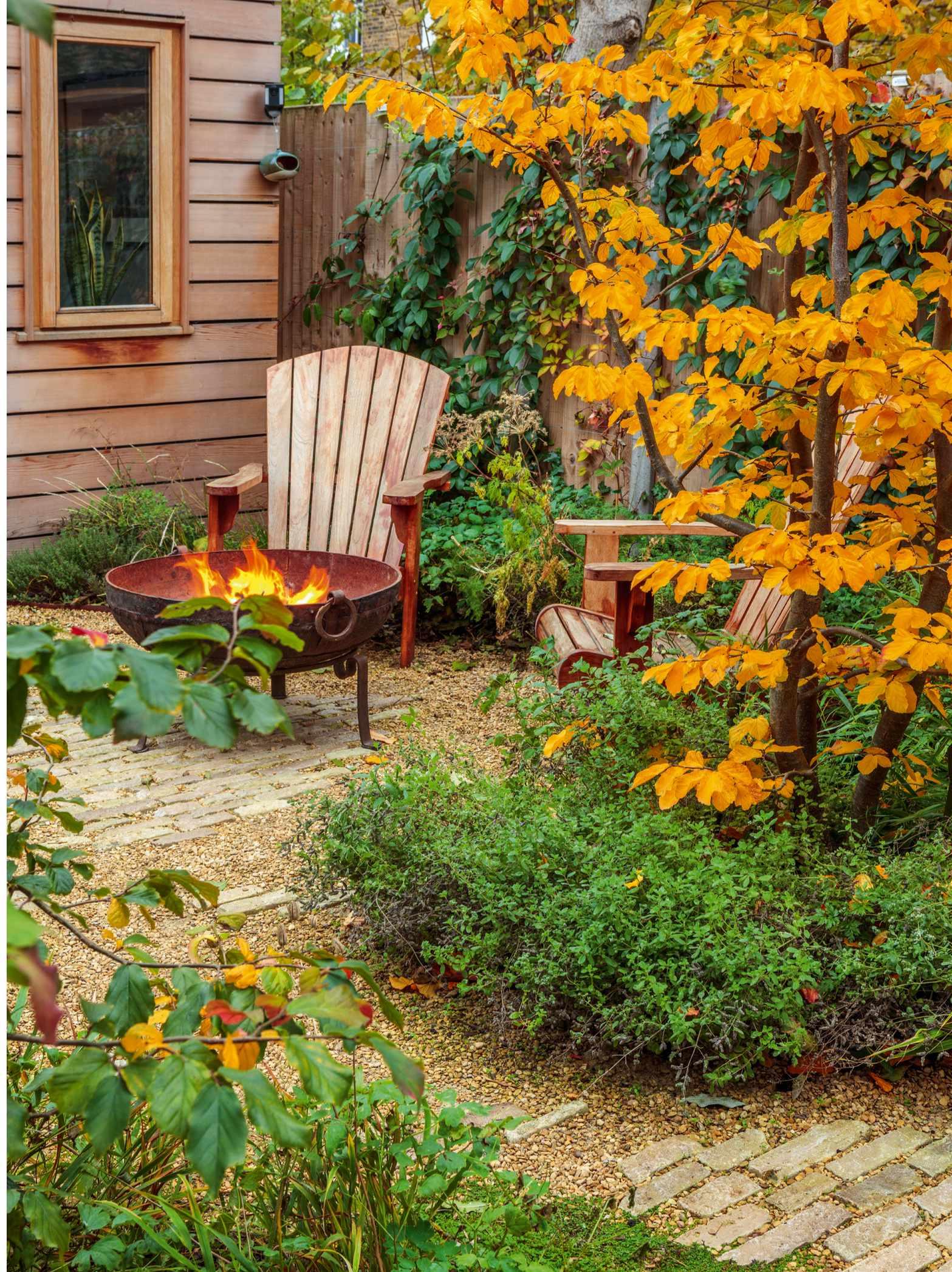
NOVEMBER 2022 GARDENSILLUSTRATED.COM 83
4 KEY PLANTS
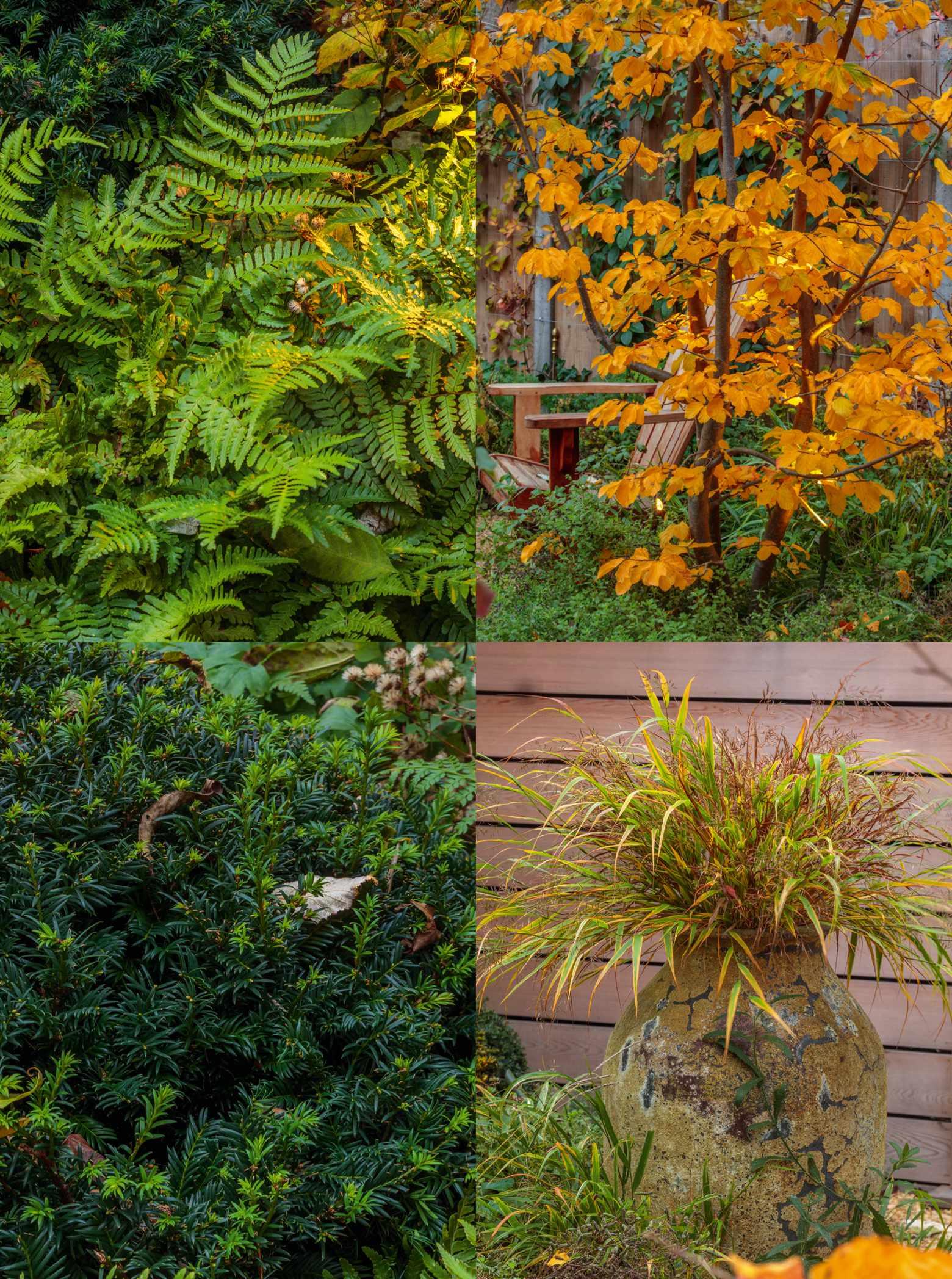
1 Polystichum setiferum The graceful fronds of this shade-tolerant native fern emerge upright before falling open as they unfurl, providing textural foliage to contrast with the surrounding grasses in this green-focussed planting scheme. 1.2m x 50cm. AGM.* RHS H7, USDA 6a-8b†
2 Parrotia persica A slow-growing tree, chosen for its interesting forms and autumn colour. In this garden the three trees are topped once a year to keep them at the optimal height. 8m x 8m. RHS H6, USDA 4a-8b.
3 Taxus baccata Yew provides year-round interest with its dark green tone, and helps to anchor the perennial planting. Alasdair has used a trio of loose, shaggy yew domes, which work in tandem with the three Parrotia persica trees to create rhythm in this small garden. 20m x 10m. AGM. RHS H7, USDA 6a-7b.
4 Hakonechloa macra The tactile, shaggy hummocks of this arching grass bring a sense of movement to the planted areas. This Japanese forest-dwelling grass is used both as a groundcover and as a focal point in this tall Atlantis pot. 35cm x 40cm. AGM. RHS H7, USDA 5a-9b.
are also a deliberate contrast and provide a literal change of pace. Stepping on to the Cotswolds pebble gravel encourages you to slow down and fully experience this immersive space. Sections of staggered Purbeck limestone pitchers, interspersed at random across the path, not only add points of interest but also help to hold the gravel in place.
“The path is almost like a river,” says Alasdair. “Meandering through the green, widening and narrowing, and bringing a sense of movement that helps to make the garden feel bigger.”

If the path deliberately slows down your progress through this small garden, the detailed planting captures and holds your attention. “In a small urban garden, which almost always means semi-shade, you can’t beat a green palette with varying texture, form, shape, structure and foliage,” explains Alasdair.
Punctuated by domes of Taxus baccata, the softly undulating beds feature many native plants and knit together intricate groundcover including Galium odoratum and Asarum europaeum, with ferns, Polystichum setiferum, and Dryopteris erythrosora, and grasses
84 GARDENSILLUSTRATED.COM NOVEMBER 2022
1 2 4 3 *Holds an Award of Garden Merit from the Royal Horticultural Society. † Hardiness ratings given where available.
Hakonechloa macra and Sesleria autumnalis, which catch the slightest breeze, adding to the strong sense of movement here. “The overall effect is tactile, textural and overwhelmingly green,” says Alasdair.
While the brief of creating year-round vistas might not suggest deciduous trees, Alasdair used a trio of multi-stemmed Parrotia persica as focal points at the heart of the garden. “With so much evergreen planting in this garden, we felt we could afford this key element of seasonality,” he says. Along with their show-stopping autumn colour and interesting winter forms, the three trees sit quite low in the garden, occupying a different space to the tall trees around them.
“Their multi-stemmed forms draw the eye around the garden,” says Alasdair, “and hold the energy within this small space.” Alasdair may have squeezed a lot into this urban plot but he’s succeeded in doing so while giving this mini woodland garden the space to breathe. n
USEFUL INFORMATION
For more information on Alasdair’s work visit camerongardens.co.uk
Above Grey porcelain tiles create a sense of unity between the kitchen extension and a wide terrace, bordered to one side by a timber, tall cold frame. Beyond, three multi-stemmed Parrotia trees screen the cedar-clad gym and bring definition to the garden creating visual links with mature trees in the surrounding gardens. In the foreground, a mix of woodland planting, including the Japanese forest grass Hakonechloa macra and ferns, such as Polystichum setiferum and Dryopteris erythrosora, create a fresh natural feel punctuated by domes of yew, Taxus baccata, for year-round structure.

�e path is like a river, widening and narrowing, and bringing a sense of movement, that helps to make the garden feel bigger

86 GARDENSILLUSTRATED.COM NOVEMBER 2022
Located at the gates of the subtropical Tremenheere Sculpture Gardens in Cornwall, the nursery Surreal Succulents offers a wealth of rare and interesting succulents, along with a range of bespoke ceramic and glass terrariums designed for growing these plants.
Out of this world
At their nursery Surreal Succulents in Cornwall, Mark Lea and Daniel Michael are developing exciting new hybrids
 WORDS MAT REESE PHOTOGRAPHS JASON INGRAM
WORDS MAT REESE PHOTOGRAPHS JASON INGRAM
Container style
A signature design feature at Surreal Succulents are the smart Corten steel planters brimming with succulents, and here is a good example. The bright rosettes of Echeveria agavoides draw attention, as does the stressed red foliage of Echeveria colorata ‘Desert Harmony’. Cotyledon orbiculata makes a good contrast to the rosettes, and the Chamaerops humilis palm tree lends height to the composition. The planters exhibit an earthy hue that contrasts with the smooth fresh succulent foliage and are the brainchild of designer Mark Lea. By keeping the bowls shallow and sleek, there is not a huge reservoir of compost, which if sat wet would cause the succulents to rot. Instead, the succulents thrive like little jewel gardens in the wide-brimmed pots. The soil is mounded to increase the surface area and display the succulents better. When planting, start with the more striking feature specimens, then work in the background planting. Water when the soil has completely dried out and feed through the growing months.

ot too far from the seaside town of Penzance, and within the grounds of Tremenheere Sculpture Park, is the fabulous Surreal Succulents. It houses a very fine collection of succulents, all displayed in a perfectly formed nursery. Secured behind a neat, wooden picket fence, it is well laid-out and has a strong emphasis on design. Smart, bespoke tiered staging displays drip with jewel-like aeoniums, agaves and haworthias, to name but a few, all at their absolute best. The main focal point, however, must be the uber-smart sales shed with its trendy beach-cabin vibe and an amazing succulent-studded living roof.
Surreal Succulents is an exciting collaboration between plantsman and long-time succulent enthusiast Daniel Michael and designer-artist Mark Lea. When Mark joined Daniel, he was keen to branch out and use succulents when designing gardens. The pair also decided to up the ante at horticultural shows. “There was quite a clear direction we
Nwanted to go in,” says Mark. “We wanted to take on the RHS shows for the first time and raise our reputation.”
Their first attempt resulted in a Silver medal but was also hugely informative. “Our stand comprised an Indian nail bed chaise longue,” says Mark. “It looked quite cool, but probably had no place in the floral marquee. After that first year, we had a better understanding of the judging criteria. Ever since then we have had nothing but Gold medals – 12 in all.” The pair’s success at shows has indeed raised Surreal Succulents’ profile considerably, helped by a well-tailored website and impressive care guides on Instagram.
Much of Mark’s work is designing gardens using succulents from the nursery. “The thing about using succulents is they create a sense of place you don’t normally see,” he says. “Using them can transform a backyard into a tropical island.”
When growing succulents outdoors, it is important to establish what is hardy for your garden. Although many are tender, there are plenty that are hardy if given good drainage. Some succulents might need a protective layer of fleece. Aeoniums
To continue turn to page 92

NOVEMBER 2022 GARDENSILLUSTRATED.COM 89
�e thing about using succulents is they create a sense of place you don’t normally see. Using them can transform a backyard into a tropical island
Succulents on display at the nursery show how easily they lend themselves to container cultivation, and work in a range of planter styles from low Corten steel planters to the wooden shelving of Mark’s vertical garden.
Growing on up
Many succulents naturally inhabit sheer rocky slopes, growing in thin soils where water is scarcely available, and do well in cultivation when presented in a similar fashion. At Surreal Succulents, Mark Lea has used his extensive design skills and experience of growing succulents to come up with a contemporary solution for growing and displaying the plants that echoes their natural requirements. He calls it “the vertical garden”, and it is aimed primarily at the gardener who has a limited amount of space, but can also be used en masse in larger gardens. The shelving is made from thin, treated plywood that is both light, strong and durable, and can also easily be secured to a wall. Each tier securely holds just enough soil to comfortably support the succulents. Here, the dark rounds of x Semponium
‘Destiny’ make a good contrast to pale Echeveria ‘Mexican Giant’ and the sprawling x Sedeveria ‘Harry Butterfield’. The bristly Aloe aristata is very hardy and used as a backdrop.
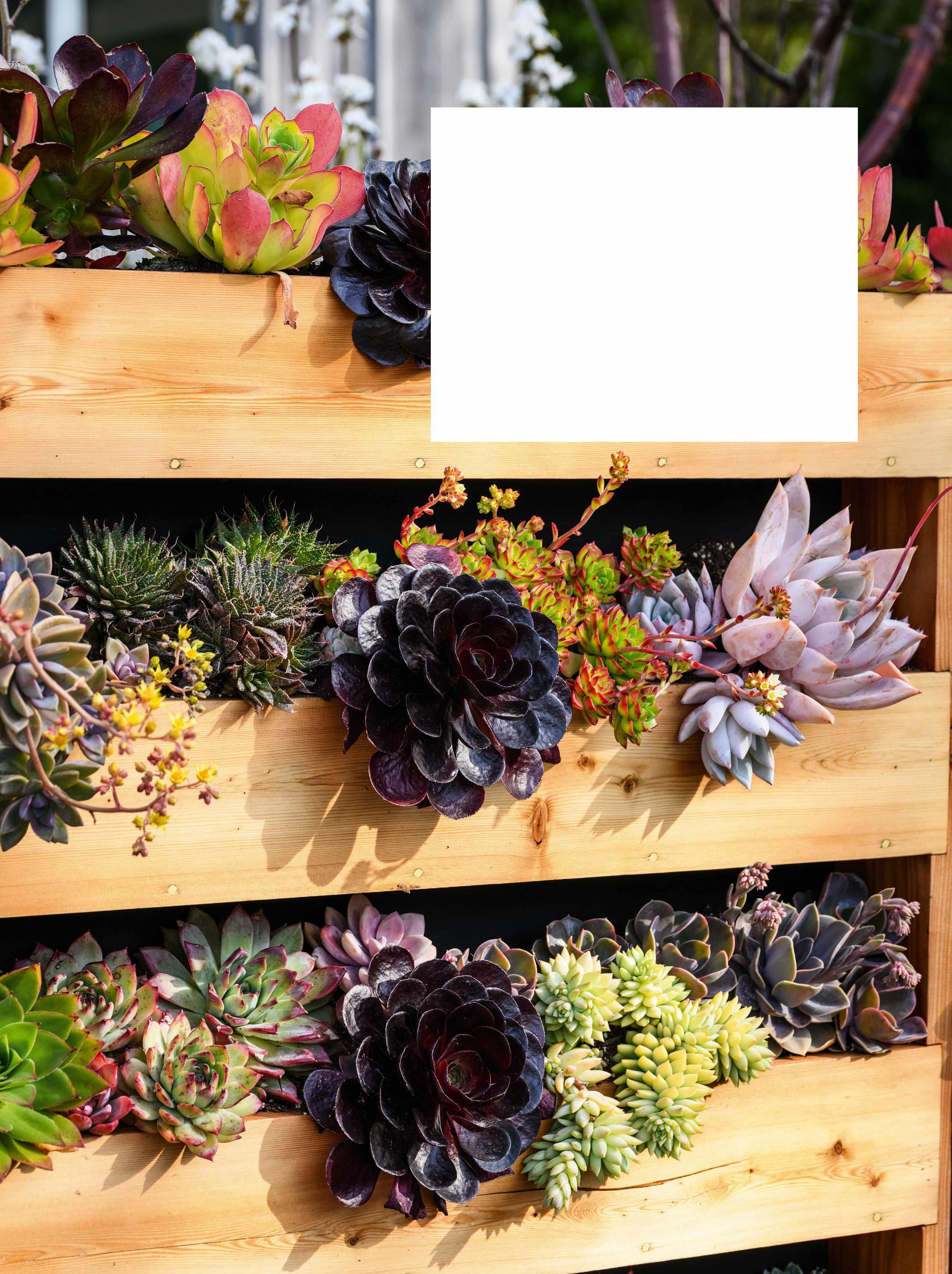
90 GARDENSILLUSTRATED.COM NOVEMBER 2022
8 KEY PLANTS

1 Aeonium ‘Superbang’ In dim winter light, the edge of the leaf is yellow and the centre is cream. In stronger light, the edge turns bright red, and the centre becomes a much darker maroon. 40cm. RHS H1C†
2 Aeonium tabuliforme Makes large, spreading, flat rosettes of densely imbricated, scale-like leaves in pale green. It is a rare endemic, found growing on the steep volcanic cliffs in Tenerife. 15cm. AGM*. RHS H1C.
3 x Semponium ‘Destiny’ A new intergeneric hybrid made at the nursery. The foliage can vary in colour from bright green to deep purple, depending on light intensity. 60cm. RHS H3.
4 x Semponium ‘Diamond’ An intergeneric cross that produces masses of perfectly arranged succulent leaves tightly held in large rosettes that can reach 35cm across. Each leaf has a red outline. 50cm. RHS H3.
5 Echeveria colorata ‘Desert Harmony’ The plump, fleshy leaves in glaucous blue, each with red terminal points, are similar in arrangement to waterlily petals. Will work well in a raised bed in a sunny position, and makes a lovely foil for the darker aeoniums. 10cm. RHS H3,
6 Aloe polyphylla This hardy aloe is noted for its dramatic spiral arrangement of tightly knit triangular leaves. 15cm. AGM. RHS H3.
7 Aeonium ‘Pomegranate’ A hybrid selected by Surreal Succulents in 2014 that makes a small tree of branching, succulent rosettes, each about 40 cm wide, and topped with a large apical rosette and small pups beneath. 50cm. RHS H1C.
8 Echeveria agavoides ‘Ebony’ A slow-growing echeveria with attractive rosettes of pale grey-green leaves, the tips and margins of which are marked in dark maroon. If protected against excessive winter wet, it is hardy to about -7ºC. Best grown on a sunny windowsill and placed outside in summer. 10cm. RHS H3.
*Holds an Award of Garden Merit from the Royal Horticultural Society. †Hardiness ratings given where available.
1 2 4 5 6 7 8 3
usually require winter protection in colder areas but thrive in inner city London as well as in coastal gardens.
Many succulents have waxy protection on their foliage, which makes them particularly good at coping with coastal exposure. They are ideal for a low-maintenance garden, and are extremely drought tolerant, although many do not actually require drought conditions. “Drainage is key,” says Mark. “Particularly during the winter – that’s when they resent the wet most.”
Aloe polyphylla, for example, enjoys a decent amount of water during the summer but needs drier conditions during the winter. To achieve this, some enthusiasts build a perspex shelter over their prized plants to keep the wet at bay. Another option is to plant in a well-drained position and top up the watering during any dry spells in the warmer months. Surreal Succulents caters for the majority of gardens and offers various packages of hardy plants to suit a wide array of conditions.
Hardiness has always been an issue, Mark points out, and this is what led to the creation of the x Semponium hybrids. After a bit of research, Daniel decided
to attempt hybridising the closely allied tender aeoniums with the much hardier sempervivums, hopefully resulting in a hardier aeonium. There were rumours the cross had been tried before, but the seed was taken from the more tender aeoniums.

This time they used the sempervivums as the mother plant, but the difficulty was having both parents in flower at the same time. Luckily, the stars aligned, and they were able to use pollen from the aeonium on the hardier sempervivum.
After a few attempts, the cross succeeded. Daniel and Mark kept this quiet for about five years, sifting through the best seedlings, testing hardiness and building up stock of the favourites. The culmination of this effort has been the release of x Semponium ‘Destiny’, which earlier this year was named Plant of the Year at the RHS Chelsea Flower Show. n
USEFUL INFORMATION
Address Tremenheere Nursery, Tremenheere Sculpture Gardens, Gulva, Cornwall TR20 8YL. Tel 07476 349545.
Web surrealsucculents.co.uk
Open Daily 10.30am-4.30pm.
92 GARDENSILLUSTRATED.COM NOVEMBER 2022
Many succulents have waxy protection on their whichfoliage,makes them particularly good at coping with coastal exposure, and are ideal for a low-maintenance garden
The spectacular succulent roof forms the focal point of the nursery. It is very low maintenance and is pretty much left to its own devices for most of the year, bar a bit of tidying and feeding in the springtime.
How to propagate succulents
Because of their succulent nature, these plants remain turgid far longer than conventional plants, which makes them quite easy to propagate (the nursery propagates 80 per cent of the plants it sells). Louise Twigger of Surreal Succulents shows how it’s done.
• Aeoniums and allied genera can be increased by stem cuttings, and cuttings can be done any time of year provided they are kept warm; a windowsill or warm greenhouse in semi-shade would su�ce.
• Cut into the stem, just below or up to 15cm below the rosette. Clean away any old brown leaves under the skirt of the rosette and leave overnight to allow the wound to dry and callus slightly.
• Make up a free-draining mix (20 per cent sand, 40 per cent grit or perlite and 40 per cent coir or similar), put this into a terracotta pot and firm. Using a terracotta pot acts as a counterweight to the top-heavy succulents.
• Insert the stem into the compost, just deep enough to hold the succulent upright – roots generally form on the surface and inserting too deeply can be detrimental. Cover with perlite or grit.
• Place in a semi-shady position. Water only when the compost has completely dried out. When the eye of the rosette turns green, normally around six weeks, the cutting has rooted.






P O M O R A . C O M G 5 S % a l a e
News, garden design and sourcebook Design
WELLBEING RESORT
A new wellbeing resort that will include indoor botanic gardens, a hydroponic vertical farm and rooftop beehives is set to replace the EventCity conference centre in Manchester. Therme Manchester will feature giant water slides interwoven with plants, an indoor beach, a wave pool and indoor and outdoor pools, all immersed in planting. Therme Group, which already has wellness resorts in Germany and Romania, hopes the complex will become the UK’s premier all-season water-based attraction and is already planning a second UK wellbeing resort for a waterside site in Glasgow. thermegroup.com

NOVEMBER 2022 GARDENSILLUSTRATED.COM 95
THERME GROUP
News
COMPILED BY ANNIE GATTI
1 CALDER GARDENS, PHILADELPHIA
The design for Calder Gardens, a cultural project in Philadelphia that includes a new gallery, and gardens designed by Piet Oudolf, has been unveiled. The metal-clad gallery, which will display the works of Philadelphiaborn sculptor Alexander Calder, has been designed by Herzog & de Meuron. This will sit in a flowing landscape of native and flowering plants, punctuated by trees. The naturalistic, four-season garden has been designed to serve the works of art and to provide a place of contemplation for visitors. Calder Gardens is scheduled to open in 2024. caldergardens.org

runs
INNOVATIVE GATEWAY
Chinese architecture studio MAD has revealed the design for its entrance building to Milan’s Innovation District. The seven-storey building will incorporate an educational space dedicated to mobility as well as a five-storey car park with capacity for 1,500 cars. A green façade will link the building to the neighbouring park. A sculptural set of polished metal staircases will provide access to the car park and to upper levels where photovoltaic panels will provide energy to the district, which is home to organisations dedicated to cutting-edge scientific research and education. i-mad.com
LEEDS RIVERSIDE SCHEME
Leeds City Council has approved Exterior Architecture’s masterplan to transform a vacant 13-acre riverside site in the city. The redevelopment will become a mixed-use scheme providing 1,437 new homes, alongside a new park, riverside promenade and gardens, and a new pedestrian and cycle crossing over the River Aire. Nearly half of the total area will be given over to different types of open space, which will be planted up with more than 200 trees. A new play space near the Bailey Bridge will make use of level changes to create exciting play features. exteriorarchitecture.com

BALI AWARDS
The British Association of Landscape Industries has announced 63 winners across 27 categories in this year’s National Landscape Awards. James Scott of The Garden Company took the Design Excellence award (for a scheme over £100,000) for a walled garden in Bedfordshire (shown), alongside John Wyer who was also a winner in this category for a contemporary garden in London. A rooftop garden that creates shade from a plant-covered wire pergola won best scheme over £50,000 for Rosemary Coldstream. Special award winners and the Grand Award will be announced on 2 December. bali.org.uk
SMART CIRCULAR BRIDGE PROJECT
A bridge made partly from flax has opened at Almere in the Netherlands as part of the ten-yearly Floriade Expo. The Smart Circular Bridge for pedestrians and cyclists is an EU-funded project led by the Eindhoven University of Technology. Flax fibre mats wrapped around polyurethane blocks form the deck while robot-wound flax filaments are used to create a light and attractive handrail. The bridge is fitted with sensors that measure how it performs in different temperatures and moisture conditions and with heavy loads, and the data is visible to the public. floriade.com
DESIGN NOVEMBER 2022 GARDENSILLUSTRATED.COM 97
2 3 4 5 5 2 3 4 4
CLIVE NICHOLS
CHANGE OF SPACE
In her own private garden, designer Emma Griffin has created a series of distinct areas while maintaining a sense of cohesion
WORDS CHRIS YOUNG PHOTOGRAPHS MARIANNE MAJERUS

�e brief
Ask any designer who their most difficult client is, and they always say the same thing: themselves. This was particularly true for west London-based Emma Griffin, who has been designing gardens for more than 20 years, but took five years to finalise the brief for her own plot. “I actually wrote the brief with my husband and two daughters, but by the time we built the garden, the girls had grown up by a few years.”

Having lived in the house for 15 years, the addition of a new, contemporary kitchen extension by Lill Architects (treated timber cladding and copper sheeting) was the ideal time to update the back garden. Measuring 36m by 18m, it is certainly big enough to offer plenty of different areas, seasonal planting and beautiful details.
The core of Emma’s design is the relationship it has with the kitchen: “I wanted to be able to see all the way through the house from the front door, into the kitchen, and then visually connect to the outside path.” The garden is designed as a series of areas – from firepit to lawn, outdoor eating area to a vegetable garden – that interconnect through consistent materials and planting, and clever placement of hedging, trees and structure. Emma sourced an original Crittall patio door set online, and this is surrounded by pleached hornbeam hedging to create yet another space. The door and frame act as both a focal point but also a physical divider from the ornamental garden into the more practical working area of the garden (where the shed and greenhouse are housed). Throughout the garden, a broad palette of plants ensures there is interest through the year, as well as truly making this feel like a plantperson’s garden.
Emma’s garden, now in its fourth year, has a maturity and ease about it. The plants are settled; hard landscape materials have softened; and the way Emma and family use the space has clearly worked. Maybe designing your own space is one of the hardest things to do, but in this instance, the garden designer has made a fine, tasteful and calming outside space – just what the client needed.
USEFUL INFORMATION
Find out more about Emma’s work at emmagriffingardens.com
GARDEN DESIGN NOVEMBER 2022 GARDENSILLUSTRATED.COM 99
the page to discover more of the garden’s design elements
Turn
The long, rectangular pool just outside the kitchen window is a key part of the structured design. “We love having water in the garden,” explains Emma. “So I created something really simple. It’s only 450mm deep, with a copper edge sitting flush with the compacted gravel. A simple swan neck copper pipe ensures the water is fresh and continuously circulating.”
KEY FACTS
What Family garden divided into different areas. Where London.

Size 36m x 18m.
Soil Fairly heavy clay with added manure in spring.
Climate Temperate.
Hardiness zone USDA 9.
3 PLANTING ELEMENTS
One key plant
Cephalaria gigantea, is one of Emma’s favourite plants. “I love the soft yellowcream flowers, and the way it wafts in the wind.” For many this is a back-of-theborder plant, as it can grow to more than 2m high, but Emma uses its flower height and low foliage ratio to her advantage: it sits at the front of beds and through the gravel, self-seeding as it pleases.
Greenhouse/ shed
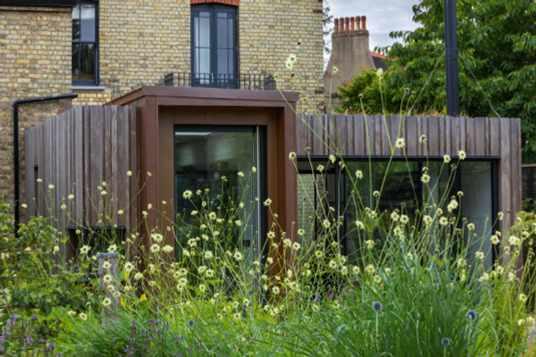
Unusual garden tree
One of Emma’s favourite areas is against one side of the house where she has planted Osmunda regalis and Rhus typhina – a brave choice as staghorn sumac (above) is a suckering tree that loves to send up many shoots. “I know about its suckers,” she says, “but that doesn’t outweigh the beauty of the branch formation and the amazing leaves.”
Pleached hornbeam
Crittall door feature (see right below) Seating area (see right above)
Lawn
Espaliered fruit trees
Apples and pears are a brilliant divider between the entertaining area and the productive garden. By keeping their height low, they are easy to prune and don’t cast much shade on either side, so crops can ripen. Emma can also sit at the dining table, and pick fruit straight from the tree.

• To source fruit trees for your own garden turn to our reader offer on page 121.
Firepit seating area
Pool with stepping slabs House
Dining area (see right)
Espaliered fruit trees
Raised vegetable beds
Rhus typhina and Osmunda regalis ferns

DESIGNER TIPS
How to make successful areas in your garden


Emma’s garden succeeds because she has interesting areas and zones in it. This makes the garden feel much bigger than it actually is, but also responds to what she needs the garden to do. Here are Emma’s top tips for making successful garden areas:
1 Intrigue
Not quite knowing what’s going on in other parts of the garden is vital. For example, I can’t see the lawn when I’m sitting at the dining table, but by the time I get up and move towards the door, it starts to come into my view. I feel that’s really important in that small journey of the garden revealing itself.
2 Framework
The structure and layout here had to be strong and clear, but at the same time it had to be coupled with soft planting and plenty of distraction. While some paths are clear and straight lined, gravel and planting softens them in other parts.
3 Meandering
This may be an odd word for an urban garden, but I find it a vital thing to do. Walking through or brushing past plants is a natural thing to do and it’s so nice to have di�erent textures and shapes of plants.
4 Individuality
Each area in my garden is independent and does its own thing: whether that’s the firepit or dining area (pictured), lawn or vegetable beds. By ensuring di�erent parts of the garden are doing di�erent things, you get maximum value out of your plot.
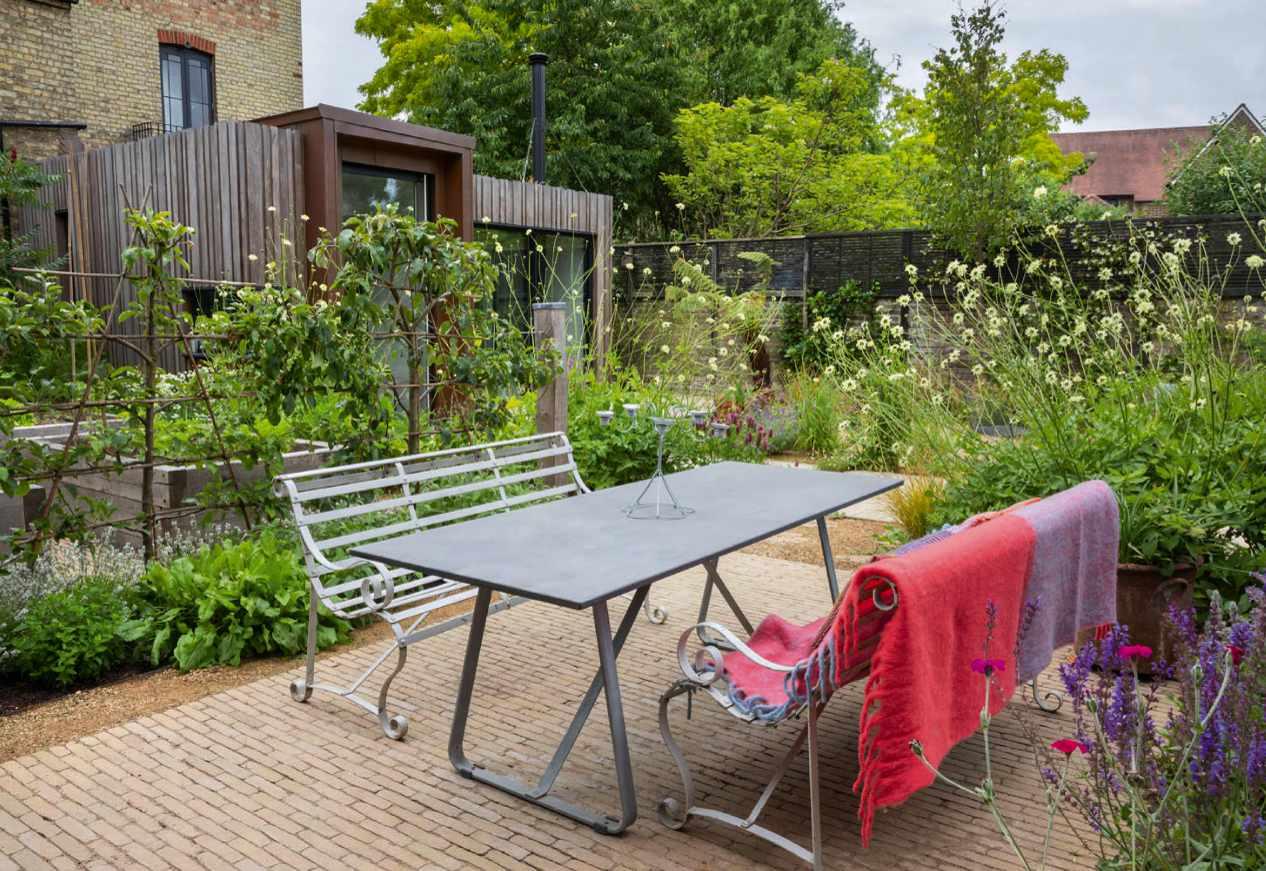
5 Levels
It’s a well-known garden design tool, but changing levels always makes a garden feel bigger. Here, we have a level change from the main seating areas to the lawn, and then further steps through the glass doors in the hornbeam hedging. Surrounded by informal planting and strong verticals in the trees, the level changes combine to give a more interesting experience of our garden.
GARDEN DESIGN 2 4 5 NOVEMBER 2022 GARDENSILLUSTRATED.COM 101
the
to discover more of the
and
Turn
page
garden’s design elements
planting
Home-grown harvest (above)
As well as plenty of planting, lawn and seating areas, Emma managed to design in a productive garden. Raised beds support a range of different crops, as well as espaliered fruit trees. Fitting a damson, greengage, a ‘Morello’ cherry and three apple trees into a smaller garden may be a tall order for some people, but for Emma is was essential, not only to enjoy the beauty of them, but also for the fruit they produce.
Hard landscaping in detail (right)
Hard landscaping materials are relatively simple in this west London garden. For the main paths, Emma has specified self-binding, compacted natural gravel with 90cm x 40cm sawn York stone, as well as buff clay pavers. Corten-steel edging frames the beds and borders, as well as steps. At the back of the garden, behind the hornbeam hedge, lies a secret area that houses a greenhouse and shed, and here paving setts create a crenelated edge. The result is a happy marriage of materials that allow flexibility and tonal consistency, while being usable and easy to maintain.


�e planting
As with all good gardens, there is a mixture of planting. “I really wanted a planty garden,” says Emma. “Even though it is heavily perennial, there are plenty of trees, shrubs and grasses that bring texture, colour and interest through the year.” Structure is dominated by a multi-stem Amelanchier shrub, a Parrotia persica tree, a pleached hornbeam hedge and a neighbouring spruce, as well as an existing silver birch and poplar. Shrubs include a 17-year-old, red-leaved Japanese maple (that was planted in memory of Emma’s mother), Hydrangea arborescens ‘Annabelle’ and Rosa Gertrude Jekyll (= ‘Ausbord’).

But it’s the perennials that truly excite Emma, from the purple spires of Acanthus mollis, Agastache ‘Blue Fortune’ and Verbena macdougalii ‘Lavender Spires’ to later-season, claret-red Sanguisorba ‘Tanna’, and the thin, red flowers of Persicaria virginiana. Grasses, so often a favourite of designers, work perfectly in the space. Dependable Hakonechloa macra inhabits darker corners, while Stipa ichu is a more upstanding and elegant relative of Stipa tenuissima
The result is a garden that feels full of floral interest, but never swollen with it – a well-weighted balance between usable seating areas, walk-through spaces and planting. n

GARDEN DESIGN NOVEMBER 2022 GARDENSILLUSTRATED.COM 103
Lill Architects
An architectural practice which collaborates with nature and craftspeople to design a truly bespoke home for every client.

The perfect selection of gifts for makers, menders and growers
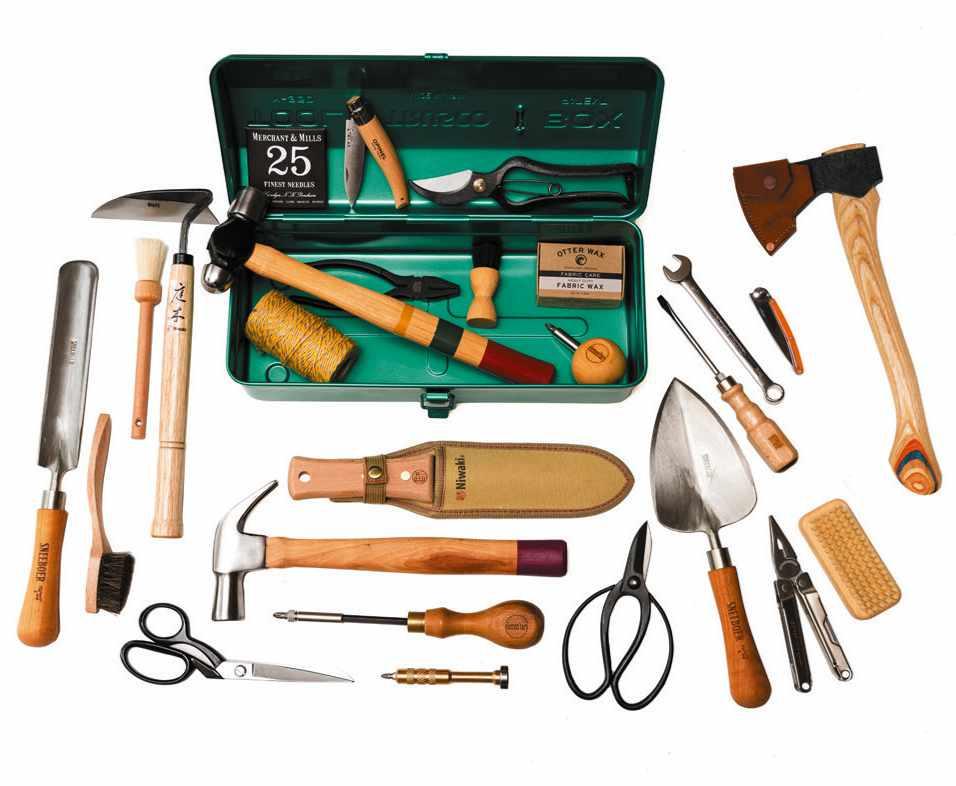
Lill Architects Ltd
07526-510-582
info@lillarchitects.com
www.lillarchitects.com
THE ESSENTIAL GARDEN DESIGN DIPLOMA

January – March 2023 BOOKING NOW
Based at the Chelsea Physic Garden and led by Rosemary Alexander and architect Catriona Rowbotham, the course is an overview of Garden Design, covering all the elements needed to rethink an average garden. Taking students step by step through site surveying, using the grid, horizontal and vertical features, garden layouts and planting plans, costing and specification, plus drawing tuition and homework on design and plant portfolios. Tutors are well respected in the industry and will guide students on how to succeed in this diverse profession.
(2 days a week (Wed & Thu), 10.30am–3.15pm, plus 2 days homework)
ONE YEAR GOOD GARDENING DIPLOMA
September 2023 – beg July 2024
Covers the best in planting design while training in the more serious aspects of horticultural techniques. Practical sessions held at Arundel Castle under the guidance of head gardener Martin Duncan and at Sandhill Farm House, Rogate. Lectures by many leading gardening personalities and regular visits to outstanding private gardens. Students also learn to draw up planting plans.
(1 day a week (Tues), 10.30am–3.15pm, over three terms)
GARDENING FOR BEGINNERS
Wednesday & Thursday 19, 20, 26, 27 April 2023
One of our most popular courses, led by master horticulturist Ben Pope, which aims to take each student through all the practical elements of caring for a garden from soil, tools, maintenance, seed sowing and propagating, weed control and pests and diseases. The first 3 days will be spent with lectures at the Chelsea Physic Garden and the final day will be spent gaining practical experience in Rosemary Alexander’s much praised garden near Petersfield and another private garden nearby, where Ben is in charge. Participants will be given a chance to prune, plant, sow seeds and regular maintenance tasks will be discussed. A light lunch and refreshments will be provided daily.
GARDEN DESIGN & CARING FOR YOUR GARDEN
Distance Learning Courses study anytime, anywhere in the world
A stepping stone to a new career. These two correspondence courses are a step by step guide to either designing your own garden or learning how to plant and maintain an existing garden: drawing up plans, hard landscaping, site analysis, planting, month by month tasks etc. Taught through a comprehensive course book, with projects submitted to us. (1-3 years to complete and individual assessment)
www.TinkerandFix.co.uk
Not sure which Diploma course is for you? We prefer potential students to attend an Information Session when Rosemary explains the whole course content and you can see our facilities at the historic Chelsea Physic Garden.

JUST CONTACT US TO SET UP A DATE/TIME
www.englishgardeningschool.co.uk
Email: info@englishgardeningschool.co.uk
Tel: 01730 818373
Long established as the leader in all design and gardening tuition and based at the unique and historic Chelsea Physic Garden
Garden of Medicinal Plants – Chelsea Physic Garden Photo: R Alexander
DESIGN
SOURCEBOOK
Sheds
For storing tools, potting plants, or simply pottering, there are sheds to suit all gardeners


COMPILED BY MOLLY BLAIR
FLEXIBLE SPACE
The Holt Apex, From £2,850, Malvern Garden Buildings, 01932 783999, malverngardenbuildings.co.uk
DOUBLE DOORS
Dutch Barn, £1,289.99, Dunster House, 01234 819360, dunsterhouse.co.uk
COLOURFUL CHOICE
The Classic, From £2,695, The Cosy Shed Co, 01623 861364, thecosyshedco.co.uk
MODERN SLATTED
Contemporary Shed, From £5,033, The Garden Trellis Co, 01255 688361, gardentrellis.co.uk

EXTRA STORAGE
The Chelsea, From £3,192, The Posh Shed Company, 01544 387101, theposhshedcompany.co.uk
TAILOR-MADE
Superior Shed, Price on enquiry, Crane Garden Buildings, 01760 444229, cranegardenbuildings.co.uk
SCAN HERE
You can find more sophisticated storage solutions for your garden at gardensillustrated. com/sheds

CUTE AND COMPACT
Forest Retreat, £4,799, Shed Store, 0333 003 0518, shedstore.co.uk
MADE TO LAST Apex Shed in Anthracite with black windows, From £3,874, Lifelong Steel Sheds, 01455 213355, lifelongsteelsheds.co.uk



PRIME FOR PLANTING
Hartwood 8ft x 6ft Shiplap Potting Shed, £1,094, Sheds, 0345 034 6481, sheds.co.uk


NOVEMBER 2022 GARDENSILLUSTRATED.COM 105
GARDENDESIGN TRAININGFOR PROFESSIONALS
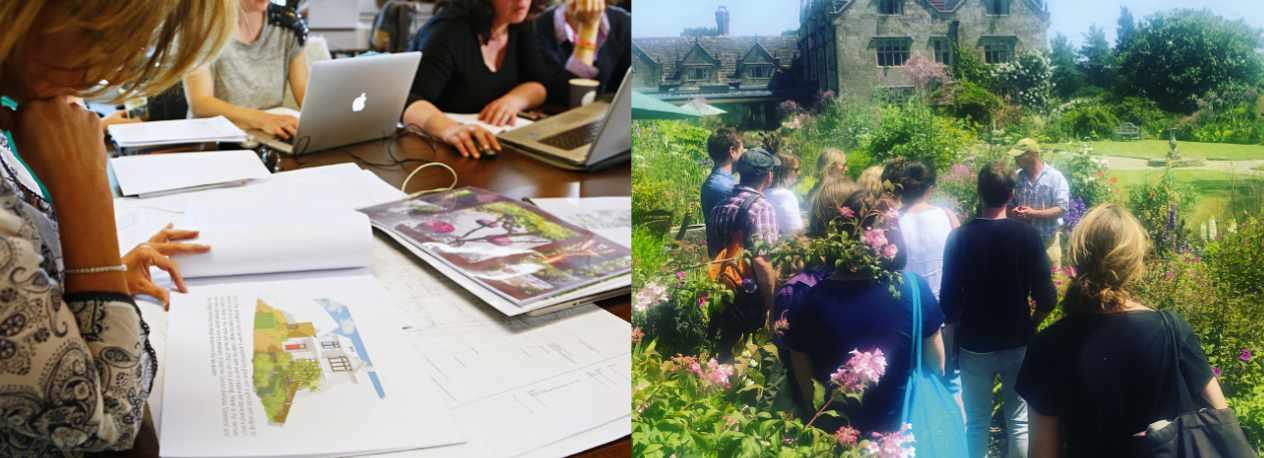

Findoutmoreaboutour inspirationaltrainingatRoyal BotanicGardensKew,RHSGarden Wisleyandonline.



OurDiplomaandProfessional Developmentprogrammesare availableonlineinreal-timeclassesas wellasatourhomeinRoyalBotanic GardensKew.In2022wealsohave shortcoursesforprofessionalsand gardenenthusiastsatRHSWisley Garden,DenmansGardenandonline. Visitourwebsite lcgd.org.uk tohear howourstudentsarecreating successfulgardendesigncareersand discoveranever-changingrangeof coursesforthegardenenthusiast.
+44(0)1483762955info@lcgd.org.uk
 Design:AdamVetere
Design:AdamVetere
�;;r��o�u ]u;;m Cm];uv��ouhbm] -m7 ;�|;m7��o�u ]uo�bm] v;-vom )b|_ o�u��b=;�� l; v|u�1|�u-��]�-u-m|;;��o��1-m 0; v�u; |o 0; 0�v� =ou��;-uv |o 1ol;��b|_ -��ubLm��u;;m_o�v;� www.griffinglasshouses.com or call us on 01962 772512 Le� i� Snow! �;u=;1| �� uo|;1|bom =ou �� o � u r � -m|v - ���� ;-u uo � m7 ��mo| f�v| o�;u��bm|;u�
DOWNTOOLS
Book reviews, reader offer, the crossword and Alice Vincent

NOVEMBER 2022 GARDENSILLUSTRATED.COM 107
CHRIS GORMAN / RHS.
The story behind Tom Stuart-Smith’s Paradise Garden is told in RHS Garden Bridgewater: The Making of a Garden, reviewed on page 108.
BOOK REVIEWS
VENETIAN GARDENS by Monty Don, photography by Derry Moore
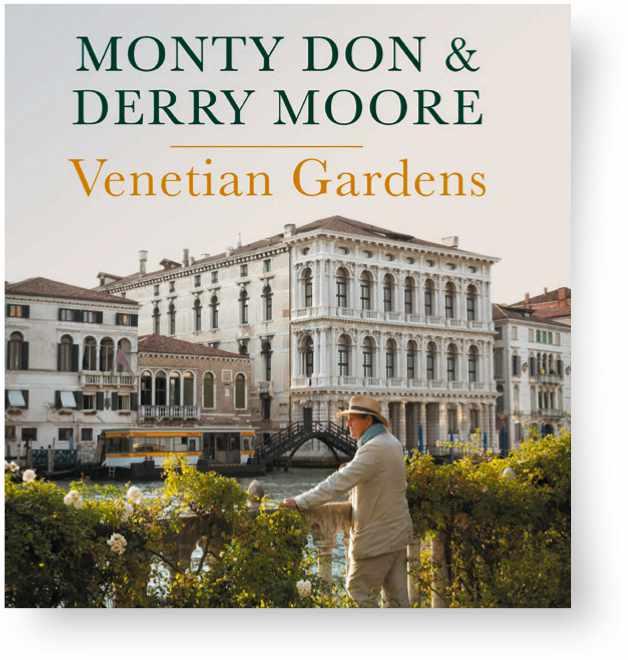
BBC Books, £40
ISBN 978-1785947421
Few would consider Venice a horticultural destination of note. Gondolas, of course. But gardens? Surely not. Yet, in Venetian Gardens, Monty Don and Derry Moore show us a different side of the floating city. We are guided by Don and Moore to many horticultural hotspots in Venice, from the tourist-dense to the fiercely secretive. Moore’s photography is transportive. Think cobbled courtyards, ochre-coloured walls, washing hung out to dry and wisterias clinging to crumbling walls alongside a canal. And, of course, several images of Don looking longingly at something just off page. What more could a person want?
Don plays horticulturist, historian and tour guide. Great gardens of some of the oldest Venetian families feature, yet sadly many of these premises remain ultra-private, intended only for the pleasure of a select few. Despite imagery showing us what lies behind the imposing gates, I do not think
that we, the hoi polloi, would be warmly received ringing the bell at the Palazzo Brandolini, for example. Of greater interest in this book are the stories of community. The Orto del Campanile allows locals the opportunity to grow crops in raised beds, coming together to garden in a city so lacking in space. Another community garden on Giudecca, an island to the south of Venice, is a charming jumble of vines on scaffolding poles and mismatched pots. An ‘antidote’, Don writes, ‘to the slick smartness of wealthy Venice’.
What we seek, as lovers of gardens, is both the grand pomp and secrecy of a palazzo, along with some everyday growing in a garden that is vibrant and accessible for all. Venetian Gardens provides a taste of both. In this city of ‘horticultural bits and pieces’, there certainly are gardens of different shapes and sizes to be found among the watery blue. Thanks to Don and Moore, we now know where to look for them.
RHS GARDEN BRIDGEWATER: THE MAKING OF A GARDEN
by Phil McCann
Frances Lincoln, £32
ISBN 978-0711274334
story of how RHS Garden Bridgewater became an award-winning garden, just one year after its opening in May 2021. Reviewer Annie Gatti is an editor and garden writer.
This book charts the phoenixlike rebirth of the historic gardens at Bridgewater in Salford, the Royal Horticultural Society’s fifth, and its mildest and wettest, garden. Acquired in 2015 as an overrun 154-acre estate, Bridgewater was graced in Victorian times with a grand hall, Worsley New Hall, and formal terraces and parkland designed by William Andrews Nesfield. The house was demolished in 1946 and the land was subsequently used by the War Department, the Boy Scout Association, a gun club and a garden centre. The neglect of the estate, and the presence of a variety of soils, was a bonus for designer Tom Stuart-Smith, who was appointed to draw up a masterplan. But it also brought multiple challenges for the RHS team, including arsenic in the soil, asbestos, and invasives such as Japanese knotweed and Rhododendron ponticum

The human story, as well as the horticultural one, is revealed in this account. The book is threaded with testimonies and memories
from local people, many of whom are part of the 800-plus group of volunteers who have given their time to the garden thus far. As well as striving to be a garden that inspires and teaches best practice, it is a garden where horticultural boundaries are being pushed in terms of plant selection, most notably in the Mediterranean section of the Paradise Garden, which is so beautifully captured, in early morning and evening light, by various photographers.
Aerial photography delineates the different means used to draw visitors away from main walkways and into more intimate parts of each garden, in order to minimise bottlenecks.
Extended plant descriptions and explanations of horticultural terms suggest that this book is addressing the novice gardener as well as the more experienced. But it can also be enjoyed by those who just want to follow the fascinating story, in words and images.
108 GARDENSILLUSTRATED.COM NOVEMBER 2022
The fascinating
In their new book, Monty Don and photographer Derry Moore take us on a guided tour around some of the gardens of Venice.
Reviewer Thomas Rutter is a gardener and freelance garden writer.
Dorset Walled Garden




���������������������������������������������������������������������������� ������?����������&�����
�������������������$������������=���������������������� ���������������������������������������������������� ������������������������������������������������������������
�������������������������������
E������������������������������������������������������������ ������������������������������������������˘������������ ������˘ �����������E����=����������¢��˘������������� ��������������������¤����������?��������������������� ����������������������������������������������������
TIMELESS CLOTHING & EQUIPMENT TO CARRY YOU THROUGH THE SEASONS carriercompany.co.uk always made in the uk



 $s��*¢Â�^^*$=��$*j��s ©Z *jû©J�J*��$s��*¢Â�^^*$=��$*j��s ©Z
This was Sylvia’s promise to you...
A generation ago, a woman named Sylvia made a promise. As a doctor’s secretary, she’d watched stroke destroy the lives of so many people. She was determined to make sure we could all live in a world where we’re far less likely to lose our lives to stroke. She kept her promise, and a gift to the Stroke Association was included in her Will. Sylvia’s gift helped fund the work that made sure many more of us survive stroke now than did in her lifetime.

Sylvia changed the story for us all. Now it’s our turn to change the story for those who’ll come after us.
Stroke still shatters lives and tears families apart. And for so many survivors the road to recovery is still long and desperately lonely. If you or someone \RX ORYH KDV EHHQ D�HFWHG E\ VWURNH���\RX�OO NQRZ just what that means.
Rebuilding lives after stroke
But it doesn’t have to be like this. You can change the story, just like Sylvia did, with a gift in your Will. All it takes is a promise.
You can promise future generations a world where researchers discover new treatments and surgeries and every single stroke survivor has the best care, rehabilitation and support network possible, to help them rebuild their lives.
Will you make that promise to generations to come? Please, leave a gift in your Will to the Stroke Association.
Find out how by calling 020 7566 1505 or email legacy@stroke.org.uk or visit stroke.org.uk/legacy
The Stroke Association is registered as a charity in England and Wales (No 211015) and in Scotland (SC037789). Also registered in the Isle of Man (No. 945) and Jersey (NPO 369), and operating as a charity in Northern Ireland.
PLANTA SAPIENS: UNMASKING PLANT INTELLIGENCE
 by Paco Calvo and Natalie Lawrence
by Paco Calvo and Natalie Lawrence
Little, Brown, £22
ISBN 978-0349128450
BOOK REVIEWS
THE HOUSE PLANT BOOK: AN INSIDER’S GUIDE TO CULTIVATING AND COLLECTING THE MOST SOUGHT-AFTER SPECIMENS
by Melissa Lowrie
A ti £27 99
ISBN 978-1648290909

Can plants think? Paco Calvo and Natalie Lawrence believe they can. And they are not alone – there is a growing body of academics, and perhaps a fair few gardeners too, who are starting to explore this notion. Though it is not without controversy, there are plenty of scientists who believe this is speculative fantasy and plays no part in respectable science. This book, then, is Calvo’s attempt to be taken seriously.
And what a debate it is. Briefly, it goes something like this: intelligence should not be resigned to those with brains alone, that plants have their own form of learning and memory that results in a form of plant neurobiology. Neurobiology has until now been the reserve of organisms with neurons (and with that, brains). As plants don’t have neurons, the against argument says that this is not intelligence as such, but adaptive response.
To marshal their position, Calvo and Lawrence draw on scientific work from around
the world and this makes the book a particularly good introduction to plant physiology and wider ecosystem interactions. It is to both writers’ credit that this element of the book reads with such clarity, so that anyone with a passing interest would, I believe, be hooked in.
However, at the heart of this is much deeper philosophical questioning about how we think about others, the more-thanhumans, and how we get stuck in binary categorisations and create turf wars over them.
This argument will be familiar to anyone who seeks to blur boundaries and is as much about language as it is neurons. However, rather than coming to this book looking for or against the argument – as only history can eventually resolve the debate – come to learn more about the inner workings of plants and allow their dazzling and wonderful ways of being to open your mind to new ways of thinking.
Do we really need another houseplant book? It appears we do. Because the team at Terrain, the acclaimed US garden, home and lifestyle brand, and author Melissa Lowrie – who has worked for Terrain since its inception in 2008 – have produced a visually and textually inspiring tome that will appeal both to the novice and the established houseplant nut.
The essentials – soil, water, light, humidity, pests and diseases – are presented in a clear, digestible style, with added hints and tips. Forays into plant science explain reasons behind the practice, making this more than a straightforward DIY gardening book: it empowers gardeners to develop their craft, stimulating them to create their own potting blends, have a go at propagation, and really experiment with plants.
At the heart of this book is a simple premise, says Lowrie: ‘The most important thing you can give your plants is your presence.’ She encourages readers to develop a ‘deep

familiarity’ with houseplants. Part of this comes from an understanding of their origins and requirements, but also from careful observation and patience.
The bulk of the book rightly concentrates on the plants themselves. Each chapter focuses on a theme – from Trendsetters and Small Wonders to Living Sculptures and Unfussy Friends – meaning you can, if you like, tailor your reading to your own gardening preferences. Alongside detailed plant descriptions are inspirational pages on styling houseplants, as well as features on specialist growers, all with stunning photography.
If you love plants, you’re likely to enjoy this book. Why? Because it follows its own advice. It has been produced with the utmost care and attention. Beautifully crafted and written, it is comprehensive and inspiring – and fascinating to boot. Who knew that the leaf shape of vining aroids changes depending on whether they trail or climb?
NOVEMBER 2022 GARDENSILLUSTRATED.COM 111
This compelling and thought-provoking book reveals the astonishing and wonderful inner workings of plants.
Reviewer Alys Fowler is a garden
writer.
A beautifully crafted and written book that is likely to appeal both to the novice and to the established houseplant nut.
Reviewer Claire Masset is a garden writer and publisher.


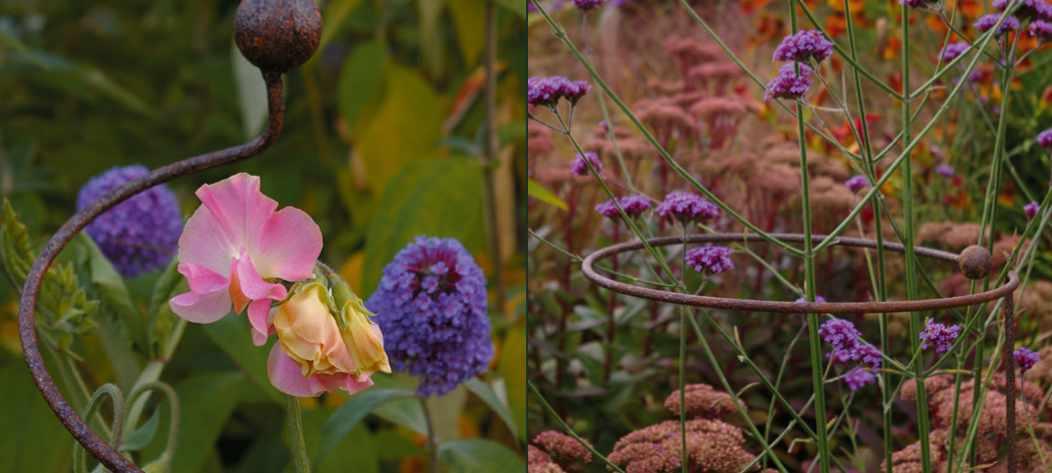





Beautiful designs for herbaceous perennials, roses, shrubs & climbers. PLANT SUPPORTS & Garden Artefacts www.leanderplantsupports.co.uk Tel. 01773 550495 for a brochure Ideal Christmas presentsfor keengardeners! 10 Year Guarantee Against UV Degradation Superior growing environment Unique bubble cladding giving excellent heat retention Resistant against extreme weather conditions Excellent light transmission Low Maintenance The strongest and warmest greenhouses for the serious gardener Can be extended Available in a wide range of sizes All year round growing Keder Greenhouses Limited Newtown, Offenham, Evesham, Worcestershire WR11 8RZ t: +44 (0) 1386 49094 sales@kedergreenhouse.co.uk www.kedergreenhouse.co.uk @KederGreenhouse Proven to withstand wind speeds of 140mph For The Serious Gardener
The title of this big, glossy book sums its content up succinctly. Wild Edens hints at dramatic adventures with plants on an epic global scale and its subtitle sets out an ambitious historical and botanical remit. The authors of this thoroughly researched and valuable addition to the ‘armchair travel’ genre are two high-profile plant geeks well-versed in leading and documenting specialist botanical exploration.

Dr Toby Musgrave has travelled widely in the footsteps of plant hunters as a scholarly plant and garden historian, while Chris Gardner adds botanical gravitas, keen observation and wonderful photographs as an international tour organiser and author of two botanical field guides. With Wild Edens they have written a carefully crafted book that skilfully weaves together historical horticultural detail, memoir and botanical overview.
Nine chapters explore biodiversity hotspots, with some obvious contenders such as the Western Cape province, South
BOOK REVIEWS
Other books
WILD EDENS: THE HISTORY AND HABITAT OF OUR MOST-LOVED GARDEN PLANTS
by Toby Musgrave and Chris Gardner
Octopus Books, £40
ISBN 978-1914239250
Africa, but also Japan and Turkey’s Pontic Alps to name a few less frequently visited regions. The global scope and multi-layered text will undoubtedly appeal to a wide audience. Each chapter opens with entertaining personal reflections on the landscape and spirit of place, then a rather general and perhaps unnecessarily broad introduction to the region. The text then moves up a notch, considering habitat, distribution and adopted survival strategies. Environmental threats and pressures are mentioned.
A brief chronological history of plant discovery makes up a significant section of each chapter. Rich in detail and underpinned by razor-sharp referencing, this is refreshingly focused on local archeological and later literary evidence rather than on the contribution of notorious individuals and plant journeys into the floriculture of the western world. For each region there is a summary of prolific genera as well as best locations and time to visit.
More new releases, including rallying calls for tree planting and creating safe havens for nature, plus a study of the apple.
RHS A PLANT FOR EVERY DAY OF THE YEAR
 by Philip Clayton
by Philip Clayton
Dorling Kinderley, £20
ISBN 978-0241544365
Horticulturist Philip Clayton personally selects 365 of the very best plant varieties – one for every day of the year.
PLANT A TREE AND RETREE THE WORLD
 by Ben Raskin
by Ben Raskin
Leaping Hare, £16.99
ISBN 978-0711279346
A call to action for us all to plant trees, plus practical advice and insights into the significance of magnificent specimens.
WE ARE THE ARK by
 Mary Reynolds Timber Press,
Mary Reynolds Timber Press,
£23.99
ISBN 978-1643261782
A manifesto and a practical guide for readers to turn at least half of their gardens into sanctuaries for nature, creating a patchwork of safe havens around the world.
RHS 50 WAYS TO START A GARDEN
by Simon Akeroyd
Mitchell
Beazley,
£16.99
ISBN 978-1784728441
This book is aimed at first-time gardeners, those in rented accommodation or anyone with limited outdoor space.

THE APPLE IS EVERYTHING
by Barnaby Barford
ACC Art Books, £25
ISBN 978-1788841641
This quirky art book explores the significance of the apple throughout human history, featuring over 240 illustrations and photographs of the popular fruit.
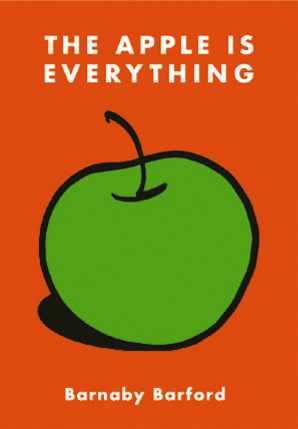
NOVEMBER 2022 GARDENSILLUSTRATED.COM 113
A lavishly illustrated botanical travel book that is stylish enough to tempt casual perusal and detailed enough to merit taking a few notes. Hannah Gardner is a horticultural consultant and botanical writer.
Travel Guide
Indulge your passion for travel, around the globe and closer to home, with our wonderful and diverse array of partner companies, curated especially for Gardens Illustrated readers



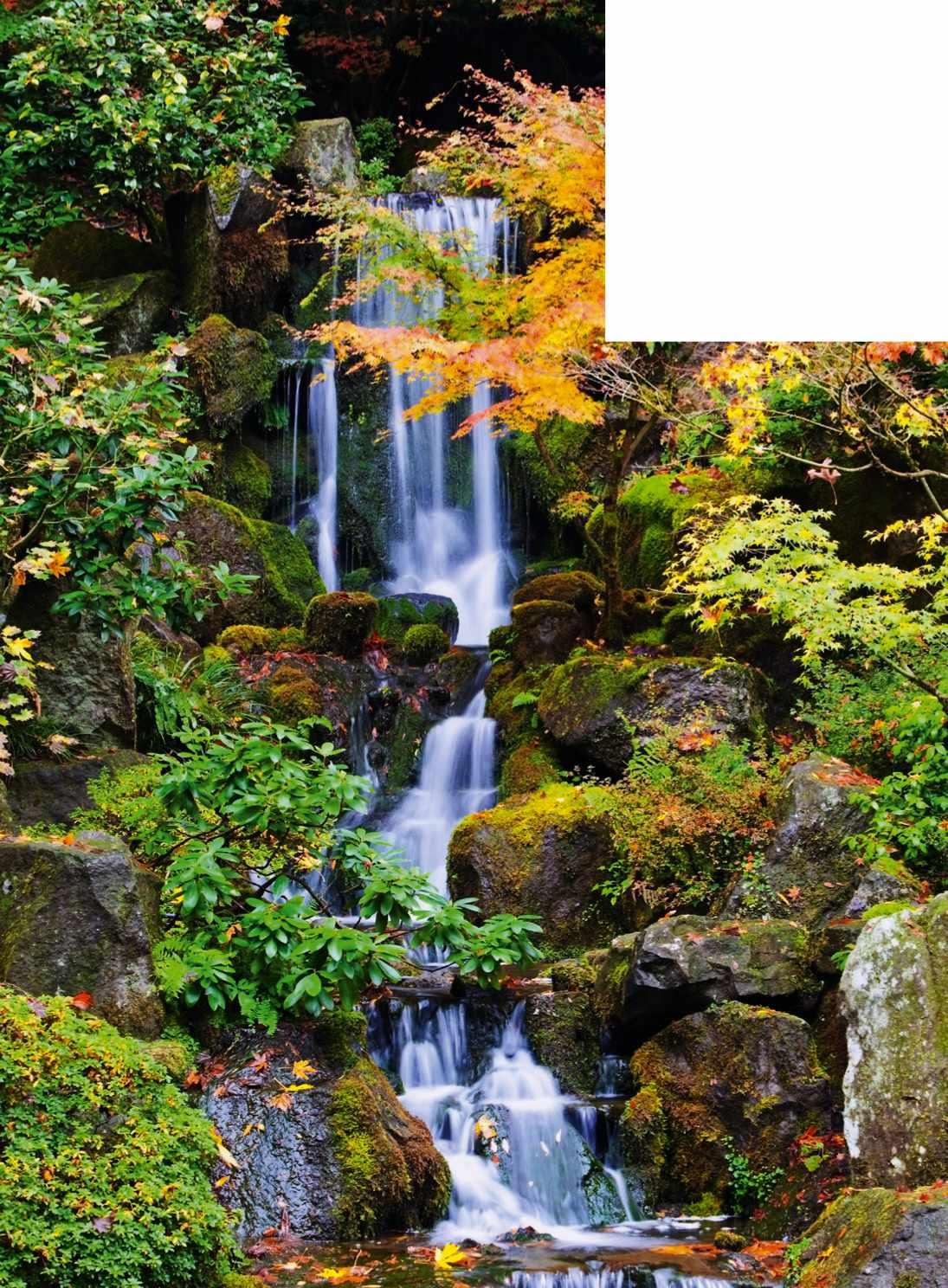
ADVERTISEMENT FEATURE
Images Clockwise: Getty/Cavan Images, Rosemary Calvert, Pakin Songmor, Design Pics / Craig Tuttle
Dublin Garden Trail
Something is stirring in Dublin! Spectacular private gardens are flourishing. The 16 most celebrated invite you to explore. Expert plants-people. Extensive botanical collections. Rich in design and art. Large demesnes and urban gems. For group tours and independent travellers. Inspiring gardens and a personal welcome.
dublingardens.com | +353 (0)87 9724271
G&T GARDEN TOURS presents
EARTHLY PARADISE
May 12-19 2023
An unforgettable horticultural holiday, exploring the best private gardens and grand estates in Dorset and Somerset.
Featuring
• Julian and Isabel Bannerman’s new garden
• Exclusive access to stunning private gardens
• A guided tour of Chilcombe garden led by Anna Pavord

• Small group, splendid accommodation and excellent food
Please visit www.gtgardentours.co.uk for details

ECT Travel
Incredible India! Exceptional Holidays with ECT Travel. India is not just one of the most fascinating countries of the world, it is a culture rooted in enduring traditions and magnificent history.

Our specially curated adventures (ranging from 14 – 17 days) take you to some of the most beautiful and mesmerising places in India, while staying in fabulously luxurious settings. In addition, we o�er you the opportunity to include visits and experiences
that best suit your interests and curiosity. We want you to have an immersive experience of this diverse and exhilarating country – and a truly memorable holiday.
Have you dreamed of a holiday to Kerala, exploring India’s magical Malabar Coast? Perhaps Rajasthan, the majestic land of Maharajas and of course the Taj? You may be tempted to travel to soaring mountains, lush jungles, and fragrant tea plantations of the most remote region in the Northeast
– home to half of India’s biodiversity? Or fancy embarking on a unique expedition, staying in a remote and beautiful Himalayan Homestay, encountering Wild Red Panda in their natural environment?

We are now booking all these holidays with departures in 2023 and we would love to have you join!
Call to book/request a brochure or visit the website.
ecttravel.com | 01222 333747
TRAVEL GUIDE
Cambridge University Botanic Garden

One great garden, one great day out! Cambridge University Botanic Garden showcases over 8,000 species from across the world. With more than 40 acres of gardens, it o�ers a wealth of inspiration and a feast for the senses all year round. Come and be inspired by beautiful gardens set in a beautiful city.
Highlights and activities include: Bee Borders, Woodland Garden, Dry Garden, Glasshouse Range with Tropics House and Mountains House, Lake, Autumn Garden, Scented Garden, Limestone Rock Garden, Winter Garden, and Heritage Systematic Beds. Explore the Garden with a free family or adult trail and also visit the Café and Shop.
Discover Scottish Gardens

Discover Scottish Gardens works with more than 200 gardens, estates and nurseries across Scotland, some of them historic landmarks, others family-run ventures but all of them an important part of Scotland’s cultural and natural heritage.

With gardens o�ering safe and welcoming spaces, you’re invited to escape and unwind while you discover amazing Scottish gardens all year round,

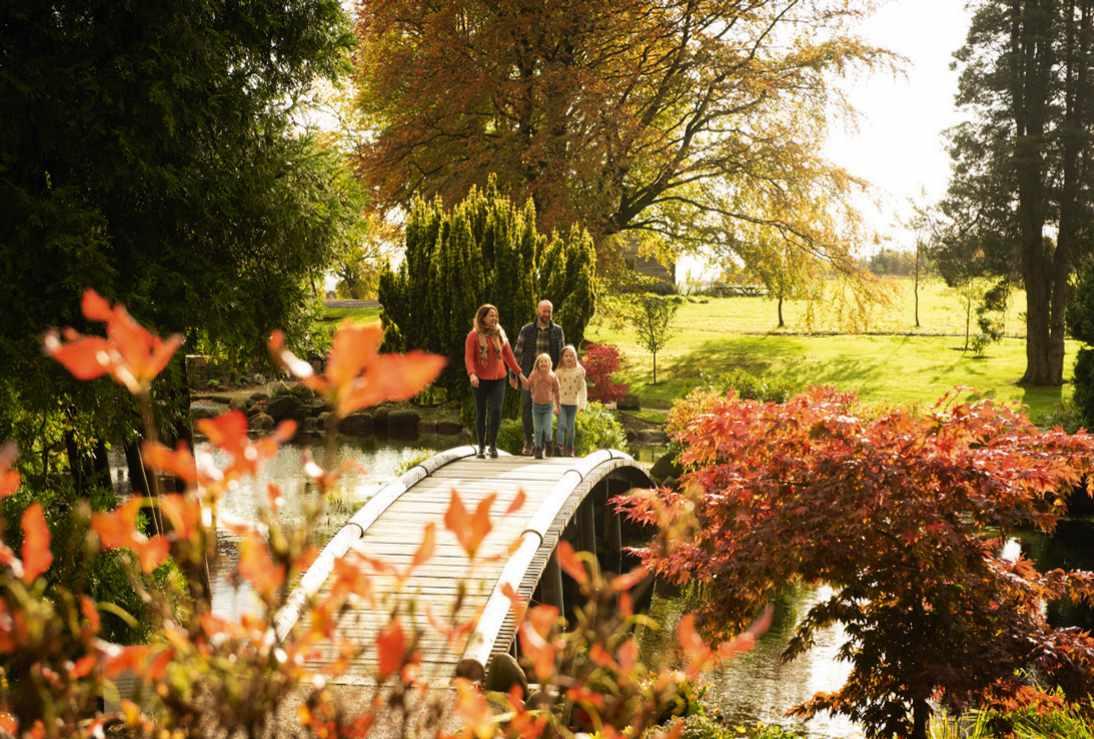
regardless of the weather. Looking for inspiration? Visit discoverscottishgardens. org/days-out to plan your next visit or getaway to Scotland’s gardens. Visitors can plan days out in advance, discovering what’s open, where disabled access or cafe facilities are available and if dogs are welcome.
The Scottish Tree Festival will run until 1 December with dozens of gardens,
Find out more about opening times, admission charges, accessibility, free seasonal highlight tours, workshops and events on the website.
botanic.cam.ac.uk
01223 336265
@CUBotanicGarden
woodlands and estates inviting visitors to enjoy the change in season and the unique colours and experiences o�ered in autumn in Scotland. With Festivals and events on all year round, explore and enjoy the variety of Scotland’s gardens at discoverscottishgardens.org/festivals.
discoverscottishgardens.org
info@discoverscottishgardens.org
ADVERTISEMENT FEATURE
Hestercombe Gardens
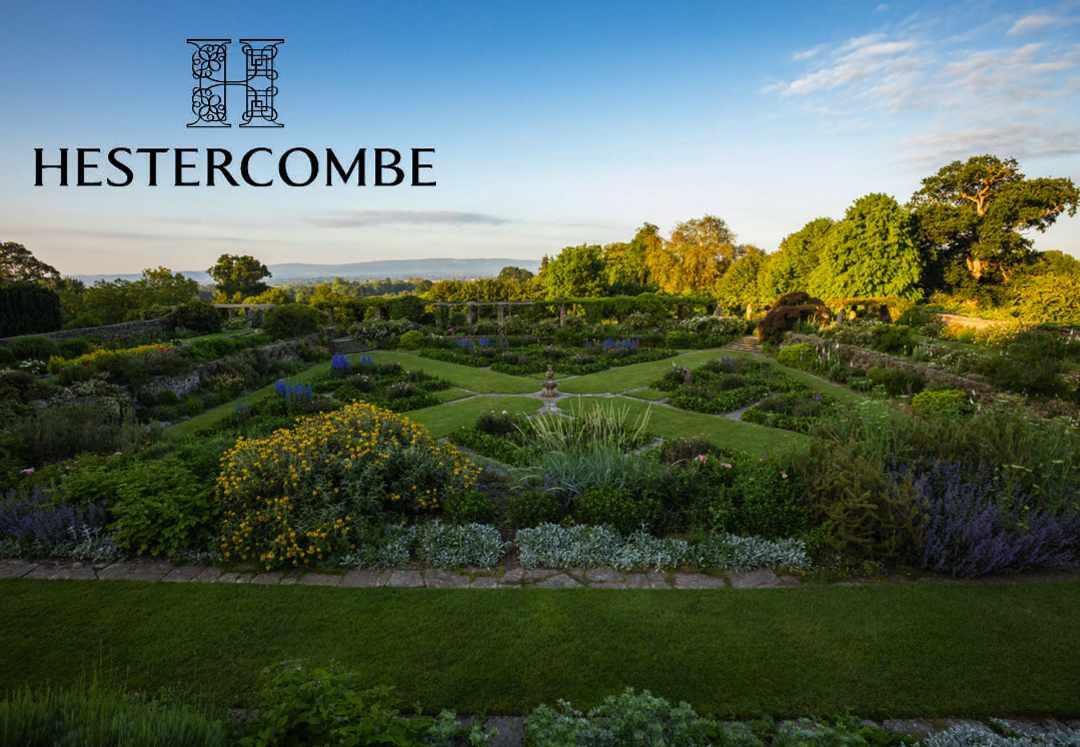
Nestled at the foot of the Quantock Hills in Somerset, Hestercombe encompasses 50 acres of unique and glorious gardens. Showcasing 300 years of garden design in one inspiring estate, you’ll discover a Georgian Landscape Garden, designed by Coplestone Warre Bampfylde, alongside a Victorian Shrubbery and Terrace o�ering magnificent views of the Somerset countryside, as well as Edwardian Formal Gardens displaying a magnificent collaboration between Gertrude Jekyll and Sir Edwin Lutyens. hestercombe.com/your-visit/gardens | 01823 413923
Malting Farm
Stay in one of Malting Farm’s three bespoke, oak-framed cabins just o� the north Essex coast. Designed, built and lovingly styled by Sammy and Will, the cabins make the perfect retreat from which to explore the Essex and Su�olk borders.

Tucked into a quiet corner of their working, family farm; each cabin is nestled into an old winding water meadow between

fields and fishing lake with private hot tubs, underfloor heating and king sized beds for your every comfort.
Malting Farm is perfectly located, close to both the stunning East Anglian coastline and the scenic Dedham Vale; there’s so much on your doorstep to explore and enjoy. From fish’n’chips on Frinton-onSea’s golden sandy beaches, to cream tea

stops while walking through Constable country’s Dedham Vale AONB.
The cabins are also only three miles from Beth Chatto’s award winning gardens and a stone’s throw from the Markshall Estate and Arboretum. Slightly further afield enjoy a visit to RHS Hyde Hall or Helmingham Hall Gardens.
maltingfarm.co.uk | 07908 401111
TRAVEL GUIDE
Call us FREE for an instant quote - It’s easy! 0808 196 3255 Friendly UK based team waiting to help you Travel Insurance with NoAge Limits! Goodtogoinsurance.com is a trading name of Ancile Insurance Group Limited. Authorised & Regulated by the Financial Conduct Authority - No. 471641. *Discount applies to base premium only and not to any medical screening premiums or optional extras. Discount valid until 31 March 2023. 20% OFFBASE QuotePREMIUM garden20code * Experts in Cover for Medical Conditions 24 Hour Medical Emergency Support Cover for Cruise Holidays Cover for Covid-19 Excellent
Aurora Expeditions

For more than 30 years our expert Expedition Team have always been about sharing their knowledge and understanding of some of the most remote and unspoiled destinations and it doesn’t get more remote and unspoilt than Antarctica. Our purpose-built small ships have an average of just 132 passengers per expedition and are geared for adventure from polar snorkelling* and scuba diving*, to kayaking*, bird watching, photography, ski touring* and snowshoeing*.
The real adventure happens o�-ship. Our expeditions are all about more opportunities for you to get o�-ship to explore and connect with the remarkable destinations we go to.
We have the most comprehensive activity programme, supported by the most experienced Expedition Team on hand, dedicated to making each experience action packed and immersive in the natural environment.
For us, it’s all about connecting you with the natural environment because when you disembark, we want you to be richer in your knowledge and understanding of our planet than you were when you stepped aboard.
Respectful travel is at the heart of our ethos. We are about supporting and empowering people, communities, the places we visit, the extraordinary wildlife we encounter and the nature we connect with.
Join us for an expedition of a lifetime to Antarctica, the last great wilderness on earth. Because if you want to see something you’ve never seen, you have to go somewhere you’ve never been.

For more information and to book, contact your preferred travel advisor or Aurora Expeditions.

auroraexpeditions.co.uk
info@auroraexpedions.co.uk
0 808 189 2005
ADVERTISEMENT FEATURE
An Aurora Expedition to Antarctica is literally life changing. Take the ocean less travelled and have an ice day.
*Optional activities are available on select voyages, at additional cost.
Winter walks
Blow away the cobwebs with a great winter walk

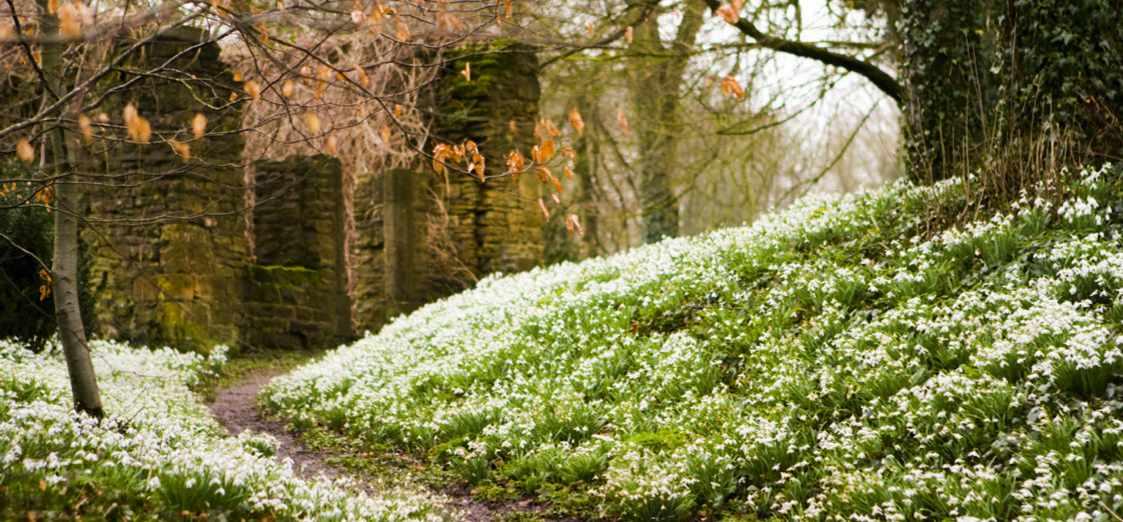
1CERNEY HOUSE GARDENS
Cerney House gardens is a romantic English garden, with a beautiful secluded Victorian walled garden. The late winter season features snowdrops and hellebores. Enjoy our woodland walk and nature trail, and discover our medicinal herb garden and children’s trail. Dogs welcome. North Cerney Cirencester GL7 7BX | 01285 831300 | cerneygardens.com
2CHELSEA PHYSIC GARDEN
Visit London’s oldest botanic garden for its annual Christmas Fair. A festive celebration hosting over 100 curated stands, within the beautiful surroundings of the Garden. Thursday 24 November – Sunday 27 November. 66 Royal Hospital Road, London SW3 4HS | chelseaphysicgarden.co.uk
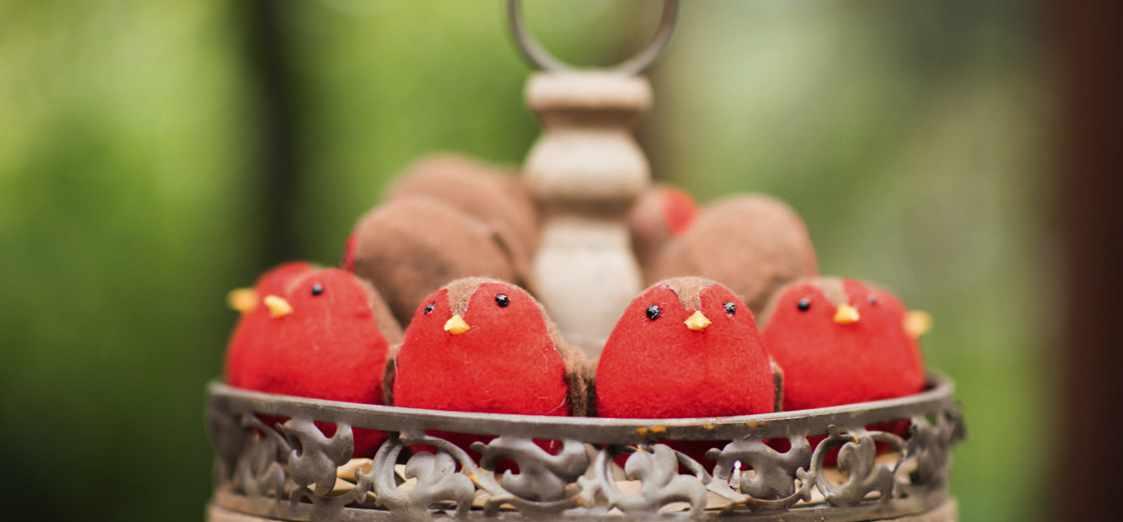
3

4DYFFRYN GARDENS, NATIONAL TRUST
On the outskirts of Cardiff, these peaceful gardens cover more than 55 acres. Highlights include grand vistas, a sprawling arboretum, intimate garden rooms, kitchen gardens, glasshouse, café, shop, log stack play areas and many little surprises. There’s so much to discover at Dyffryn Gardens. Vale of Glamorgan CF5 6FZ | nationaltrust.org.uk/dyffryn-gardens

3PICTON CASTLE GARDENS
Picton Castle Gardens provides the perfect setting for a winter amble around some of the most beautiful gardens in Wales. Areas of interest include the recently renovated walled garden and the woodland areas, with endless paths to explore and seasonal planting to enjoy.

Pembrokeshire SA62 4AS | info@pictoncastle.co.uk | pictoncastle.co.uk
5DENMANS GARDEN
Former home of gravel gardening pioneer, Joyce Robinson, and celebrated landscape designer, John Brookes MBE, Denmans is an award-winning, Grade II, RHS Partner Garden renowned for its curvilinear layout, structure, complex plantings, gravel gardens, Walled Garden, ponds, Conservatory and plant centre. Fontwell, Nr. Arundel BN18 0SU | 01243 278950 | denmans.org
ADVERTISEMENT FEATURE
5
2
1 4
from only £23.99 £23.99
Christmas comes around only once, but our magazines can last all year.

Call 0330 053 8660† quote code X22AD Visit buysubscriptions.com/christmas 2 EASY WAYS TO ORDER This offer closes on the 31st December 2022 and is valid for UK delivery addresses only. The discounts shown are savings calculated as a percentage of the full shop price, excluding Radio Times and Match of the Day which are calculated as a percentage RI WKH %DVLF $QQXDO 5DWH )RU RYHUVHDV UDWHV YLVLW ZZZ EX\VXEVFULSWLRQV FRP $OO &KULVWPDV JLIW VXEVFULSWLRQV ZLOO VWDUW ZLWK WKH���UVW LVVXH DYDLODEOH LQ -DQXDU\�������6KRXOG WKH PDJD]LQH FKDQJH LQ IUHTXHQF\ ZH ZLOO KRQRXU WKH QXPEHU RI LVVXHV DQG QRW WKH WHUP RI WKH VXEVFULSWLRQ���8. FDOOV ZLOO FRVW WKH VDPH DV RWKHU VWDQGDUG���[HG OLQH QXPEHUV��VWDUWLQJ����RU�����DQG DUH LQFOXGHG DV SDUW RI DQ\ LQFOXVLYH RU IUHH PLQXWHV DOORZDQFHV��LI RIIHUHG E\ \RXU SKRQH WDULII���2XWVLGH RI IUHH FDOO SDFNDJHV FDOO FKDUJHV IURP PRELOH SKRQHV ZLOO FRVW EHWZHHQ��S DQG���S SHU PLQXWH /LQHV DUH RSHQ 0RQ WR )UL��DP����SP���5DGLR 7LPHV LV SXEOLVKHG ZHHNO\ DQG 5DGLR 7LPHV VXEVFULSWLRQV DUH IRU����LVVXHV 7KH %DVLF $QQXDO 8. 6XEVFULSWLRQ UDWH IRU 5DGLR 7LPHV LV e�����7KLV SULFH LV IRU RQH \HDU DQG LQFOXGHV WKH &KULVWPDV GRXEOH LVVXH DQG D FRQWULEXWLRQ WRZDUGV SRVWDJH 0DWFK RI WKH 'D\ LV SXEOLVKHG EL ZHHNO\ DQG 0DWFK RI WKH 'D\ VXEVFULSWLRQV DUH IRU����LVVXHV 7KH %DVLF $QQXDO 8. 5DWH IRU 0DWFK RI WKH 'D\ LV e����IRU����LVVXHV 12 ISSUES FOR £34.99 SAVE 49% FOOD HOMES AND GARDENING LIFESTYLE SCIENCE AND NATURE CRAFT HISTORY SPORT 10 ISSUES FOR £23.99 SAVE 44% 13 ISSUES FOR £34.99 SAVE 51% 12 ISSUES FOR £44.99 SAVE 39% 13 ISSUES FOR £34.99 SAVE 51% 13 ISSUES FOR £31.99 SAVE 51% 13 ISSUES FOR £23.99 SAVE 38% 12 ISSUES FOR £32.99 SAVE 50% 13 ISSUES FOR £29.99 SAVE 46% 13 ISSUES FOR £39.99 SAVE 56% 14 ISSUES FOR £34.99 SAVE 55% 12 ISSUES FOR £37.99 SAVE 47% 13 ISSUES FOR £31.99 SAVE 51% 13 ISSUES FOR £31.99 SAVE 51% 13 ISSUES FOR £39.99 SAVE 53% 13 ISSUES FOR £34.99 SAVE 51% 13 ISSUES FOR £37.99 SAVE 51% 13 ISSUES FOR £34.99 SAVE 51% 12 ISSUES FOR £44.99 SAVE 6% 13 ISSUES FOR £49.99 SAVE 47% 13 ISSUES FOR £44.99 SAVE 44% Gift
Subscriptions
�")"�/�1" 1%" %,)&!�60 4&1% ,2/ 0-" &�)��"01�0"))"/0��+! $&3"���$&���1%"6 4&)) /"�))6��--/" &�1"�
��1�0 1%" $&� 1%�1 (""-0 $&3&+$� �� 0 $&���1%�1 $&3&+$�� � +"4 *�$�7&+" "3"/6 *,+1% 1, ),,( #,/4�/! 1,� ��+"4 * �7&+" #,/4 /! 1, - Elizabeth
SEE OUR FULL RANGE OF MAGAZINES ONLINE
READER OFFER
15% off fruit trees from Pomona Fruits*

Pomona Fruits has selected this range of fruit trees to give great results in UK gardens. To ensure your trees establish well, trees are supplied bare-rooted at 1.2-1.5m in height. They are grafted on to semi-dwarfing rootstocks making them suitable for smaller gardens.
Choose any two apple cultivars to ensure good pollination (or make sure you have another apple in your own garden or nearby). Self-fertile cultivars do not require a second tree for pollination.
• Apple ‘Egremont Russet’ – APL005
OFFER PRICE £20.35 (RRP £23.95)This popular russet apple, with its distinctive nutty flavour, was raised in England in 1872. Resistant to scab, mildew and canker. Can be grown successfully throughout the UK. Season: October – December.
• Apple ‘James Grieve’ – APL010
OFFER PRICE £20.35 (RRP £23.95)
A classic dessert apple, raised in Scotland in 1893. The attractive, bright red-flushed fruits have a crisp yet melting flesh with plenty of juice and excellent flavour. Picked early, the fruits can also be cooked and are delicious
stewed. Good resistance to late frosts. Does very well in the north. Resistant to mildew. September – October. Self-fertile.
• Apple ‘Kidd’s Orange Red’ – APL011
OFFER PRICE £20.35 (RRP £23.95)
Raised in 1924, this is one of the finestflavoured dessert apples, similar to ‘Cox’s Orange Pippin’ but sweeter in flavour with a more reddish flush. Strongly aromatic with a good balance of sugar and acidity. Produces very attractive blossom. November – January.
• Pear ‘Concorde’ – PER001
OFFER PRICE £20.35 (RRP £23.95)
An excellent pear raised from a cross between ‘Doyenné du Comice’ and ‘Conference’, with the best attributes from both its parents. The medium-large, pale-green fruits have a smooth, juicy flesh with a sweet, pleasant flavour. Suitable for dessert and culinary use. Crops heavily and reliably from an early age. October – January. Self-fertile.
• Plum ‘Opal’ – PLM002 OFFER PRICE £21.20 (RRP £24.95)
An excellent, early dessert plum, similar to ‘Victoria’ but with better flavour. Medium-
sized, reddish-purple, thin-skinned fruits with golden flesh and superb sweet flavour. One of the most reliable cultivars. Can be grown in the north. Early August. Self-fertile.
• Quince ‘Vranja’ – MSC029 OFFER PRICE £23.35 (RRP £27.50)
A popular cultivar, which originates from Serbia more than 200 years ago. It produces large, pale green-yellow fruits with a strong quince aroma. Delicious for flavouring and making jellies and preserves. The pink-tinged flowers are particularly beautiful and are up to 5cm wide. October – December. Self-fertile.
HOW TO ORDER*
• By phone Call 01255 440410 with your credit or debit card, quoting offer code GL11FP
• Online Go to gardensillustrated.com/offers and click on the Pomona Fruit offer link. Offer closes 31 December 2022.
*Offer available to UK readers only (excluding Northern Ireland and certain other postcodes). P&P charge to mainland UK (excluding Scottish Highlands) of £8.95 added to total order. Plants despatched from late November.
Apple ‘James Grieve’.
Apple ‘Egremont Russet’.
Apple ‘Kidd’s Orange Red’.
Plum ‘Opal’.
Pear ‘Concorde’.
Quince ‘Vranja’.
NOVEMBER 2022 GARDENSILLUSTRATED.COM 121
Rewards PROGRAMME
�e curtain rises on another great selection of o � ers from the Gardens Illustrated Reader Rewards scheme
GIVE A LOVED ONE THE GIFT OF THEATRE
Theatre Tokens start from just £5. Buy yours at https://rb.gy/wforqy
HOW IT WORKS
1Browse
Take a look at some of our latest fantastic o�ers, covering gardening, lifestyle, travel, food and drink, and more.
2 Redeem
Follow the link provided in each o�er and apply the o�er code when placing your order.
3 Find even more
Go to gardensillustrated.com/o�ers to find the full range of discounts, deals and competitions available to you.
SAVE £££
FREE CHAMPAGNE FOR GROUP BOOKINGS
Use code GGCHAM at immersivegatsby.com
BEST AVAILABLE SEATS @SOHOPLACE FOR £25
For £25 tickets to see Marvellous, go to sohoplace.org and use code GARDENS25
WIN A PAIR OF TICKETS TO SEE MUSICAL SENSATION SIX
Enter our prize draw to win tickets to this award-winning musical at bit.ly/3SR8GIo
£35 TICKETS FOR THE BEST EXOTIC MARIGOLD HOTEL

Head to marigoldshow.com/magazineo�er to book your seats.
To browse our full selection of o�ers, go to gardensillustrated.com/o�ers
122 GARDENSILLUSTRATED.COM NOVEMBER 2022
15% OFF YOUR FIRST ORDER WITH DUKESHILL
Start planning your Christmas meals with this delicious o�er from DukesHill. Enjoy a 15% saving on your first order when you spend over £60, plus free delivery, on DukesHill’s extensive range. You’ll find hams, cured meats, salmon, cheeses, chocolates, wines, amazing desserts and a wonderful food hall, including some of the UK’s best bacon and sausages. There’s also a fantastic selection of festive treats including hampers and Christmas puddings. Just visit the DukesHill website, choose your favourite products, add to cart, select your delivery date (before 10 December) and then just relax while DukesHill delivers your festive delights.

Head to dukeshillham.co.uk and use code GARDEN15 at checkout to get your 15% discount, or call 0345 3700 129 to place your order.
GET COOKING WITH DUKESHILL
DukesHill shares a great range of recipes on its website, helping you to create enticing meals using its premium ingredients.
SAUSAGE & LEEK GRATIN
Serves: 4 Time: 15 mins prep plus 1 hour cooking
INGREDIENTS
400g pork sausages
600g potatoes, peeled and sliced thickly 3-4mm
25g butter
1 onion, sliced
4 leeks, sliced 40g plain flour
450ml milk
3 sage leaves, chopped
2 sprigs thyme, leaves only 120g Cheddar, grated
DIRECTIONS
1 Bake sausages at 200°C/180°C fan/gas mark 6 for 20 minutes, turning halfway. When cool slice into 2.5cm thick slices.
2 Cook potatoes in boiling water for 7 minutes. Drain.
5% DISCOUNT ON THE CRUISE OF YOUR DREAMS
Set sail with Saga for a holiday of a lifetime. Designed specifically for Saga customers, these boutique river and ocean cruises on its smaller ships will help you escape the crowds and discover lesser-known destinations across the world.

For a free brochure and to find out more go to saga.co.uk/gardens-2021
10% OFF ADVENTURES WITH HURTIGRUTEN EXPEDITIONS

Hurtigruten Expeditions is the world leader in exploration travel. Its mission is to o�er sustainable nature experiences at the polar edges of the world where you can be up close and personal with wildlife, culture and incredible scenery.
Go to hurtigruten.co.uk and use code HRG-GIL for your 10% discount
3 Melt butter in a large frying pan, add onion and leeks, sage and thyme. Cook until softened.
4 Add flour, cook for 1 minute, then add milk, whisking continuously, until sauce thickens, boils and is smooth.
5 Remove from heat, add 75g cheese and stir until melted. Transfer the sliced sausage to an ovenproof dish, top with the cheese, onion and leek sauce. Scatter the potato slices on top, sprinkle over remaining cheese.

6 Bake for 30 mins until browned.
To browse our full selection of o�ers, go to gardensillustrated.com/o�ers
NOVEMBER 2022 GARDENSILLUSTRATED.COM 123
GA R DENS
Join Gardens Illustrated online

Don’t miss all the exclusive features, videos, interviews, masterclass news and more at




gardensillustrated.com
Head to the Gardens Illustrated website for insight into gorgeous gardens and to discover the best seasonal plants. You’ll also find practical gardening guides, the latest horticultural news and details of forthcoming events – plus news of our online masterclasses, offers and competitions. Follow us on Instagram for inspiration from gardens throughout the world and join our garden community on Twitter and Facebook. And be sure to sign up to the weekly Gardens Illustrated newsletter and fortnightly Kitted Out newsletter, which brings you our pick of the best gardening products.
gardensillustrated.com
Crossword
ACROSS
1 Genus of bent grass – it sags or collapses! (8)
6 Genus of caraway – in Jamaica, Rumex (5)
9 Last alternative… means of dealing with slugs? (4)
10 Latin term meaning ‘dwarf’ –Linnaeus changed (no lie)! (5)
11 Genus of the herb, spignel – mother includes last of borage (4)
12 Vegetables known by well-informed people! (6)
13 Gorse smells of this large tropical tree fruit (7)
15 A golden-leaved Carex oshimensis –always unwell, love! (8)
17 Gladiolus with white, pink-edged flowers – PS ‘Echo’, possibly (6)
19 Pollen-producing flower part (6)
21 Lady’s preceding this type of orchid! (7)
23 Hand-shaped, eg like rodgersia leaves (7)
24 Boundary bushes – initially, hazel borders (6)
25 Fruit trees, etc with branches trained in a Y shape – they circulate air (4)
26 ___ hellebore, Helleborus niger, refers to its roots, not its white flowers! (5)
27 Type of soil Doris removed from mixed Corydalis (4)
28 Dubious… light condition liked by eg astilbe? (5)
29 Lagging behind, like a hanging basket plant? (8)
DOWN
2 Prolific, hardy, Solanum crispum –named for Dublin’s National Botanic Gardens (9)
3 In the open air… to do our dispersing (7)
4 Viburnum __ (contained in its common name, laurustinus) (5)
5 Genus of cineraria – niece’s rearranged with love (7)
6 Because, in short, it’s a salad plant (3)
7 A named foxtail lily’s… love affair (7)
8/21 World class NT gardens in Co. Down – fantastic team won trust (5,7)
14 Eg schlumbergeras and peyotes (5)
16 A Benton iris with violet-edged white falls – in tricolor, naturally (5)
18 Pure white dahlia tipped pinkmauve, named for its fine pottery appearance (9)
20 Genus of snowdrop tree or ‘Silverbell’ – gets Sheila A excited (7)
21 See 8 down
22 Stalk of an inflorescence’s single flower (7)
23 Reaps unusual fruits of Pyrus communis tree (5)
24 Genus of Tasmanian shrubs with leathery or needle-like leaves – some shake alarmingly! (5)
26 Common name of Laurus nobilis – a coastal feature (3)
• Solutions to this issue’s crossword will be printed in the December issue

SOLUTIONS TO
CLOTHBOUND
Cost from £9.99 each (inc p&p). Subscriber discounts available – see below for details.
TO
GARDENS ILLUSTRATED PRINTED ISSUES ORDER FORM




Complete this form and send to: Gardens Illustrated, Back Issues, PO Box 3320, 3 Queensbridge, Northampton NN4 7BF (You may photocopy this form).
I would like to order copy/copies of issue(s) SUBSCRIBERS NON-SUBSCRIBERS
n UK – £5.29 per copy n UK – £6.49 per copy
n EU – £5.99 per copy
n EU – £7.49 per copy
n Rest of world – £6.99 per copy n Rest of world – £8.49 per copy
I would like to order slipcase(s)
n UK – £8.49 each
n EU – £9.45 each
n UK – £9.99 each
n EU – £10.50 each
n Rest of world – £10.80 each n Rest of world – £12 each Postage & packaging is included in all prices.
n I enclose a cheque/international money order made payable to Our Media Ltd for £ n I would like to pay by credit/debit card, please debit my card Visa n Mastercard n
n n n n n n n n n n n n n n n n
Expiry date n n n n Issue no. (if shown) n n
Signature
YOUR DETAILS
Title Forename
Surname Address
Post/Zip code
Daytime tel no.
Email address
Subscriber number (if applicable)
email. You can unsubscribe at any time.
Please tick here if you would like to receive these n
We would also like to keep in touch by post and telephone about other relevant o�ers and promotions from our publisher Our Media Limited. If you’d rather not be contacted this way please tick here post n phone n .For more information about how to change the way we contact you, and how we hold your personal information, please see our privacy policy, which can be viewed online at policies.immediate.co.uk/privacy
BUYING BACK ISSUES OF
ORDER PRINTED COPIES OR SLIPCASES
VERSION
money when you subscribe to the digital edition –see page 20 PRINT VERSION
can buy printed issues of the magazine published up to six issues ago at buysubscriptions.com or see below for details.
DIGITAL
Save
You
SLIPCASES
SUBSCRIBERS NON-SUBSCRIBERS
Date / / SINGLE ISSUES
CLOTHBOUND SLIPCASES PAYMENT DETAILS
" KEEP IN TOUCH Gardens Illustrated (published by Our Media Limited) would like to send you updates, special o�ers
by
and promotions
U N I T E D K I N G D O M UNITED KINGDOM 0 3 3 3 0 1 6 2 1 14 03330 162114 O U TS I D E U K OUTSIDE UK + 4 4 1 6 0 4 97372 2 +44 1604 973722
OCTOBER
ACROSS 1 Ageratum 6 Carum 9 Herb 10 Eurya 11/15 Mini petunia 12 Strong 14 Needles 16 Cordon 17 Repens 19 Rosebud 21 Inkcaps 23 Sea pea 25 Pepo 26 Toils 28 Bare 29 Tudor 30 Gravetye. DOWN 2 Ghent 3 Ribwort 4/15 The President 5 Maranta 6 Crane 7 Rambler 8 Monkshood 13 Genus 16 Casts 18 Eckford 19 Resting 20 Bramble 24 Early 27/22 Sea aster.
CROSSWORD
WILL YOU PROFIT FROM PATIENCE?
As an Investment Trust that’s been trusted for generations since 1888, we know a few things about long-term investing.

Our research shows that impulsive investors could be missing out on significant potential growth (we call this the ‘Impatience Tax’).
In comparison we found that patient investors could have benefitted from added growth (up to 141%) based on analysis of past performance. All the more reason to see patience as a value, not just a virtue.*
Find out how you too could profit from patience.
alliancetrust.co.uk/patience

* The Profit from Patience Report, Alliance Trust, September 2022 alliancetrust.co.uk/patience
When investing, your capital is at risk. The value of your investment may rise or fall as a result of market fl uctuations and you might get back less than you invested. TWIM is the authorised Alternative Investment Fund Manager of Alliance Trust PLC. TWIM is authorised and regulated by the Financial Conduct Authority. Alliance Trust PLC is listed on the London Stock Exchange and is registered in Scotland No SC1731. Registered office: River Court, 5 West Victoria Dock Road, Dundee DD1 3JT. Alliance Trust PLC is not authorised and regulated by the Financial Conduct Authority and gives no financial or investment advice.
Nursery guide
Get inspired for the winter season with the best plant and bulb suppliers
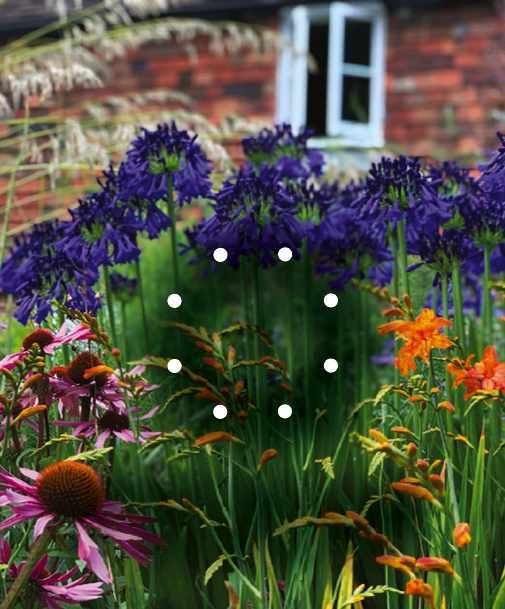

BLUEBELL ARBORETUM & NURSERY
Specialists in hardy trees, shrubs and climbers including a huge selection of unusual species and cultivars. Informative website and a reliable mail-order service is available. bluebellnursery.com


01530 413700
BUNKERS HILL PLANT NURSERY
A family-run plant nursery near Woodstock, Oxfordshire, with an old-fashioned feel and traditional values. We have a huge selection of spring bulbs, bareroot roses and so� fruit available to pre-order for Nationwide Delivery.
bunkershillgardenshop.co.uk
01869 331492
OLD COURT NURSERIES
Specialist family-run nursery and garden. Catalogue available on request or online. Order now for May 2023 delivery of Michaelmas daisies and more.
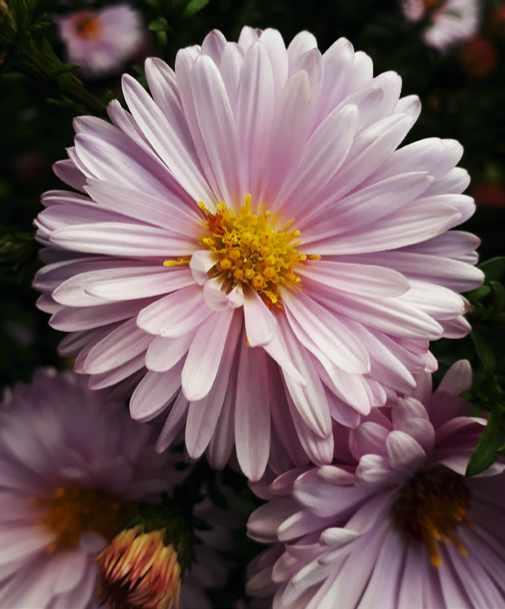
autumnasters.co.uk
01684 540416
MEADOWGATE NURSERY
A family-run, independent nursery, specialising in ornamental grasses. Over ten years’ experience of growing a diverse range of grasses. We o�er tailored advice on the use and care of the grasses we sell. meadowgatenursery.co.uk

07736 523262
BINNY PLANTS

2022 Peony catalogue online. More than 300 herbaceous, intersectional, and tree peonies, as well as thousands of perennials, grasses, shrubs and ferns are now available for delivery nationwide. binnyplants.com contact@binnyplants.com
WOOTTENS OF WENHASTON
Specialists in irises, pelargoniums, auriculas and hemerocallis, organically grown at the nursery in Su�olk. Plus, handcra�ed fresh Christmas wreaths available via mail order. woottensplants.com

01502 478258
PELHAM PLANTS
Quality perennials, lovingly propagated and grown in peat-free compost, at our charming woodland-edge nursery in Sussex. Mail order and downloadable catalogue available. Visits by appointment only. pelhamplants.co.uk pelhamplants@gmail.com
ASHWOOD NURSERIES
An independent nursery situated in the West Midlands o�ering many home-grown, beautiful plants. Open seven days a week. Mainland UK mail-order service available. ashwoodnurseries.com
01384 401996
ADVERTISEMENT FEATURE
Christmas gift guide

Perfect gift ideas for the festive season – from beautiful craftsmanship to handmade pots and practical accessories
POTTER & MOOCH
Hand-cra�ed climber earrings made in West Sussex. Designed for a single piercing due to the small wire bar then holds them upright. Hypoallergenic and nickel free. �e perfect gi�, loved by all ages. Starting at just £24 a pair. Code GI15 for 15% o� your �rst order. Visit us online or call for a brochure.

01903 331744
potterandmooch.co.uk
ONGLEY-SNOOK DESIGNS
A small, family-run business on the Sussex coast making bespoke glass pieces for the garden.
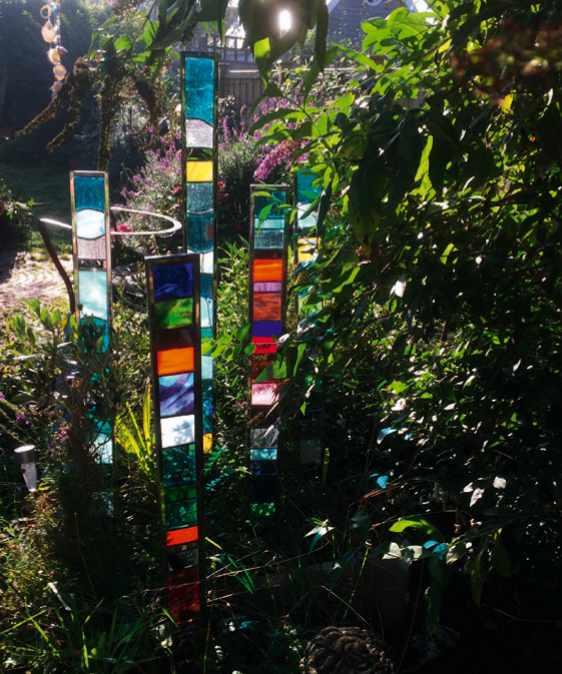
Fabulous, fused-glass �sh, stainless steel, stained-glass columns, fun, fused-glass lollipops. Fused-glass birdbaths. We have the perfect unique gi� for the gardener in your life. �ere is something to suit every pocket.
07989 074641
ongley-snookdesigns.com
THEATRE TOKENS
Give the gi� of theatre this Christmas. �eatre Tokens are gi� cards and egi�s with no expiry date that can be used at over 270 theatres nationwide, including all of London’s West End. Treat someone to a show at their local theatre, or a trip to London’s theatreland. Know a mega fan? Just a £5 token is enough for a seat upgrade on their next visit.

theatretokens.com
DEVENICK DESIGNS
Designed and hand made in Scotland, Jenny Wren makes the perfect gi� for any bird or garden enthusiast. She is easy to mount, supplied on a round base which has a hole for screwing or nailing to a post top. She can also sit quite happily on any surface. Jenny’s dimensions: height 14cm, width 12cm.

07720 841394
devenickdesigns.co.uk
BACKDOORSHOES
Looking for an inspirational gi� this year then look no further! Backdoorshoes garden clogs are lightweight, waterproof and durable. Perfect to slip on and nip out to the garden, put out the bins or walk the dogs. With over 30 di�erent designs suitable for Men or Ladies, there is something for everyone on your list… UK sizes 3-14.

01202 232357
backdoorshoes.co.uk
PERILLA ALPACA SOCKS
Keep toes cosy this winter with alpaca short ribbed socks, perfect for gardening. Perilla produce a magni�cent range of yarn-dyed alpaca socks in a wonderful palette of colours suitable for all activities and super cosy bed socks too. All socks can be gi� boxed – everyone loves proper socks for Christmas.
01886 853615 perilla.co.uk
RUTH MOILLIET SCULPTURE
Ruth Moilliet Sculpture produces highly �nished sculptures inspired by the plant kingdom. Clients can choose from an existing portfolio or commission a bespoke piece. For smaller works follow the purchase link on the website. Featured artwork – Allium Stems – an a�ordable addition to any home or garden.
sculpture@ruthmoilliet.com ruthmoilliet.com

ADVERTISEMENT FEATURE
DECEMBER
• Rekindle a love for small and slow-growing conifers with top picks for the garden

• Atmospheric Christmas decorations ideas from Verde Flower Co, using dried and foraged plants and foliage
• Cloud-pruned trees and clipped spheres define a coastal garden set among native bush near Melbourne, Australia
• Nature turns on its festive lights in a Berkshire garden
• Gorgeous festive gifts for gardeners
ON SALE 1 DECEMBER
Save money when you subscribe to the digital edition – see page 20. Also in selected Waitrose, Sainsbury’s and Tesco stores, as well as WHSmith, and all good magazine retailers.
NOVEMBER 2022 GARDENSILLUSTRATED.COM 129
JASON INGRAM, ANDREW MONTGOMERY, CLAIRE TAKACS, RICHARD BLOOM.
BLACK MAGIC
Mulching and composting are at the very heart of successful growing, argues Alice Vincent, and the dark alchemy of turning waste into black gold is an art every gardener should learn
If a lot can be gleaned about a garden from its composting system, more can be learned about its custodian. Perhaps there’s a plastic bin that looks like a Dalek, or a fancier one that promises a certain kind of airflow, or a thermometer that must be meticulously watched. The presence of bays, rather than bins, is a clear sign of serious composting. Look for the blankets on top: there will be crumbly black gold inside. And those with no composting system at all? They’re not for judgement, but rather gentle pity: as composters know, it’s often the best bit of the garden.

Mulching season is upon us. As growth slows down over winter and beds begin to bare themselves, laying on a thick spread of the good stuff is a fine way to break a sweat against the plummeting temperatures. In the words of garden writer Laetitia Maklouf, the best time to mulch is whenever you think of it, although it tends to be done over the cooler months because it’s easier not to have to fuss around new shoots. Mulching on top of a frost or in the midst of a heatwave isn’t ideal, either. But now? Now is good.
Last year I mulched from the compost heap, something I felt very smug about at the time but less so in the heat-stricken summer that followed, when it became apparent that my
compost wasn’t – yet – as potent as the wellrotted horse manure I’d used the year before.
This year, with the garden in the midst of hard landscaping upheaval, I’ve bitten the bullet and invested in Dalefoot’s Lakeland Gold ‘Clay-Buster’ – a peat-free soil conditioner that I’ve heard is well-worth the price tag. I’ll be applying a layer once the contractors have moved out and the plants have been put into the new beds. I’ve redesigned the garden with dry summers in mind. Mulching well – now but in spring too – is as key as the planting palette as it helps plants retain moisture.
Technically, you can mulch with all sorts: old grass clippings, leaf mould, mushroom compost, wood chippings. It’s essentially about funnelling organic matter into the soil to feed the plants that will grow there next year. It may sound simple, and unsexy, but I think that’s exactly why people get more obsessed with compost and mulching the more they garden. Raising a bed of annuals from seed to bombast in half a year? That’s easy in comparison to keeping a perennial herbaceous bed looking good season in, season out. Mulch and compost are among those magic, dark secrets of gardening that require persistence, knowledge and experience. They’re where it all begins.
People often realise this after having grown for a few seasons – perhaps in a container garden or even on a balcony – and it can be lifechanging. I suspect Bette Midler wasn’t joking when she said that the epiphany, the ‘kind of transcendent, magical experience that lets you see your place in the big picture’ she’d spent her life waiting for occurred as a result of her first compost heap. To put food scraps and deadheadings in and get goodness out is one thing; to realise what you grow is part of a larger, closed-circle system is quite another.
I’m not there yet. My compost bay aspirations are destined for another garden: my veg peelings and cardboard boxes go in a 200-litre Aerobin, which I tucked into the paved nook around the side of the house before I did anything else in the garden. While it’s a good start, it’s not always large enough to accommodate my waste nor feed the garden. Plus, the first six months were a disaster: I created a sticky, lumpy goo that smelled like farts. But in time (and a generous offering of chicken poo and sawdust from a friend in the countryside), the compost crumbled. When something fails in the garden, gets nibbled to bits or cut back, it ends up here. In the compost, it gets another chance. I like knowing that it’ll return to the soil, where it can contribute in another way to make something else beautiful. n
130 GARDENSILLUSTRATED.COM NOVEMBER 2022
ILLUSTRATION BY ALICE PATTULLO


®The Royal Horticu tural Society The Royal Horticultural Society, and its logo, are trade marks of The Royal Horticu tural Society (Registered Charity No 222879/SC038262) and used under licence from RHS Enterprises Limited in the Made wi� Pride Co�wold s The RHS Portico If you love your garden, you’ll know it takes time and care to create something truly wonderful. That’s why we put our faith in traditional joinery techniques such as mortise and tenon joints to give our greenhouses strength and integrity Using only the highest quality Wester n Red Cedar Handcrafted in our Cotswold workshops. No wonder Gabriel Ash are the only timber greenhouses endorsed by the Royal Horticultural Society (RHS) For a Free Brochure call 01242 662 926 or visit gabrielash.com See us at selected independent Garden Centres, RHS Gardens or our Gloucester showroom.








Victorian Manor, Virginia , USA THE HARTLEY COLLECTION Discover the secret of Hartley Botanic by calling UK - 0800 783 8083 or visit www.hartley-botanic.co.uk USA - 781 933 1993 or visit www.hartley-botanic.com The only aluminium Glasshouses and Greenhouses endorsed by the RHS ® The Royal Horticultural Society. The Royal Horticultural Society, and its logo, are trade marks of The Royal Horticultural Society (Registered Charity No 222879/SC038262) and used under licence from RHS Enterprises Limited. NOTHING ELSE IS A HARTLEY













































 NATIONAL TRUST IMAGES / JOHN MILLER
Hanging Tulip Lantern, Brushed Brass, £37.99, Waitrose & Partners, waitrosegarden.com
SLEEK Ablington Lantern, large, £52, Garden Trading, gardentrading.co.uk
CLASSIC
Asilah Artisan Moroccan Lantern Duo with TruGlow Candles, £80.99, Lights4fun, lights4fun.co.uk
NATIONAL TRUST IMAGES / JOHN MILLER
Hanging Tulip Lantern, Brushed Brass, £37.99, Waitrose & Partners, waitrosegarden.com
SLEEK Ablington Lantern, large, £52, Garden Trading, gardentrading.co.uk
CLASSIC
Asilah Artisan Moroccan Lantern Duo with TruGlow Candles, £80.99, Lights4fun, lights4fun.co.uk















































 WORDS BENJAMIN POPE ILLUSTRATION CLAIRE HARRUP
WORDS BENJAMIN POPE ILLUSTRATION CLAIRE HARRUP













 WORDS
JENNY BARNES PHOTOGRAPHS RICHARD BLOOM
WORDS
JENNY BARNES PHOTOGRAPHS RICHARD BLOOM





 WORDS RAE SPENCER-JONES PHOTOGRAPHS SIETSKE DE VRIES
WORDS RAE SPENCER-JONES PHOTOGRAPHS SIETSKE DE VRIES







 RHS H5, USDA 4a-8b.
RHS H5, USDA 4a-8b.
 Acer ‘Cascade’
‘Mindavi’)
Acer ‘Cascade’
‘Mindavi’)





 WORDS NOEL KINGSBURY PHOTOGRAPHS MARIANNE MAJERUS
WORDS NOEL KINGSBURY PHOTOGRAPHS MARIANNE MAJERUS
















 As
Lora
objects she finds, including this Victorian runner embroidered with chenille flowers, which she has pinned to her studio wall.
As
Lora
objects she finds, including this Victorian runner embroidered with chenille flowers, which she has pinned to her studio wall.









 WORDS MAT REESE PHOTOGRAPHS JASON INGRAM
WORDS MAT REESE PHOTOGRAPHS JASON INGRAM













































 Design:AdamVetere
Design:AdamVetere











 by Paco Calvo and Natalie Lawrence
by Paco Calvo and Natalie Lawrence









 by Philip Clayton
by Philip Clayton
 by Ben Raskin
by Ben Raskin
 Mary Reynolds Timber Press,
Mary Reynolds Timber Press,









































































